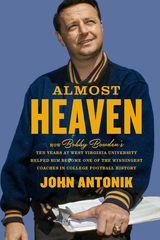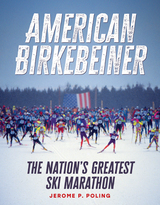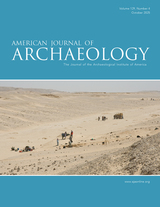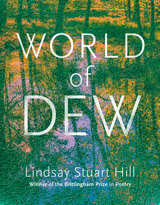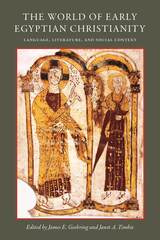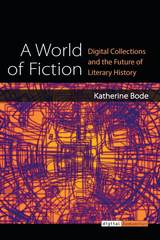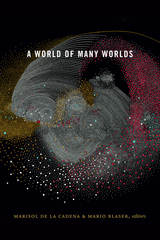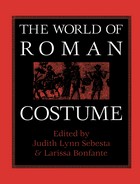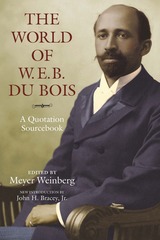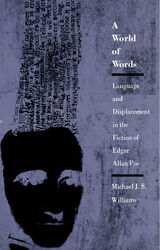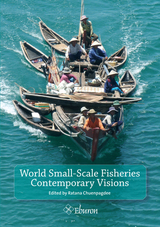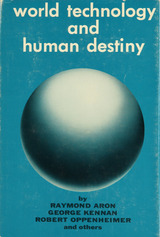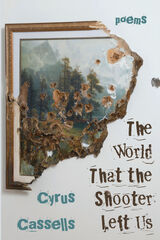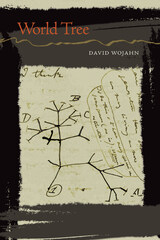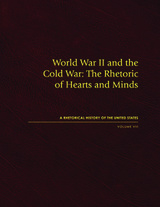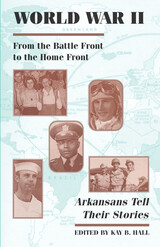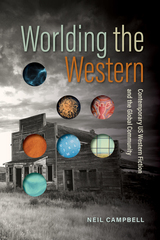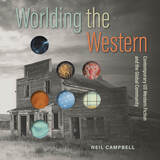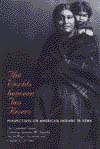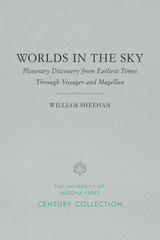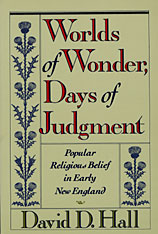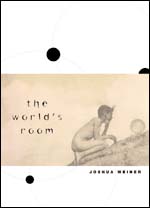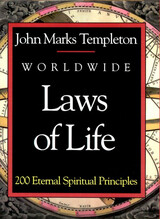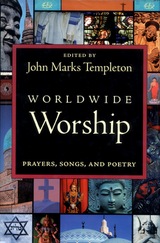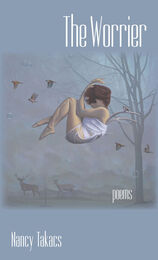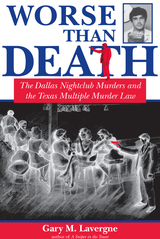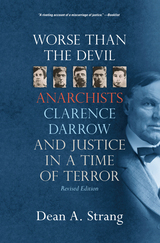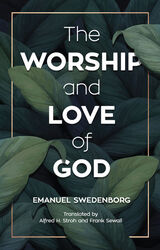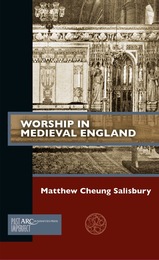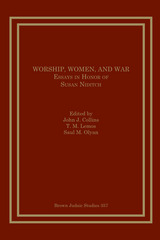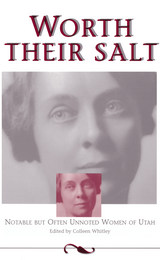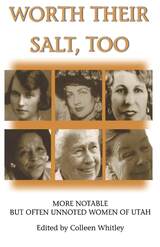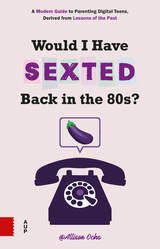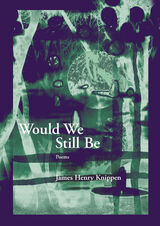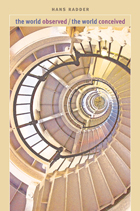 The World Observed/The World Conceived
Hans Radder
University of Pittsburgh Press, 2006
Observation and conceptual interpretation constitute the two major ways through which human beings engage the world. The World Observed/The World Conceived presents an innovative analysis of the nature and role of observation and conceptualization. While these two actions are often treated as separate, Hans Radder shows that they are inherently interconnected-that materially realized observational processes are always conceptually interpreted and that the meaning of concepts depends on the way they structure observational processes and abstract from them. He examines the role of human action and conceptualization in realizing observational processes and develops a detailed theory of the relationship between observation, abstraction, and the meaning of concepts.
This book provides a critical analysis of the work of various other philosophers and their accounts of scientific and ordinary-life observation and conceptualization. Radder discusses the formation and nature of concepts and demonstrates how concepts structure the phenomenal world. He then introduces and defines the notions of extensible concepts, abstraction and nonlocal meanings and explores the philosophical implications of his theory.
The World Observed/The World Conceived offers fresh insights in practices of observation and conceptualization, that will prove useful to many areas of scholarly study including ontology, epistemology, philosophy of language, philosophy of science, science studies, and cognitive science.
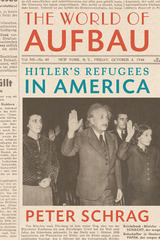 The World of Aufbau: Hitler's Refugees in America
Peter Schrag
University of Wisconsin Press, 2019 Aufbau—a German-language weekly, published in New York and circulated nationwide—was an essential platform for the generation of refugees from Hitler and the displaced people and concentration camp survivors who arrived in the United States after the war. The publication served to link thousands of readers looking for friends and loved ones in every part of the world. In its pages Aufbau focused on concerns that strongly impacted this community in the aftermath of World War II: anti-Semitism in the United States and in Europe, the ever-changing immigration and naturalization procedures, debates about the designation of Hitler refugees as enemy aliens, questions about punishment for the Holocaust and other Nazi crimes, the struggle for compensation and restitution, and the fight for a Jewish homeland.
The book examines the columns and advertisements that chronicled the social and cultural life of that generation and maintained a detailed account of German-speaking cultures in exile. Peter Schrag is the first to present a definitive account of the influential publication that brought postwar refugees together and into the American mainstream.
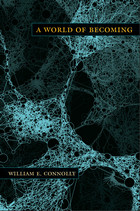 A World of Becoming
William E. Connolly
Duke University Press, 2010 In A World of Becoming William E. Connolly outlines a political philosophy suited to a world whose powers of creative evolution include and exceed the human estate. This is a world composed of multiple interacting systems, including those of climate change, biological evolution, economic practices, and geological formations. Such open systems, set on different temporal registers of stability and instability, periodically resonate together to produce profound, unpredictable changes. To engage such a world reflectively is to feel pressure to alter established practices of politics, ethics, and spirituality. In pursuing such a course, Connolly draws inspiration from philosophers such as Maurice Merleau-Ponty, Alfred North Whitehead, and Gilles Deleuze, as well as the complexity theorist of biology Stuart Kauffman and the theologian Catherine Keller. Attunement to a world of becoming, Connolly argues, may help us address dangerous resonances between global finance capital, cross-regional religious resentments, neoconservative ideology, and the 24-hour mass media. Coming to terms with subliminal changes in the contemporary experience of time that challenge traditional images can help us grasp how these movements have arisen and perhaps even inspire creative counter-movements. The book closes with the chapter “The Theorist and the Seer,” in which Connolly draws insights from early Greek ideas of the Seer and a Jerry Lewis film, The Nutty Professor, to inform the theory enterprise today.
 The World of Benjamin Cardozo: Personal Values and the Judicial Process
Richard Polenberg
Harvard University Press, 1997 "The sordid controversies of litigants," Benjamin Cardozo once said, are "the stuff from which great and shining truths will ultimately be shaped." As one of America's most influential judges, first on New York State's Court of Appeals and then on the United States Supreme Court, Cardozo (1870-1938) oversaw this transformation daily. How he arrived at his rulings, with their far-reaching consequences, becomes clear in this book, the first to explore the connections between Benjamin Cardozo's life and his jurisprudence.
An intensely private man whose friends destroyed much of his correspondence, Cardozo has long eluded scrutiny. But through extraordinary effort Richard Polenberg has uncovered letters, briefs, transcripts, and biographical details to give us a complex living picture of this man whose judicial opinions continue to affect us. Polenberg describes the shaping experiences of Cardozo's youth, among them the death of his mother when he was nine years old; religious training in the Spanish-Portuguese Synagogue; two years of private tutoring by Horatio Alger, Jr.; and his reaction to the scandal that prompted his father to resign from the New York Supreme Court. Then, in light of certain cases that were brought before the Court of Appeals, we see how Cardozo's rulings reflected a system of beliefs rooted in these early experiences; how, despite his famous detachment, Cardozo read evidence and precedents selectively and based his decisions regarding issues from rape and divorce to the insanity plea on his own views about morality, scholarship, and sexuality. Here too is the truth behind Cardozo's renowned liberalism, explored through his rulings on New Deal measures such as the Social Security Act and his more conservative decisions in cases involving conscientious objectors and the rights of criminal defendants.
The Benjamin Cardozo who emerges from these pages, a complicated and intriguing figure, points to a new understanding of the shaping of American law.
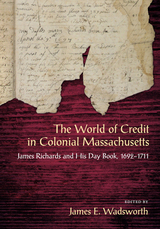 The World of Credit in Colonial Massachusetts: James Richards and His Daybook, 1692-1711
James E. Wadsworth
University of Massachusetts Press, 2017 Occasionally scholars discover lost primary sources that change our understanding of a place or period. James Richards's day book is such a find. This 325-year-old ledger had been passed down through generations of a New England family and was stored in a pillowcase in a dusty attic when it was handed to the historian James E. Wadsworth.
For years, James Richards, a prosperous and typical colonial farmer, tracked nearly five thousand transactions, involving more than six hundred individuals and stretching from Charlestown to Barnstable. Richards and his neighbors were bound together in a heterogeneous economy, reliant on networks of credit, barter, and sometimes cash. Richards practiced mixed husbandry farming, shipped goods by cart and by sloop, and produced and sold malt, salt, wool, and timber. The day book also reveals significant social details of Richards and his household, including his diverse trading partners, his extensive family connections, an Indian slave girl, and a well-dressed female servant. Available in both print and electronic editions, fully transcribed, annotated, and introduced by the editor, this record of economic life reinforces and challenges our understanding of colonial America.
World of Dew
Lindsay Stuart Hill
University of Wisconsin Press, 2025 How do we make sense of our suffering? World of Dew grapples with this question by embracing impermanence—the death of a loved one, the transmutation of an old belief, the adoption of a new culture. Moving from the tide pools of Maine to the streets of Hyderabad, Lindsay Stuart Hill entwines grief and awe, beauty and violence, truth and delusion. These poems form a scrapbook of missing girls, clothes drying on a line, and lingering romances. This is the world of dew—a gorgeous and fragile cosmos where we know nothing lasts, and yet we remain—questioning, dreaming, hoping.
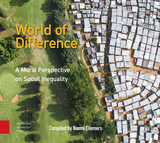 World of Difference: A Moral Perspective on Social Inequality
Gioia Marini
Amsterdam University Press, 2017 Public debates tend to see social inequality as resulting from individual decisions people make, for instance with respect to their education or lifestyle. Solutions are often sought in supporting individuals to make better choices. This neglects the importance of social groups and communities in determining individual outcomes. A moral perspective on social inequality questions the fairness of insisting on individual responsibilities, when members of some groups systematically receive fewer opportunities than others.
The essays in this book have been prepared by experts from different disciplines, ranging from philosophy to engineering, and from economics to epidemiology. On the basis of recent scientific insights, World of Difference examines how group memberships impact on individual outcomes in four key domains: health, education and work, migration, and the environment. This offers a new moral perspective on social inequality, which policy makers tend to neglect.
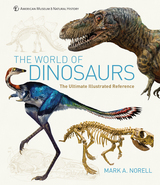 The World of Dinosaurs: An Illustrated Tour
Mark A. Norell
University of Chicago Press, 2019 “The ultimate dino tour.”—Library Journal, Best Reference 2019
“Perhaps the easiest way to glimpse . . . all this new knowledge is to leaf through Norell’s The World of Dinosaurs. . . . One of the principal paleontologists of our time."—New York Review of Books
“A delight.”—Open Letters Review
“Possibly the best general audience dinosaur book of 2019.”—Paleoaerie
Dinosaurs have held sway over our imaginations since the discovery of their bones first shocked the world in the nineteenth century. From the monstrous beasts stalking Jurassic Park to the curiosities of the natural history museum, dinosaurs are creatures that unite young and old in awestruck wonder. Digging ever deeper into dinosaurs’ ancient past, science continues to unearth new knowledge about them and the world they inhabited, a fantastic time when the footprints of these behemoths marked the Earth that we humans now walk.
Who better to guide us through this ancient world than paleontologist Mark A. Norell? A world-renowned expert in paleontology, with a knowledge of dinosaurs as deep as the buried fossils they left behind, Norell is in charge of what is perhaps America’s most popular collection of dinosaur bones and fossils, the beloved displays at the American Museum of Natural History in New York. In The World of Dinosaurs, he leads readers through a richly illustrated collection detailing the evolution of these ancient creatures. From the horns of the Protoceratops to the wings of the Archaeopteryx, readers are invited to explore profiles of dinosaurs along with hundreds of color photographs, sketches, maps, and other materials—all rooted in the latest scientific discoveries—sure to both capture the imagination and satisfy a prehistoric curiosity. The World of Dinosaurs presents an astonishing collection of knowledge in an immersive visual journey that will fascinate any fan of Earth’s ancient inhabitants.
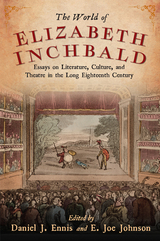 The World of Elizabeth Inchbald: Essays on Literature, Culture, and Theatre in the Long Eighteenth Century
Daniel J. Ennis
University of Delaware Press, 2022 This collection centers on the remarkable life and career of the writer and actor Elizabeth Inchbald (1753–1821), active in Great Britain in the late eighteenth century. Inspired by the example of Inchbald’s biographer, Annibel Jenkins (1918–2013), the contributors explore the broad historical and cultural context around Inchbald’s life and work, with essays ranging from the Restoration to the nineteenth century. Ranging from visual culture, theater history, literary analyses and to historical investigations, the essays not only present a fuller picture of cultural life in Great Britain in the long eighteenth century, but also reflect a range of disciplinary perspectives. The collection concludes with the final scholarly presentation of the late Professor Jenkins, a study of the eighteenth-century English newspaper The World (1753-1756).
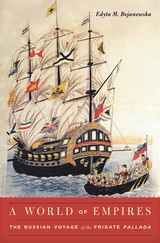 A World of Empires: The Russian Voyage of the Frigate Pallada
Edyta M. Bojanowska
Harvard University Press, 2018 A Financial Times Best History Book of the Year
Many people are familiar with American Commodore Matthew Perry’s expedition to open trade relations with Japan in the early 1850s. Less well known is that on the heels of the Perry squadron followed a Russian expedition secretly on the same mission. Serving as secretary to the naval commander was novelist Ivan Goncharov, who turned his impressions into a book, The Frigate Pallada, which became a bestseller in imperial Russia. In A World of Empires, Edyta Bojanowska uses Goncharov’s fascinating travelogue as a window onto global imperial history in the mid-nineteenth century.
Reflecting on encounters in southern Africa’s Cape Colony, Dutch Java, Spanish Manila, Japan, and the British ports of Singapore, Hong Kong, and Shanghai, Goncharov offers keen observations on imperial expansion, cooperation, and competition. Britain’s global ascendancy leaves him in equal measures awed and resentful. In Southeast Asia, he recognizes an increasingly interlocking world in the vibrant trading hubs whose networks encircle the globe. Traveling overland back home, Goncharov presents Russia’s colonizing rule in Siberia as a positive imperial model, contrasted with Western ones.
Slow to be integrated into the standard narrative on European imperialism, Russia emerges here as an increasingly assertive empire, eager to position itself on the world stage among its American and European rivals and fully conversant with the ideologies of civilizing mission and race. Goncharov’s gripping narrative offers a unique eyewitness account of empire in action, in which Bojanowska finds both a zeal to emulate European powers and a determination to define Russia against them.
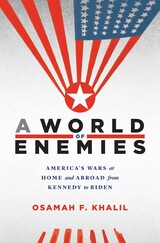 A World of Enemies: America’s Wars at Home and Abroad from Kennedy to Biden
Osamah F. Khalil
Harvard University Press, 2024 A sobering account of how the United States trapped itself in endless wars—abroad and at home—and what it might do to break free.
Over the past half-century, Americans have watched their country extend its military power to what seemed the very ends of the earth. America’s might is felt on nearly every continent—and even on its own streets. Decades ago, the Wars on Drugs and Terror broke down the walls separating law enforcement from military operations. A World of Enemies tells the story of how an America plagued by fears of waning power and influence embraced foreign and domestic forever wars.
Osamah Khalil argues that the militarization of US domestic and foreign affairs was the product of America’s failure in Vietnam. Unsettled by their inability to prevail in Southeast Asia, US leaders increasingly came to see a host of problems as immune to political solutions. Rather, crime, drugs, and terrorism were enemies spawned in “badlands”—whether the Middle East or stateside inner cities. Characterized as sites of endemic violence, badlands lay beyond the pale of civilization, their ostensibly racially and culturally alien inhabitants best handled by force.
Yet militarized policy has brought few victories. Its failures—in Iraq, Afghanistan, US cities, and increasingly rural and borderland America—have only served to reinforce fears of weakness. It is time, Khalil argues, for a new approach. Instead of managing never-ending conflicts, we need to reinvest in the tools of traditional politics and diplomacy.
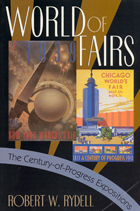 World of Fairs: The Century-of-Progress Expositions
Robert W. Rydell
University of Chicago Press, 1993 In the depths of the Great Depression, when America's future seemed bleak, nearly one hundred million people visited expositions celebrating the "century of progress." These fairs fired the national imagination and served as cultural icons on which Americans fixed their hopes for prosperity and power.
World of Fairs continues Robert W. Rydell's unique cultural history—begun in his acclaimed All the World's a Fair—this time focusing on the interwar exhibitions. He shows how the ideas of a few—particularly artists, architects, and scientists—were broadcast to millions, proclaiming the arrival of modern America—a new empire of abundance build on old foundations of inequality.
Rydell revisits several fairs, highlighting the 1926 Philadelphia Sesquicentennial, the 1931 Paris Colonial Exposition, the 1933-34 Chicago Century of Progress Exposition, the 1935-36 San Diego California Pacific Exposition, the 1936 Dallas Texas Centennial Exposition, the 1937 Cleveland Great Lakes and International Exposition, the 1939-40 San Francisco Golden Gate International Exposition, the 1939-40 New York World's Fair, and the 1958 Brussels Universal Exposition.
A World of Grace: An Introduction to the Themes and Foundations of Karl Rahner's Theology
Leo O'Donovan, Editor
Georgetown University Press, 1995 Organized as a companion volume to Karl Rahner's master work, Foundations of Christian Faith, this book, now again available, also provides the most useful introduction to his theology as a whole. Each chapter presents a broad commentary on the corresponding chapter of Foundations, beginning with Rahner's method and anthropology and concluding with his theology of the church and eschatology. It includes a separate chapter on Rahner's moral thought. Valuable for classroom or individual use, this volume provides questions for discussion, suggestions for further reading, and an extensive glossary of specialized terminology.
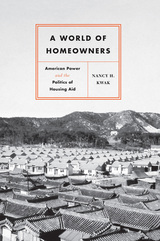 A World of Homeowners: American Power and the Politics of Housing Aid
Nancy H. Kwak
University of Chicago Press, 2015 Is there anything more American than the ideal of homeownership? In this groundbreaking work of transnational history, Nancy H. Kwak reveals how the concept of homeownership became one of America’s major exports and defining characteristics around the world. In the aftermath of World War II, American advisers urged countries to pursue greater access to homeownership, arguing it would give families a literal stake in their nations, jumpstart a productive home-building industry, fuel economic growth, and raise the standard of living in their countries, helping to ward off the specter of communism.
A World of Homeowners charts the emergence of democratic homeownership in the postwar landscape and booming economy; its evolution as a tool of foreign policy and a vehicle for international investment in the 1950s, ’60s, and ’70s; and the growth of lower-income homeownership programs in the United States from the 1960s to today. Kwak unravels all these threads, detailing the complex stories and policy struggles that emerged from a particularly American vision for global democracy and capitalism. Ultimately, she argues, the question of who should own homes where—and how—is intertwined with the most difficult questions about economy, government, and society.
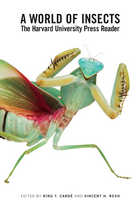 A World of Insects: The Harvard University Press Reader
Ring T. Cardé
Harvard University Press, 2012 As we follow the path of a giant water bug or peer over the wing of a gypsy moth, we glimpse our world anew, at once shrunk and magnified. Owing to their size alone, insects’ experience of the world is radically different from ours. Air to them is as viscous as water to us. The predicament of size, along with the dizzying diversity of insects and their status as arguably the most successful organisms on earth, have inspired passion and eloquence in some of the world’s most innovative scientists. A World of Insects showcases classic works on insect behavior, physiology, and ecology published over half a century by Harvard University Press.
James Costa, Vincent Dethier, Thomas Eisner, Lee Goff, Bernd Heinrich, Bert Hölldobler, Kenneth Roeder, Andrew Ross, Thomas Seeley, Karl von Frisch, Gilbert Waldbauer, E. O. Wilson, and Mark Winston—each writer, in his unique voice, paints a close-up portrait of the ways insects explore their environment, outmaneuver their enemies, mate, and care for kin.
Selected by two world-class entomologists, these essays offer compelling descriptions of insect cooperation and warfare, the search for ancient insect DNA in amber, and the energy economics of hot-blooded insects. They also discuss the impact—for good and ill—of insects on our food supply, their role in crime scene investigation, and the popular fascination with pheromones, killer bees, and fire ants. Each entry begins with commentary on the authors, their topics, and the latest research in the field.
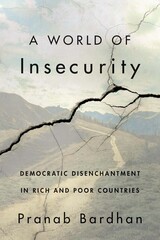 A World of Insecurity: Democratic Disenchantment in Rich and Poor Countries
Pranab Bardhan
Harvard University Press, 2022 An ambitious account of the corrosion of liberal democracy in rich and poor countries alike, arguing that antidemocratic sentiment reflects fear of material and cultural loss, not a critique of liberalism’s failure to deliver equality, and suggesting possible ways out.
The retreat of liberal democracy in the twenty-first century has been impossible to ignore. From Wisconsin to Warsaw, Budapest to Bangalore, the public is turning against pluralism and liberal institutions and instead professing unapologetic nationalism and majoritarianism. Critics of inequality argue that this is a predictable response to failures of capitalism and liberalism, but Pranab Bardhan, a development economist, sees things differently. The problem is not inequality but insecurity—financial and cultural.
Bardhan notes that antidemocratic movements have taken root globally in a wide range of demographic and socioeconomic groups. In the United States, older, less-educated, rural populations have withdrawn from democracy. But in India, the prevailing Hindu Nationalists enjoy the support of educated, aspirational urban youth. And in Europe, antidemocratic populists firmly back the welfare state (but for nonimmigrants). What is consistent among antidemocrats is fear of losing what they have. That could be money but is most often national pride and culture and the comfort of tradition.
A World of Insecurity argues for context-sensitive responses. Some, like universal basic income schemes, are better suited to poor countries. Others, like worker empowerment and international coordination, have broader appeal. But improving material security won’t be enough to sustain democracy. Nor, Bardhan writes, should we be tempted by the ultimately hollow lure of China’s authoritarian model. He urges liberals to adopt at least a grudging respect for fellow citizens’ local attachments. By affirming civic forms of community pride, we might hope to temper cultural anxieties before they become pathological.
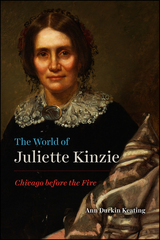 The World of Juliette Kinzie: Chicago before the Fire
Ann Durkin Keating
University of Chicago Press, 2019 When Juliette Kinzie first visited Chicago in 1831, it was anything but a city. An outpost in the shadow of Fort Dearborn, it had no streets, no sidewalks, no schools, no river-spanning bridges. And with two hundred disconnected residents, it lacked any sense of community. In the decades that followed, not only did Juliette witness the city’s transition from Indian country to industrial center, but she was instrumental in its development.
Juliette is one of Chicago’s forgotten founders. Early Chicago is often presented as “a man’s city,” but women like Juliette worked to create an urban and urbane world, often within their own parlors. With The World of Juliette Kinzie, we finally get to experience the rise of Chicago from the view of one of its most important founding mothers.
Ann Durkin Keating, one of the foremost experts on nineteenth-century Chicago, offers a moving portrait of a trailblazing and complicated woman. Keating takes us to the corner of Cass and Michigan (now Wabash and Hubbard), Juliette’s home base. Through Juliette’s eyes, our understanding of early Chicago expands from a city of boosters and speculators to include the world that women created in and between households. We see the development of Chicago society, first inspired by cities in the East and later coming into its own midwestern ways. We also see the city become a community, as it developed its intertwined religious, social, educational, and cultural institutions. Keating draws on a wealth of sources, including hundreds of Juliette’s personal letters, allowing Juliette to tell much of her story in her own words.
Juliette’s death in 1870, just a year before the infamous fire, seemed almost prescient. She left her beloved Chicago right before the physical city as she knew it vanished in flames. But now her history lives on. The World of Juliette Kinzie offers a new perspective on Chicago’s past and is a fitting tribute to one of the first women historians in the United States.
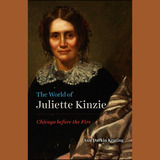 The World of Juliette Kinzie: Chicago before the Fire
Ann Durkin Keating
University of Chicago Press, 2019 This is an auto-narrated audiobook edition of this book.
When Juliette Kinzie first visited Chicago in 1831, it was anything but a city. An outpost in the shadow of Fort Dearborn, it had no streets, no sidewalks, no schools, no river-spanning bridges. And with two hundred disconnected residents, it lacked any sense of community. In the decades that followed, not only did Juliette witness the city’s transition from Indian country to industrial center, but she was instrumental in its development.
Juliette is one of Chicago’s forgotten founders. Early Chicago is often presented as “a man’s city,” but women like Juliette worked to create an urban and urbane world, often within their own parlors. With The World of Juliette Kinzie, we finally get to experience the rise of Chicago from the view of one of its most important founding mothers.
Ann Durkin Keating, one of the foremost experts on nineteenth-century Chicago, offers a moving portrait of a trailblazing and complicated woman. Keating takes us to the corner of Cass and Michigan (now Wabash and Hubbard), Juliette’s home base. Through Juliette’s eyes, our understanding of early Chicago expands from a city of boosters and speculators to include the world that women created in and between households. We see the development of Chicago society, first inspired by cities in the East and later coming into its own midwestern ways. We also see the city become a community, as it developed its intertwined religious, social, educational, and cultural institutions. Keating draws on a wealth of sources, including hundreds of Juliette’s personal letters, allowing Juliette to tell much of her story in her own words.
Juliette’s death in 1870, just a year before the infamous fire, seemed almost prescient. She left her beloved Chicago right before the physical city as she knew it vanished in flames. But now her history lives on. The World of Juliette Kinzie offers a new perspective on Chicago’s past and is a fitting tribute to one of the first women historians in the United States.
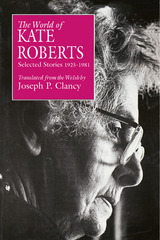 The World of Kate Roberts: Selected Stories, 1925-1981
Joseph Clancy
Temple University Press, 1991 Publishers Weekly Best Book of 1991, 1991
Kate Roberts (1891-1985) was the foremost twentieth-century prose writer in the Welsh language. She produced a considerable body of fiction, seven novels and novellas and nine collections of short stories, and was active in the Welsh Nationalist Party as a publisher and a literary and political journalist. A contemporary of D. H. Lawrence, Katherine Mansfield, and Sherwood Anderson, she created the modern form of the short story in Welsh, and through six decades of writing earned a place with this century's masters of the genre.
The World of Kate Roberts offers in English a large selection of stories, many previously, untranslated, that span her long writing career. Joseph P. Clancy's translations convey the intensity, the insight, and the distinctive prose style with which this Welsh-language writer illuminates her characters' often heroic ordinary lives. This book contains twenty-seven short stories, two short novels, and "Tea in the Heather," eight linked stories of childhood in North Wales at the turn of the century. Excerpts from her autobiography provide background for the non-Welsh reader and an Introduction presents Kate Roberts' life and work largely through her own words.
The experience of poverty is the vital center of Kate Roberts' fiction: material poverty in the slate-quarrying villages of North Wales and the coal-mining communities in the south at the turn of the century and during the Depression; and the cultural, moral, and spiritual poverty of contemporary life in a small town. This poverty defines the experiences and tests the resources of her characters. Her concern was to record, to examine, and to celebrate without sentimentality the life of the close-knit society in which she had grown up. What is most characteristically Welsh in Roberts' vision is that fellowship, membership in a community, is essential to the realization of the human self. "We never saw riches," observed Kate Roberts, "but we had riches that no one can take away from us, the riches of a language and a culture."
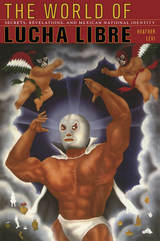 The World of Lucha Libre: Secrets, Revelations, and Mexican National Identity
Heather Levi
Duke University Press, 2008 The World of Lucha Libre is an insider’s account of lucha libre, the popular Mexican form of professional wrestling. Heather Levi spent more than a year immersed in the world of wrestling in Mexico City. Not only did she observe live events and interview wrestlers, referees, officials, promoters, and reporters; she also apprenticed with a retired luchador (wrestler). Drawing on her insider’s perspective, she explores lucha libre as a cultural performance, an occupational subculture, and a set of symbols that circulate through Mexican culture and politics. Levi argues that the broad appeal of lucha libre lies in its capacity to stage contradictions at the heart of Mexican national identity: between the rural and the urban, tradition and modernity, ritual and parody, machismo and feminism, politics and spectacle. Levi considers lucha libre in light of scholarship about sport, modernization, and the formation of the Mexican nation-state, and in connection to professional wrestling in the United States. She examines the role of secrecy in wrestling, the relationship between wrestlers and the characters they embody, and the meanings of the masks worn by luchadors. She discusses male wrestlers who perform masculine roles, those who cross-dress and perform feminine roles, and female wrestlers who wrestle each other. Investigating the relationship between lucha libre and the mass media, she highlights the history of the sport’s engagement with television: it was televised briefly in the early 1950s, but not again until 1991. Finally, Levi traces the circulation of lucha libre symbols in avant-garde artistic movements and its appropriation in left-wing political discourse. The World of Lucha Libre shows how a sport imported from the United States in the 1930s came to be an iconic symbol of Mexican cultural authenticity.
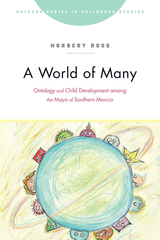 A World of Many: Ontology and Child Development among the Maya of Southern Mexico
Norbert Ross
Rutgers University Press, 2023 A World of Many explores the world-making efforts of Tzotzil Maya children from two different localities within the municipality of Chenalhó, Chiapas. The research demonstrates children’s agency in creating their worlds, while also investigating the role played by the surrounding social and physical environment. Different experiences with schooling, parenting, goals and values, but also with climate change, water scarcity, as well as racism and settler colonialism form part of the reason children create their emerging worlds. These worlds are not make believe or anything less than the ontological products of their parents. Instead, Norbert Ross argues that by creating different worlds, the children ultimately fashion themselves into different human beings - quite literally being different in the world. A World of Many combines experimental research from the cognitive sciences with critical theory, exploring children’s agency in devising their own ontologies. Rather than treating children as somewhat incomplete humans, it understands children as tinkerers and thinkers, makers of their worlds amidst complex relations. It regards being as a constant ontological production, where life and living constitutes activism. Using experimental paradigms, the book shows that children locate themselves differently in these emerging worlds they create, becoming different human beings in the process.
A World of Many Worlds
Marisol de la Cadena and Mario Blaser, editors
Duke University Press, 2018 A World of Many Worlds is a search into the possibilities that may emerge from conversations between indigenous collectives and the study of science's philosophical production. The contributors explore how divergent knowledges and practices make worlds. They work with difference and sameness, recursion, divergence, political ontology, cosmopolitics, and relations, using them as concepts, methods, and analytics to open up possibilities for a pluriverse: a cosmos composed through divergent political practices that do not need to become the same.
Contributors. Mario Blaser, Alberto Corsín Jiménez, Déborah Danowski, Marisol de la Cadena, John Law, Marianne Lien, Isabelle Stengers, Marilyn Strathern, Helen Verran, Eduardo Viveiros de Castro
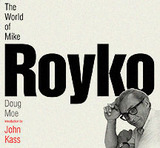 The World of Mike Royko
Doug Moe
University of Wisconsin Press, 1999 This illustrated biography is the first account of the colorful life of Chicago newspaper columnist Mike Royko, Pulitzer Prize winner, best-selling author, and legendary journalist who personified Chicago in all its rough-edged charm. Drawing on exclusive photos and interviews with Royko’s family and intimates, the book chronicles Royko’s rise from a “flat-above-a-tavern” youth—raised above a bar on Chicago’s Polish northwest side—to one of the best-known names in American journalism.
Readers will get the inside scoop on Royko’s epic battles with Mayor Richard J. Daley and other politicians and his hilarious columns featuring “Slats Grobnik.” They’ll also meet a softer, largely unknown, side of Royko, through the love letters he sent to his wife-to-be from an Air Force base in Washington State.
More than 100 photos—many never before available to the public—capture the man and his times. Millions of readers—in 800 newspapers around the world—followed Royko’s work and life. In The World of Mike Royko—he lives again.
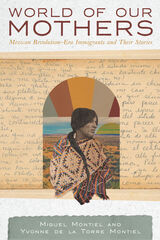 World of Our Mothers: Mexican Revolution–Era Immigrants and Their Stories
Miguel Montiel and Yvonne de la Torre Montiel
University of Arizona Press, 2022 World of Our Mothers captures the largely forgotten history of courage and heartbreak of forty-five women who immigrated to the United States during the era of the 1910 Mexican Revolution. The book reveals how these women in the early twentieth century reconciled their lives with their circumstances—enduring the violence of the Revolution, experiencing forced labor and lost childhoods, encountering enganchadores (labor contractors), and living in barrios, mining towns, and industrial areas of the Midwest, and what they saw as their primary task: caring for their families.
While the women share a historic immigration journey, each story provides unique details and circumstances that testify to the diversity of the immigrant experience. The oral histories, a project more than forty years in the making, let these women speak for themselves, while historical information is added to support and illuminate the women’s voices.
The book, which includes a foreword by Irasema Coronado, director of the School of Transborder Studies, and Chris Marin, professor emeritus, both at Arizona State University, is divided into four parts. Part 1 highlights the salient events of the Revolution; part 2 presents an overview of what immigrants inherited upon their arrival to the United States; part 3 identifies challenges faced by immigrant families; and part 4 focuses on stories by location—Arizona mining towns, Phoenix barrios, and Midwestern colonias—all communities that immigrant women helped create. The book concludes with ideas on how readers can examine their own family histories. Readers are invited to engage with one another to uncover alternative interpretations of the immigrant experience and through the process connect one generation with another.
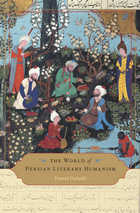 The World of Persian Literary Humanism
Hamid Dabashi
Harvard University Press, 2012 What does it mean to be human? Humanism has mostly considered this question from a Western perspective. Through a detailed examination of a vast literary tradition, Hamid Dabashi asks that question anew, from a non-European point of view. The answers are fresh, provocative, and deeply transformative. This groundbreaking study of Persian humanism presents the unfolding of a tradition as the creative and subversive subconscious of Islamic civilization.
Exploring how 1,400 years of Persian literature have taken up the question of what it means to be human, Dabashi proposes that the literary subconscious of a civilization may also be the undoing of its repressive measures. This could account for the masculinist hostility of the early Arab conquest that accused Persian culture of effeminate delicacy and sexual misconduct, and later of scientific and philosophical inaccuracy. As the designated feminine subconscious of a decidedly masculinist civilization, Persian literary humanism speaks from a hidden and defiant vantage point-and this is what inclines it toward creative subversion.
Arising neither despite nor because of Islam, Persian literary humanism was the artistic manifestation of a cosmopolitan urbanism that emerged in the aftermath of the seventh-century Muslim conquest. Removed from the language of scripture and scholasticism, Persian literary humanism occupies a distinct universe of moral obligations in which "a judicious lie," as the thirteenth-century poet Sheykh Mosleh al-Din Sa'di writes, "is better than a seditious truth."
 The World of Plymouth Plantation
Carla Gardina Pestana
Harvard University Press, 2020 An intimate look inside Plymouth Plantation that goes beyond familiar founding myths to portray real life in the settlement—the hard work, small joys, and deep connections to others beyond the shores of Cape Cod Bay.
The English settlement at Plymouth has usually been seen in isolation. Indeed, the colonists gain our admiration in part because we envision them arriving on a desolate, frozen shore, far from assistance and forced to endure a deadly first winter alone. Yet Plymouth was, from its first year, a place connected to other places. Going beyond the tales we learned from schoolbooks, Carla Gardina Pestana offers an illuminating account of life in Plymouth Plantation.
The colony was embedded in a network of trade and sociability. The Wampanoag, whose abandoned village the new arrivals used for their first settlement, were the first among many people the English encountered and upon whom they came to rely. The colonists interacted with fishermen, merchants, investors, and numerous others who passed through the region. Plymouth was thereby linked to England, Europe, the Caribbean, Virginia, the American interior, and the coastal ports of West Africa. Pestana also draws out many colorful stories—of stolen red stockings, a teenager playing with gunpowder aboard ship, the gift of a chicken hurried through the woods to a sickbed. These moments speak intimately of the early North American experience beyond familiar events like the first Thanksgiving.
On the 400th anniversary of the Mayflower landing and the establishment of the settlement, The World of Plymouth Plantation recovers the sense of real life there and sets the colony properly within global history.
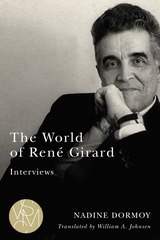 The World of René Girard: Interviews
Nadine Dormoy
Michigan State University Press, 2024 In 1988, Nadine Dormoy conducted a series of interviews with René Girard at a pivotal moment in his career, just after a number of books and conferences had situated his work in a new context of research on self-organizing systems. In these interviews, Girard discusses the flurry of intellectual activity that followed the landmark 1981 Stanford University conference, Disorder and Order. Attended by several Nobel prize winners and other important intellectual figures, this event expanded his reputation in Europe and laid the groundwork for later accolades, including the Modern Language Association’s Award for Lifetime Scholarly Achievement and being elected as a member of the Académie Française. Girard also discusses Theater of Envy, his then-forthcoming book on Shakespeare and his first book written in English, as well as corrects several misunderstandings of his mimetic hypothesis. Dormoy is a spirited interlocutor, like Girard a postwar émigré who came to make a new life for herself teaching French in American universities. Translated into English for the first time by leading mimetic studies scholar William A. Johnsen, The World of René Girard is a must-have for those new to and familiar with Girard’s work.
 A World of Resistance: India and the Global Antibiotic Crisis
Assa Doron and Alex Broom
Harvard University Press A sweeping analysis uncovers the causes of—and solutions to—one of the most daunting public health challenges facing the world today: antibiotic resistance exploding in India.
The discovery of antibiotics was one of the most significant medical breakthroughs of the twentieth century, dramatically increasing human lifespans. Yet today, with antibiotic-resistant superbugs implicated in as many deaths as HIV/AIDS and malaria combined, the limits of these miracle drugs have become alarmingly clear.
At ground zero of the growing crisis is India, one of the world’s largest consumers of antibiotics and a powerhouse in pharmaceutical manufacturing. In A World of Resistance, Assa Doron and Alex Broom draw on years of fieldwork in hospitals, in pharmacies, and on factory farms to examine the enormous social and environmental costs of overreliance on antibiotics. They show how an overtaxed healthcare system with limited oversight, widespread use of antibiotics in industrial agriculture, and the incessant dumping of pharmaceutical waste into waterways have created the ideal conditions for antibiotic-resistant microbes to grow.
As resistance spreads across India and beyond, Doron and Broom argue that the solution isn’t to restrict access to antibiotics but to embrace forms of health education, indigenous practices, and policies grounded in social solidarity. Only then, the authors contend, is it possible to turn the page on India’s precarious relationship with antibiotics and to address resistance globally before it is too late.
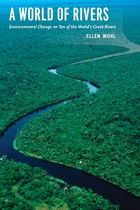 A World of Rivers: Environmental Change on Ten of the World's Great Rivers
Ellen Wohl
University of Chicago Press, 2010 Far from being the serene, natural streams of yore, modern rivers have been diverted, dammed, dumped in, and dried up, all in efforts to harness their power for human needs. But these rivers have also undergone environmental change. The old adage says you can’t step in the same river twice, and Ellen Wohl would agree—natural and synthetic change are so rapid on the world’s great waterways that rivers are transforming and disappearing right before our eyes. A World of Rivers explores the confluence of human and environmental change on ten of the great rivers of the world. Ranging from the Murray-Darling in Australia and the Yellow River in China to Central Europe’s Danube and the United States’ Mississippi, the book journeys down the most important rivers in all corners of the globe. Wohl shows us how pollution, such as in the Ganges and in the Ob of Siberia, has affected biodiversity in the water. But rivers are also resilient, and Wohl stresses the importance of conservation and restoration to help reverse the effects of human carelessness and hubris. What all these diverse rivers share is a critical role in shaping surrounding landscapes and biological communities, and Wohl’s book ultimately makes a strong case for the need to steward positive change in the world’s great rivers.
The World of Roman Costume
Edited by Judith Lynn Sebesta and Larissa Bonfante
University of Wisconsin Press, 1994 The first extensive investigation of Roman dress in decades, this volume provides an interdisciplinary view of how men and women conveyed rank, gender, and status through their clothing within Roman society and in other societies where Roman influence was pervasive.
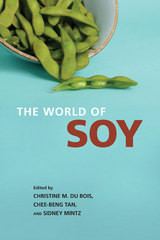 The World of Soy
Edited by Christine M. Du Bois, Sidney Mintz, and Chee-Beng Tan
University of Illinois Press, 2007 As the most ecologically efficient and economical source of complete protein in human food, soy is gradually attracting more use in the American diet for its nutritional and financial value. Derived from soybean plants--the leading export crop of the United States and the world's most traded crop--soy produced for human consumption is part of a global enterprise affecting the likes of farmers, economists, dieticians, and grocery shoppers. An international group of expert food specialists--including an agricultural economist, an agricultural sociologist, a former Peace Corps development expert, and numerous food anthropologists and agricultural historians--discusses important issues central to soy production and consumption: genetically engineered soybeans, increasing soybean cultivation, soyfood marketing techniques, the use of soybeans as an important soil restorative, and the rendering of soybeans for human consumption. Contributors are Katarzyna Cwiertka, Christine M. Du Bois, H. T. Huang, Lawrence Kaplan, Jian-Hua Mao, Sidney W. Mintz, Akiko Moriya, Can Van Nguyen, Donald Z. Osborn, Erino Ozeki, Myra Sidharta, Ivan Sergio Freire de Sousa, Chee-Beng Tan, and Rita de Cássia Milagres Teixeira Vieira.
 The World of Sugar: How the Sweet Stuff Transformed Our Politics, Health, and Environment over 2,000 Years
Ulbe Bosma
Harvard University Press, 2023 “An extraordinary achievement.” —David Edgerton, Literary Review
“A remarkably researched, comprehensive, and indispensable book for everyone who wishes to understand how sugar and the sugar industry have shaped the world in which we live.” —Gary Taubes, author of The Case Against Sugar
For most of history, humans did without refined sugar. Then, suddenly, it was everywhere. How did sugar find its way into almost all the food we eat, fostering illness and ecological crisis along the way?
The World of Sugar begins with the earliest evidence of sugar production, tracing its origins in India around the sixth century BC and showing how its introduction to Europe in the Middle Ages spawned a brutal quest for supply. European cravings were satisfied by enslaved labor; two-thirds of the 12.5 million Africans taken across the Atlantic were destined for sugar plantations. By the twentieth century, sugar was a major source of calories in diets across Europe and North America.
Sugar transformed life on every continent, creating and destroying whole cultures through industrialization, labor migration, and changes in diet. Sugar made fortunes, corrupted governments, and shaped the policies of technocrats. And it provoked freedom cries that rang with world-changing consequences. In Ulbe Bosma’s definitive telling, to understand sugar’s past is to glimpse the origins of our own world of corn syrup and ethanol and begin to see the threat that a not-so-simple commodity poses to our bodies, our environment, and our communities.
 The World of the John Birch Society: Conspiracy, Conservatism, and the Cold War
D. J. Mulloy
Vanderbilt University Press, 2014 A Selection of the History Book Club
Named One of "Six Books for Insight on a Trump Presidency" by the Washington Post
As far as members of the hugely controversial John Birch Society were concerned, the Cold War revealed in stark clarity the loyalties and disloyalties of numerous important Americans, including Dwight Eisenhower, John Kennedy, and Earl Warren. Founded in 1958 as a force for conservative political advocacy, the Society espoused the dangers of enemies foreign and domestic, including the Soviet Union, organizers of the US civil rights movement, and government officials who were deemed "soft" on communism in both the Republican and Democratic parties. Sound familiar? In The World of the John Birch Society, author D. J. Mulloy reveals the tactics of the Society in a way they've never been understood before, allowing the reader to make the connections to contemporary American politics, up to and including the Tea Party. These tactics included organized dissemination of broad-based accusations and innuendo, political brinksmanship within the Republican Party, and frequent doomsday predictions regarding world events. At the heart of the organization was Robert Welch, a charismatic writer and organizer who is revealed to have been the lifeblood of the Society's efforts.
The Society has seen its influence recede from the high-water mark of 1970s, but the organization still exists today. Throughout The World of the John Birch Society, the reader sees the very tenets and practices in play that make the contemporary Tea Party so effective on a local level. Indeed, without the John Birch Society paving the way, the Tea Party may have encountered a dramatically different political terrain on its path to power.
A World of Their Own Making: Myth, Ritual, and the Quest for Family Values
John R. Gillis
Harvard University Press Our whole society may be obsessed with “family values,” but as John Gillis points out in this entertaining and eye-opening book, most of our images of “home sweet home” are of very recent vintage. A World of Their Own Making questions our idealized notion of “The Family,” a mind-set in which myth and symbol still hold sway. As the families we live with become more fragile, the symbolic families we live by become more powerful. Yet it is only by accepting the notion that our ritual, myths, and images must be open to perpetual revision that we can satisfy our human needs and changing circumstances.
The World of Thought in Ancient China
Benjamin I. Schwartz
Harvard University Press, 1985 The center of this prodigious work of scholarship is a fresh examination of the range of Chinese thought during the formative period of Chinese culture. Benjamin Schwartz looks at the surviving texts of this period with a particular focus on the range of diversity to be found in them. While emphasizing the problematic and complex nature of this thought he also considers views which stress the unity of Chinese culture.
Attention is accorded to pre-Confucian texts; the evolution of early Confucianism; Mo-Tzu; the “Taoists,”; the legalists; the Ying-Yang school; and the “five classics”; as well as to intellectual issues which cut across the conventional classification of schools. The main focus is on the high cultural texts, but Mr. Schwartz also explores the question of the relationship of these texts to the vast realm of popular culture.
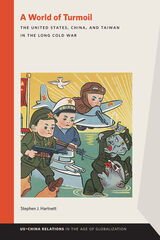 A World of Turmoil: The United States, China, and Taiwan in the Long Cold War
stephen hartnett
Michigan State University Press, 2021 The United States, the People’s Republic of China, and Taiwan have danced on the knife’s edge of war for more than seventy years. A work of sweeping historical vision, A World of Turmoil offers case studies of five critical moments: the end of World War II and the start of the Long Cold War; the almost-nuclear war over the Quemoy Islands in 1954–1955; the détente, deceptions, and denials surrounding the 1972 Shanghai Communiqué; the Taiwan Strait Crisis of 1995–1996; and the rise of postcolonial nationalism in contemporary Taiwan. Diagnosing the communication dispositions that structured these events reveals that leaders in all three nations have fallen back on crippling stereotypes and self-serving denials in their diplomacy. The first communication-based study of its kind, this book merges history, rhetorical criticism, and advocacy in a tour de force of international scholarship. By mapping the history of miscommunication between the United States, China, and Taiwan, this provocative study shows where and how our entwined relationships have gone wrong, clearing the way for renewed dialogue, enhanced trust, and new understandings.
The World of W.E.B. Du Bois: A Quotation Sourcebook
Meyer Weinberg
University of Massachusetts Press, 2012 W.E.B. Du Bois (1868–1963) was one of the leading public figures of his time—an African American sociologist, historian, civil rights activist, author, and editor. He organized, protested, laid out programs, petitioned, and raised questions of long-term strategy and short-term tactics. He also wrote numerous books and articles and was a commanding speaker and a prodigious correspondent.
Meyer Weinberg created The World of W.E.B. Du Bois to provide a short journey through Du Bois's views on virtually all aspects of twentieth-century life. More than one thousand quotations from his published writings and correspondence are included, arranged into twenty topical chapters. Each quotation begins with a heading designed to summarize its main theme. A subject index provides additional access to the ideas of this complex figure.
A World of Words: Language and Displacement in the Fiction of Edgar Allan Poe
Michael J. S. Williams
Duke University Press, 1988 A World of Words offers a new look at the degree to which language itself is a topic of Poe's texts. Stressing the ways his fiction reflects on the nature of its own signifying practices, Williams sheds new light on such issues as Poe's characterization of the relationship between author and reader as a struggle for authority, on his awareness of the displacement of an "authorial writing self" by a "self as it is written," and on his debunking of the redemptive properties of the romantic symbol.
The World of Worker: LABOR IN TWENTIETH-CENTURY AMERICA
James R. Green
University of Illinois Press, 1998
The World of the Worker illuminates workers' lives at home, on
the job, and in the voting booths. A new preface enhances this social,
cultural, and political history: an unparalleled picture of working people
during the turbulent rise and fall of the labor movement.
"A fresh and provocative look at twentieth-century American unions,
and a fine introduction to recent labor history scholarship." --
Leslie Woodcock Tentler, Washington Post Book World
"Will be welcomed by anyone with a serious interest in labor history."
-- Library Journal
"Probably the best social history of twentieth-century labor
there is." -- Kirkus Reviews
"Virtually replaces any previously existing one-volume popular history
of the labor movement." -- Ron Radosh, Democratic Left
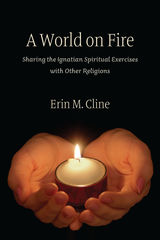 A World On Fire: Sharing the Ignatian Spiritual Exercises with Other Religions
Erin M. Cline
Catholic University of America Press, 2018 The Spiritual Exercises of St. Ignatius of Loyola give shape to the spiritual lives of Jesuits and many other Christians. But might these different ways of praying, meditating, and reading scripture be helpful to members of other faiths as well? In response to the call of Fr. Adolfo Nicolas, SJ, the thirtieth Superior General of the Jesuits (2008-2016) to explore how the Ignatian Spiritual Exercises can be fruitfully appropriated by non-Christians, A World on Fire analyzes the prospects for adapting the Spiritual Exercises in order to make them accessible to members of other faith traditions while still maintaining their core meaning and integrity.
Erin Cline examines why this ought to be done, for whom, and what the aims of such an adaptation would be, including the different theological justifications for this practice. She concludes that there are compelling reasons for sharing the Exercises with members of other religions and that doing so coheres with the central mission of the Jesuits. A World on Fire goes on to examine the question of how the Exercises can be faithfully adapted for members of other religions. In outlining adaptations for the Hindu, Buddhist, and Confucian traditions that draw upon the traditional content of the Exercises supplemented by the texts of these religious traditions, Cline shows how Ignatian spirituality can help point the way to a different kind of inter-religious dialogue – one that is not bound up in technical terminology or confined to conversations between theologians and religious leaders. Rather, in making the Spriitual Exercises accessible to members of other faith traditions, we are as Pope Francis puts it, “living on a frontier, one in which the Gospel meets the needs of the people to whom it should be proclaimed in an understandable and meaningful way.”
A World on Fire will be of interest to comparative theologians and scholars working on inter-religious dialogue, religious pluralism, contemplative studies, and spirituality, as well as Jesuit priests and other practitioners who employ the Spiritual Exercises in their ministry.
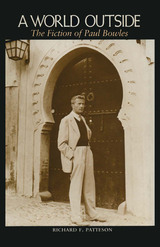 A World Outside: The Fiction of Paul Bowles
By Richard F. Patteson
University of Texas Press, 1987 Expatriation, the sense of being "outside" or exposed, is a central theme in the life and work of Paul Bowles. Beginning with Bowles' account of a frightening childhood memory, A World Outside explores how the dichotomies of inside and outside, safety and danger, enclosure and exposure—fundamental dualities in Bowles' fiction—have their deepest origin in the fabric of Bowles' own life and also mark his kinship with other twentieth-century writers. Like V. S. Naipaul, Paul Bowles is one of those writers who have an uncanny grasp of what it is like never to feel "at home." In this much-needed study, Richard Patteson explores how this sense of "outsidedness" characterizes one's experience in a world in which many of the traditional shelters—social, familial, religious—seem to have lost their ability to protect. He discovers that storytelling is the vehicle by which both Bowles and his characters attempt to domesticate inchoate experience, bringing it into the familiar interior of human comprehension. The music world has for decades recognized Paul Bowles' stature as a composer, but his fiction is only recently receiving the close attention it has long deserved from students of American and contemporary literature. Bowles is an author who neither sought nor received the kind of publicity often lavished on his contemporaries but one whom an ever-growing audience regards as a commanding figure of twentieth-century American literature.
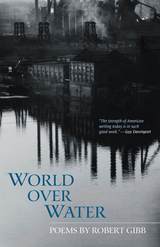 World Over Water: Poems
Robert Gibb
University of Arkansas Press, 2007 In 1999 Robert Gibb published The Origins of Evening, selected by Eavan Boland for W. W. Norton as that year’s National Poetry Series selection. Nearly five years later he published The Burning World with the University of Arkansas Press, and Stanley Plumley described the “evolving, working lyric narrative [that was] underway.” Indeed, in Gibb’s new collection, World over Water, this evolving, lyric narrative finds its conclusion in the third volume of his Pittsburgh trilogy. The new collection continues to explore the lost industrial world—a world of steel mills, fire-strewn rivers, and working-class lives, in which place and family stand as metaphors for each other. The poems reach back to the late nineteenth century in a mixture of elegy and chronicle, genealogy and history, reclaiming the past and its witnesses. World over Water is not a remembrance of what was but an act of imagination that wills the past alive in all its savage beauty.
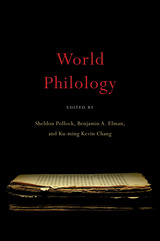 World Philology
Sheldon Pollock
Harvard University Press, 2015 Philology—the discipline of making sense of texts—is enjoying a renaissance within academia after decades of neglect. World Philology charts the evolution of philology across the many cultures and historical time periods in which it has been practiced, and demonstrates how this branch of knowledge, like philosophy and mathematics, is an essential component of human understanding.
Every civilization has developed ways of interpreting the texts that it produces, and differences of philological practice are as instructive as the similarities. We owe our idea of a textual edition for example, to the third-century BCE scholars of the Alexandrian Library. Rabbinical philology created an innovation in hermeneutics by shifting focus from how the Bible commands to what it commands. Philologists in Song China and Tokugawa Japan produced startling insights into the nature of linguistic signs. In the early modern period, new kinds of philology arose in Europe but also among Indian, Chinese, and Japanese commentators, Persian editors, and Ottoman educationalists who began to interpret texts in ways that had little historical precedent. They made judgments about the integrity and consistency of texts, decided how to create critical editions, and determined what it actually means to read.
Covering a wide range of cultures—Greek, Roman, Hebrew, Arabic, Sanskrit, Chinese, Indo-Persian, Japanese, Ottoman, and modern European—World Philology lays the groundwork for a new scholarly discipline.
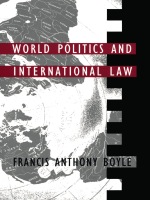 World Politics and International Law
Francis Anthony Boyle
Duke University Press, 1985 This work tries to bridge the gap between international lawyers and those political scientists who write about international politics. In the first part, the author discusses the influence of Professor Morgenthau's realist school on the current thinking of political scientists and the abandonment of this school by its originator in the last years of his life. The author concludes that the best way to test the validity of different approaches is to discuss various international crises in the light of contrasting theories and to analyze each situation from both the legal and political points of view. In particular, he tries to ascertain to what extent vital national interests could be accommodated within an international legal framework, or could require a distortion of international rules in order to achieve national objectives. In the second part, the author dissects the Entebbe raid, where Israeli forces rescued a group of hostages being detained by hijackers at a Ugandan airport. His analysis shows the deficiencies of the international system in dealing with such a complex issue, where several contradictory principles of international law could be applied and were defended by various protagonists. The third part starts with a parallel problem--the Iranian hostages crisis, where a group of U.S. officials found themselves in an unprecedented situation of being captured by a band of students. A critical analysis of the handling of this problem by the Carter Administration is followed by vignettes of other crises faced by the Administration and by its successor, the Reagan Administration. This part is less analytical and more prescriptive. The author is no long satisfied with pointing out what went wrong; instead, he departs from the usual hands-off policy of political scientists and tries to indicate how much better each situation could have been handled if the decision makers had been paying more attention to international law and international organizations. The theme is slowly developed that in the long run national interest is better served not by practicing power politics and relying on the use of threat of force but by strengthening those international institutions that can provide a neutral environment for first slowing down a crisis and then finding an equitable solution acceptable to most of the parties in conflict. The value of this book lies primarily in giving the reader a real insight into several important issues of today that are familiar to most people only from newspaper headlines and television news. While not everybody can agree with all his criticisms of the mistakes of various governments, there is an honest attempt by the author to present issues impartially and to let the blame fall where it may. Being both an international lawyer and a political scientist, the author has had the advantage of combining the methodology of these two social sciences into a rich tapestry with some startling shades and tones.
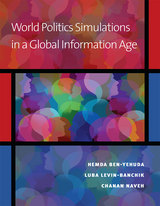 World Politics Simulations in a Global Information Age
Hemda Ben-Yehuda, Luba Levin-Banchik, and Chanan Naveh
University of Michigan Press, 2015 A comprehensive guide explaining how to create simulations of international relations for the purposes of both teaching and research. Hemda Ben-Yehuda, Luba Levin-Banchik, and Chanan Naveh offer as a model their hallmark “World Politics Simulations Project,” which involves participants representing various states, nonstate actors, and media organizations embroiled in an international political crisis. Following the trajectory of a simulation, the authors describe theory, implementation, and analysis. Starting with a typology of simulations, they present a framework for selecting the most suitable one for a given teaching situation, based on academic setting, goals, costs, and other practical considerations. They then provide step-by-step instructions for creating simulations on cyber platforms, particularly Facebook, complete with schedules, guidelines, sample forms, teaching tips, and student exercises. Throughout the simulation, and especially during the final analysis, they explain how to reinforce learning and foster critical thinking, creativity, teamwork, and other essential skills. The authors conclude with suggestions for using data gathered during a simulation for scholarly research. Instructors in both introductory and advanced courses in political science, international relations, media, history, and area studies—as well as leaders of professional training programs in the civil and military service and media organizations—will find this guide invaluable.
 World Population Growth and Aging: Demographic Trends in the Late Twentieth Century
Nathan Keyfitz and Wilhelm Flieger
University of Chicago Press, 1991 Drawing data from official sources in 60 countries, as well as from the United Nations and the World Bank, this compendium of statistical information on population, fertility, and mortality treats every one of the UN-recognized countries in at least summary form. With data from 1950 onward and projections through 2020, this volume extends the dataset of Nathan Keyfitz and Wilhelm Flieger's landmark work, World Population: An Analysis of Vital Data (1968), with virtually no overlap.
All the life tables, standardized rates, and projections have been generated by uniform methods to ensure easy comparison among countries. More than 800 charts provide a foundation for analyzing the radical demographic changes now taking place: the historic lows of fertility in Germany and other industrial countries, Africa's persistently high fertility, and the worldwide extension of life expectancy. The product of cautious and painstaking labor, this work promises to be an important resource for further demographic research as well as a valuable comparative resource for studies of the status of global social welfare and the environment.
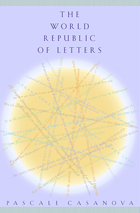 The World Republic of Letters
Pascale Casanova
Harvard University Press, 2004 The "world of letters" has always seemed a matter more of metaphor than of global reality. In this book, Pascale Casanova shows us the state of world literature behind the stylistic refinements--a world of letters relatively independent from economic and political realms, and in which language systems, aesthetic orders, and genres struggle for dominance. Rejecting facile talk of globalization, with its suggestion of a happy literary "melting pot," Casanova exposes an emerging regime of inequality in the world of letters, where minor languages and literatures are subject to the invisible but implacable violence of their dominant counterparts.
Inspired by the writings of Fernand Braudel and Pierre Bourdieu, this ambitious book develops the first systematic model for understanding the production, circulation, and valuing of literature worldwide. Casanova proposes a baseline from which we might measure the newness and modernity of the world of letters--the literary equivalent of the meridian at Greenwich. She argues for the importance of literary capital and its role in giving value and legitimacy to nations in their incessant struggle for international power. Within her overarching theory, Casanova locates three main periods in the genesis of world literature--Latin, French, and German--and closely examines three towering figures in the world republic of letters--Kafka, Joyce, and Faulkner. Her work provides a rich and surprising view of the political struggles of our modern world--one framed by sites of publication, circulation, translation, and efforts at literary annexation.
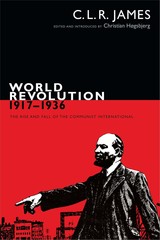 World Revolution, 1917–1936: The Rise and Fall of the Communist International
C. L. R. James
Duke University Press, 2017 Originally published in 1937, C. L. R. James's World Revolution is a pioneering Marxist analysis of the history of revolutions during the interwar period and of the fundamental conflict between Trotsky and Stalin. James, who was a leading Trotskyist activist in Britain, outlines Russia's transition from Communist revolution to a Stalinist totalitarian state bureaucracy. He also provides an account of the ideological contestations within the Communist International while examining its influence on the development of the Soviet Union and its changing role in revolutions in Spain, China, Germany, and Central Europe. Published to commemorate the centenary of the Russian Revolution, this definitive edition of World Revolution features a new introduction by Christian Høgsbjerg and includes rare archival material, selected contemporary reviews, and extracts from James's 1939 interview with Trotsky.
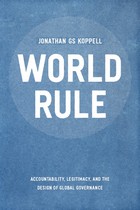 World Rule: Accountability, Legitimacy, and the Design of Global Governance
Jonathan GS Koppell
University of Chicago Press, 2010 Dilemmas from climate change to financial meltdowns make it clear that global interconnectedness is the norm in the twenty-first century. As a result, global governance organizations (GGOs)—from the World Trade Organization to the Forest Stewardship Council—have taken on prominent roles in the management of international affairs. These GGOs create and promulgate rules to address a host of pressing problems. But as World Rule reveals, they struggle to meet two challenges: building authority despite limited ability to impose sanctions and maintaining legitimacy while satisfying the demands of key constituencies whose support is essential to a global rulemaking regime.
Through a novel empirical study of twenty-five GGOs, Jonathan GS Koppell provides a clearer picture of the compromises within and the competition among these influential institutions by focusing attention on their organizational design. Analyzing four aspects of GGO organization in depth—representation and administration, the rulemaking process, adherence and enforcement, and interest group participation—Koppell describes variation systemically, identifies patterns, and offers explanations that link GGO design to the fundamental challenge of accountability in global governance.
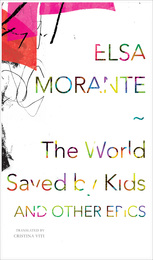 The World Saved by Kids: And Other Epics
Elsa Morante
Seagull Books, 2016 A representative text of a milieu marked by student protests and aspirations for moral and political renewal.
First published in Italian in 1968, The World Saved by Kids was written in the aftermath of deep personal change and in the context of what Elsa Morante called the “great youth movement exploding against the funereal machinations of the organized contemporary world.” Morante believed that it was only the youth who could truly hear her revolutionary call. With the fiftieth anniversary of the tumultuous events of 1968 approaching, there couldn’t be a more timely moment for this first English translation of Morante’s work to appear.
Greeted by Antonio Porta as one of the most important books of its decade, The World Saved by Kids showcases Morante’s true mastery of tone, rhythm, and imagery as she works elegy, parody, storytelling, song, and more into an act of linguistic magic through which Gramsci and Rimbaud, Christ and Antigone, Mozart and Simone Weil, and a host of other figures join the sassy, vulnerable neighborhood kids in a renewal of the word’s timeless, revolutionary power to explore and celebrate life’s insoluble paradox.
Morante gained international recognition and critical acclaim for her novels History, Arturo’s Island, and Aracoeli, and The World Saved By Kids may be her best book and the one that most closely represents her spirit.
 The World Says No to War: Demonstrations against the War on Iraq
Stefaan Walgrave
University of Minnesota Press, 2010 On February 15, 2003, the largest one-day protest in human history took place as millions of people in hundreds of cities marched in the streets, rallying against the imminent invasion of Iraq. This was activism on an unprecedented scale. The World Says No to War strives to understand who spoke out, why they did, and how so many people were mobilized for a global demonstration. Using surveys collected by researchers from eight countries—Belgium, Britain, Germany, Italy, the Netherlands, Spain, Switzerland, and the United States—The World Says No to War analyzes how the new tools of the Internet were combined with more conventional means of mobilization to rally millions, many with little experience in activism, around common goals and against common targets. Contributors: W. Lance Bennett, U of Washington; Michelle Beyeler, U Bern; Christian Breunig, U of Toronto; Mario Diani, U of Trento; Terri E. Givens, U of Texas, Austin; Bert Klandermans, Free U Amsterdam; Donatella della Porta, European U Institute; Wolfgang Rüdig, U of Strathclyde; Sidney Tarrow, Cornell U; Peter Van Aelst, U of Antwerp.
The World Sixties Made: Politics And Culture In Recent America
edited by Van Gosse and Richard Moser
Temple University Press, 2003 How can we make sense of the fact that after decades of right-wing political mobilizing the major social changes wrought by the Sixties are more than ever part of American life? The World the Sixties Made, the first academic collection to treat the last quarter of the twentieth century as a distinct period of U.S. history, rebuts popular accounts that emphasize a conservative ascendancy. The essays in this volume survey a vast historical terrain to tease out the meaning of the not-so-long ago. They trace the ways in which recent U.S. culture and politics continue to be shaped by the legacy of the New Left's social movements, from feminism to gay liberation to black power. Together these essays demonstrate that the America that emerged in the 1970s was a nation profoundly, even radically democratized.
World Small-Scale Fisheries: Contemporary Visions
Edited by Ratana Chuenpagdee
Eburon Academic Publishers, 2011
Small-scale fisheries have received less attention in the global policy arena than their bigger counterparts, but they have much to offer the world in terms of employment, food security, and conservation. World Small-Scale Fisheries makes a new case for the importance of small-scale fisheries and provides twenty in-depth studies of businesses from around the world. An important reference book for researchers in fisheries management as well as policymakers, World Small-Scale Fisheries demonstrates the opportunities for sustainability and the remarkable strengths of small-scale fishing operations.
World Technology and Human Destiny
Edited by Raymond Aron
University of Michigan Press, 1963 What lies ahead — Ashes or Eden? As a result of the greatest revolution the world has ever known empires are dissolving, religions changing, and stone-age nations are being driven into the Nuclear Society. In this technological revolution every country is a part of a vast machine culture whose scientific symbols, language, and hierarchies appear from pole to pole. Will man's political and spiritual life keep pace with the accelerating scientific progress that is reshaping the contours of human existence? This question is the most important one confronting the world today. World Technology and Human Destiny is the product of a meeting of brilliant and compassionate minds, who gathered together to find the answer to this and related questions. Here Aron, Oppenheimer, Kennan, Rostow, Polanyi, and many others analyze this Nuclear Era and explore the fate of man.
World Telecommunications Economics
Jeffery J. Wheatley
The Institution of Engineering and Technology, 1999 This book bridges the worlds of the economist, the engineer, the regulator and the manager. It outlines the technology of the subject in sufficient detail to provide an understanding of the industry's economics, and presents a comprehensive picture of the markets into which its products and services are sold.
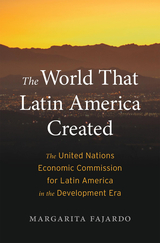 The World That Latin America Created: The United Nations Economic Commission for Latin America in the Development Era
Margarita Fajardo
Harvard University Press, 2022 How a group of intellectuals and policymakers transformed development economics and gave Latin America a new position in the world.
After the Second World War demolished the old order, a group of economists and policymakers from across Latin America imagined a new global economy and launched an intellectual movement that would eventually capture the world. They charged that the systems of trade and finance that bound the world’s nations together were frustrating the economic prospects of Latin America and other regions of the world. Through the UN Economic Commission for Latin America, or CEPAL, the Spanish and Portuguese acronym, cepalinos challenged the orthodoxies of development theory and policy. Simultaneously, they demanded more not less trade, more not less aid, and offered a development agenda to transform both the developed and the developing world. Eventually, cepalinos established their own form of hegemony, outpacing the United States and the International Monetary Fund as the agenda setters for a region traditionally held under the orbit of Washington and its institutions. By doing so, cepalinos reshaped both regional and international governance and set an intellectual agenda that still resonates today.
Drawing on unexplored sources from the Americas and Europe, Margarita Fajardo retells the history of dependency theory, revealing the diversity of an often-oversimplified movement and the fraught relationship between cepalinos, their dependentista critics, and the regional and global Left. By examining the political ventures of dependentistas and cepalinos, The World That Latin America Created is a story of ideas that brought about real change.
The World That the Shooter Left Us
Cyrus Cassells
Four Way Books, 2022 In the aftermath of the Stand Your Ground killing of his close friend’s father, poet Cassells explores, in his most fearless book to date, the brutality, bigotry, and betrayal at the heart of current America. Taking his cue from the Civil Rights and Vietnam War era poets and songwriters who inspired him in his youth, Cassells presents The World That the Shooter Left Us, a frank, bulletin-fierce indictment of unraveling democracy in an embattled America, in a world still haunted by slavery, by Guernica, Hiroshima, and the Holocaust, by climate catastrophe, by countless battles, borders, and broken promises—adding new grit, fire, and luster to his forty-year career as a dedicated and vital American poet.
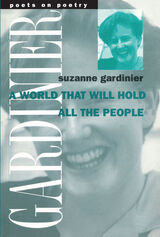 A World That Will Hold All the People
Suzanne Gardinier
University of Michigan Press, 1996 In this thoughtful and provocative collection of essays, Suzanne Gardinier painstakingly and passionately examines the intersection of poetry and politics. Not a miscellany but a cohesive and beautifully crafted book, the six essays (on Pablo Neruda, Muriel Rukeyser, Rainer Maria Rilke, Adrienne Rich, the Iliad, "Poetry and the New Commonwealth," and "In Search of Democracy") are united in their love of language, their unsparing but hopeful social criticism, and their genuine affection for their subjects.
Astute, engaged and engaging, A World That Will Hold All the People (the title comes from the Margaret Walker poem, "For My People") provides one side of what Rukeyser termed "The endless quarrel between the establishment and the prophets." Accompanying her provocative essays is a prose poem, This Land.
Suzanne Gardinier's book of poetry The New World was published in 1993. Her work has appeared in The Best American Poetry annual, The New Yorker, Grand Street, The Kenyon Review, The Paris Review, TriQuarterly, and The Yale Review. She teaches creative writing at Sarah Lawrence College.
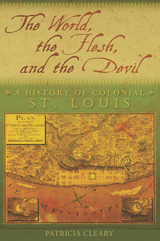 The World, the Flesh, and the Devil: A History of Colonial St. Louis
Patricia Cleary
University of Missouri Press, 2018 As Anglo-American colonists along the Atlantic seaboard began to protest British rule in the 1760s, a new settlement was emerging many miles west. St. Louis, founded simply as a French trading post, was expanding into a diverse global village. Few communities in eighteenth-century North America had such a varied population: indigenous Americans, French traders and farmers, African and Indian slaves, British officials, and immigrant explorers interacted there under the weak guidance of the Spanish governors. As the city’s significance as a hub of commerce grew, its populace became increasingly unpredictable, feuding over matters large and small and succumbing too often to the temptations of “the world, the flesh, and the devil.” But British leaders and American Revolutionaries still sought to acquire the area, linking St. Louis to the era’s international political and economic developments and placing this young community at the crossroads of empire. With its colonial period too often glossed over in histories of both early America and the city itself, St. Louis merits a new treatment. The first modern book devoted exclusively to the history of colonial St. Louis, The World, the Flesh, and the Devil illuminates how its people loved, fought, worshipped, and traded. Covering the years from the settlement’s 1764 founding to its 1804 absorption into the young United States, this study reflects on the experiences of the village’s many inhabitants. The World, the Flesh, and the Devil recounts important, neglected episodes in the early history of St. Louis in a narrative drawn from original documentary records. Chapters detail the official censure of the illicit union at the heart of St. Louis’s founding family, the 1780 battle that nearly destroyed the village, Spanish efforts to manage commercial relations between Indian peoples and French traders, and the ways colonial St. Louisans tested authority and thwarted traditional norms. Patricia Cleary argues that St. Louis residents possessed a remarkable willingness to adapt and innovate, which enabled them to survive the many challenges they faced. The interior regions of the U.S. have been largely relegated to the margins of colonial American history, even though their early times were just as dynamic and significant as those that occurred back east. The World, the Flesh, and the Devil is an inclusive, wide-ranging, and overdue account of the Gateway city’s earliest years, and this engaging book contributes to a comprehensive national history by revealing the untold stories of Upper Louisiana’s capital.
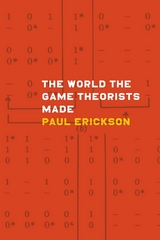 The World the Game Theorists Made
Paul Erickson
University of Chicago Press, 2015 In recent decades game theory—the mathematics of rational decision-making by interacting individuals—has assumed a central place in our understanding of capitalist markets, the evolution of social behavior in animals, and even the ethics of altruism and fairness in human beings. With game theory’s ubiquity, however, has come a great deal of misunderstanding. Critics of the contemporary social sciences view it as part of an unwelcome trend toward the marginalization of historicist and interpretive styles of inquiry, and many accuse its proponents of presenting a thin and empirically dubious view of human choice.
The World the Game Theorists Made seeks to explain the ascendency of game theory, focusing on the poorly understood period between the publication of John von Neumann and Oscar Morgenstern’s seminal Theory of Games and Economic Behavior in 1944 and the theory’s revival in economics in the 1980s. Drawing on a diverse collection of institutional archives, personal correspondence and papers, and interviews, Paul Erickson shows how game theory offered social scientists, biologists, military strategists, and others a common, flexible language that could facilitate wide-ranging thought and debate on some of the most critical issues of the day.
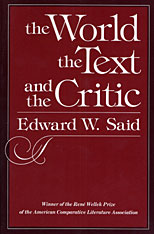 The World, the Text, and the Critic
Edward W. Said
Harvard University Press, 1983 This extraordinarily wide-ranging work represents a new departure for contemporary literary theory. Author of Beginnings and the controversial Orientalism, Edward Said demonstrates that modern critical discourse has been impressively strengthened by the writings of Jacques Derrida and Michel Foucault, for example, and by such influences as Marxism, structuralism, linguistics, and psychoanalysis. He argues, however, that the various methods and schools have had a crippling effect through their tendency to force works of literature to meet the requirements of a theory or system, ignoring the complex affiliations binding the texts to the world.
The critic must maintain a distance both from critical systems and from the dogmas and orthodoxies of the dominant culture, Said contends. He advocates freedom of consciousness and responsiveness to history, to the exigencies of the text, to political, social, and human values, to the heterogeneity of human experience. These characteristics are brilliantly exemplified in his own analyses of individual authors and works.
Combining the principles and practice of criticism, the book offers illuminating investigations of a number of writers—Swift, Conrad, Lukács, Renan, and many others—and of concepts such as repetition, originality, worldliness, and the roles of audiences, authors, and speakers. It asks daring questions, investigates problems of urgent significance, and gives a subtle yet powerful new meaning to the enterprise of criticism in modern society.
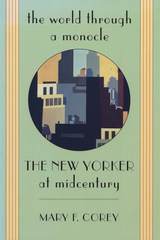 The World through a Monocle: The New Yorker at Midcentury
Mary F. Corey
Harvard University Press, 1999 Today The New Yorker is one of a number of general-interest magazines published for a sophisticated audience, but in the post-World War II era the magazine occupied a truly significant niche of cultural authority. A self-selected community of 250,000 readers, who wanted to know how to look and sound cosmopolitan, found in its pages information about night spots and polo teams. They became conversant with English movies, Italian Communism, French wine, the bombing of the Bikini Atoll, prêt-à-porter, and Caribbean vacations. A well-known critic lamented that "certain groups have come to communicate almost exclusively in references to the [magazine's] sacred writings." The World through a Monocle is a study of these "sacred writings."
Mary Corey mines the magazine's editorial voice, journalism, fiction, advertisements, cartoons, and poetry to unearth the preoccupations, values, and conflicts of its readers, editors, and contributors. She delineates the effort to fuse liberal ideals with aspirations to high social status, finds the magazine's blind spots with regard to women and racial and ethnic stereotyping, and explores its abiding concern with elite consumption coupled with a contempt for mass production and popular advertising. Balancing the consumption of goods with a social conscience which prized goodness, the magazine managed to provide readers with what seemed like a coherent and comprehensive value system in an incoherent world.
Viewing the world through a monocle, those who created The New Yorker and those who believed in it cultivated a uniquely powerful cultural institution serving an influential segment of the population. Corey's work illuminates this extraordinary enterprise in our social history.
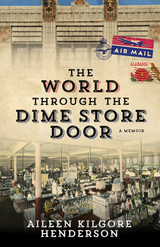 The World through the Dime Store Door: A Memoir
Aileen Kilgore Henderson
University of Alabama Press, 2020 A coming-of-age memoir evoking farm, mining, and small-town life in Alabama’s Tuscaloosa County as the world transitions from the Great Depression to World War II
In the 1930s, the rural South was in the throes of the Great Depression. Farm life was monotonous and hard, but a timid yet curious teenager thought it worth recording. Aileen Kilgore Henderson kept a chronicle of her family’s daily struggles in Tuscaloosa County alongside events in the wider world she gleaned from shortwave radio and the occasional newspaper. She wrote about Howard Hughes’s round-the-world flight and her horror at the rise to power in Germany of a bizarre politician named Adolf Hitler. Henderson longed to join the vast world beyond the farm, but feared leaving the refuge of her family and beloved animals.
Yet, with her father’s encouragement, she did leave, becoming a clerk in the Kress dime store in downtown Tuscaloosa. Despite long workdays and a lengthy bus commute, she continued to record her observations and experiences in her diary, for every day at the dime store was interesting and exciting for an observant young woman who found herself considering new ideas and different points of view.
Drawing on her diary entries from the 1930s and early 1940s, Henderson recollects a time of sweeping change for Tuscaloosa and the South. The World through the Dime Store Door is a personal and engaging account of a Southern town and its environs in transition told through the eyes of a poor young woman with only a high school education but gifted with a lively mind and an openness to life.
The World Tin Market: Political Pricing and Economic Competition
William L. Baldwin
Duke University Press, 1983 William L. Baldwin argues that while the structure, conduct, and performance of the world tin industry are subject to strongly competitive market forces, major intervention by international governments has exerted a controlling influence over the world tin market for the past sixty years.
 The World to Come: Ukrainian Images of the Last Judgment
Liliya Berezhnaya and John-Paul Himka
Harvard University Press Icons and murals depicting the biblical scene of the Last Judgment adorned many Eastern-rite churches in medieval and early modern Ukraine. Dating from the twelfth to the eighteenth centuries, these images were extraordinarily elaborate, composed of dozens of discrete elements reflecting Byzantine, Novgorodian, Moldavian, and Catholic influences, in addition to local and regional traditions. Over time, the details of the iconography evolved in response to changing cultural resources, the conditions of material life at the time, and new trends in mentality and taste.
The World to Come lists and describes more than eighty Last Judgment images from present-day Ukraine, eastern Slovakia, and southeastern Poland, making it the largest compilation of its kind. Photographs show overviews and details of the images, and most are printed in full color. The icons and murals provide a valuable source of knowledge about the culture in which they were created: what was meant by good and evil, what was prophesied for the future, and what awaited in the afterlife.
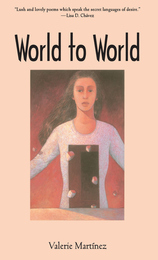 World to World
Valerie Martínez
University of Arizona Press, 2004 In her second collection of poems, Valerie Martínez builds on the artistic command of language that characterized her award-winning first volume, Absence, Luminescent. Taking on not only such familiar themes as love and loss, family and culture, but also the creative act of poetry itself, World to World crosses new boundaries to chart a mature poet’s awareness of her own voice and style.
Martínez explores the dynamic of creation/dissolution in original and intriguing ways. Here are the strange and provocative landscapes of the body and its disappearance . . . of matter and the absence of matter . . . of what is formed and what is falling from form. Throughout this compelling cycle, her deft manipulations of poetic structure disclose the boundaries where flesh, matter, and language become spirit, space, and "cataractical brilliance."
In charting the relationships between time, form, body, language, and emptiness, World to World maps the territories where the visible and the invisible meet, offering unexpected discoveries for discerning readers.
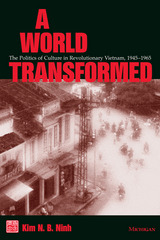 A World Transformed: The Politics of Culture in Revolutionary Vietnam, 1945-1965
Kim N. B. Ninh
University of Michigan Press, 2002 A World Transformed looks at the Vietnamese revolution from the perspective of Vietnamese culture itself rather than as a reaction to the Cold War or to the actions of external enemies. Kim N. B. Ninh explores the complex debates within Vietnamese society about the self, culture, and national identity. She shows how a collective sense of the nation's weakness united communists and many intellectuals, who looked to the establishment of a socialist state to offer both the ideology and the organization that would encourage the emergence of a modern, independent, postcolonial Vietnam.
The study covers the period from the Vietnamese communists' initial ascent to power in 1945 to the beginning of the escalation of the American involvement in the country's conflict in 1965, by which time a full-fledged socialist state had been in place in North Vietnam for eleven years. Through a nuanced examination of critical intellectual works, A World Transformed presents a complex view of a period fraught with contradictory possibilities and tensions that continue to resonate in Vietnam today. The extensive use of Vietnamese-language materials, access to archival data never before available, and innovative incorporation of literary and historical sources combine to make this study an invaluable depiction of the Vietnamese revolution.
Kim N. B. Ninh is Assistant Director of the Governance, Law, and Civil Society Programs, The Asia Foundation, San Francisco.
World Tree
David Wojahn
University of Pittsburgh Press, 2011
World Tree is in many respects, David Wojahn’s most ambitious collection to date; especially notable is a 25-poem sequence of ekphrastic poems, “Ochre,” which is accompanied by a haunting series of drawings and photographs of Neolithic Art and anonymous turn of the last century snapshots.
Wojahn continues to explore the themes and approaches which he is known for, among them the junctures between the personal and political, a giddy mixing of high and pop culture references, and a deep emotional engagement with whatever material he is writing about.
Winner of the 2012 Lenore Marshall Poetry Prize from the Academy of American Poets
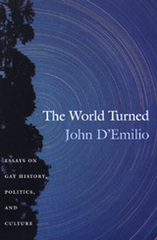 The World Turned: Essays on Gay History, Politics, and Culture
John D Emilio
Duke University Press, 2002 Something happened in the 1990s, something dramatic and irreversible. A group of people long considered a moral menace and an issue previously deemed unmentionable in public discourse were transformed into a matter of human rights, discussed in every institution of American society. Marriage, the military, parenting, media and the arts, hate violence, electoral politics, public school curricula, human genetics, religion: Name the issue, and the the role of gays and lesbians was a subject of debate. During the 1990s, the world seemed finally to turn and take notice of the gay people in its midst. In The World Turned, distinguished historian and leading gay-rights activist John D’Emilio shows how gay issues moved from the margins to the center of national consciousness during the critical decade of the 1990s. In this collection of essays, D’Emilio brings his historian’s eye to bear on these profound changes in American society, culture, and politics. He explores the career of Bayard Rustin, a civil rights leader and pacifist who was openly gay a generation before almost everyone else; the legacy of radical gay and lesbian liberation; the influence of AIDS activist and writer Larry Kramer; the scapegoating of gays and lesbians by the Christian Right; the gay-gene controversy and the debate over whether people are "born gay"; and the explosion of attention focused on queer families. He illuminates the historical roots of contemporary debates over identity politics and explains why the gay community has become, over the last decade, such a visible part of American life.
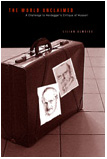 The World Unclaimed: A Challenge to Heidegger’s Critique of Husserl
Lilian Alweiss
Ohio University Press, 2003 The World Unclaimed argues that Heidegger’s critique of modern epistemology in Being and Time is seriously flawed. Heidegger believes he has done away with epistemological problems concerning the external world by showing that the world is an existential structure of Dasein. However, the author argues that Heidegger fails to make good his claim that he has “rescued” the phenomenon of the world, which he believes the tradition of philosophy has bypassed. Heidegger fails not only to reclaim the world but also to acknowledge its loss. Alweiss thus calls into question Heidegger’s claim that ontology is more fundamental than epistemology. The World Unclaimed develops its powerful critique of Being and Time by arguing for a return to Husserl. It draws on Husserl’s insight that it is the moving and sensing body that discloses how we are already familiar with the world. Kinaesthesia provides a key for understanding our relation to the world. The author thus suggests that thinkers in the vein of Husserl and Kant -who, for Heidegger, epitomize the tradition of modern philosophy by returning to a “worldless subject”- may provide us with the resources to reclaim the phenomenon of the world that Being and Time sets out to salvage. Alweiss’s fresh and innovative study demonstrates that it is possible to overcome epistemological skepticism without ever losing sight of the phenomenon of the world. Moreover, Alweiss challenges us to reconsider the relation between Husserl and Heidegger by providing a forceful defense of Husserl’s critique of cognition.
The World Viewed: Reflections on the Ontology of Film, Enlarged Edition
Stanley Cavell
Harvard University Press, 1979 Stanley Cavell looks closely at America's most popular art and our perceptions of it. His explorations of Hollywood's stars, directors, and most famous films—as well as his fresh look at Godard, Bergman, and other great European directors—will be of lasting interest to movie-viewers and intelligent people everywhere.
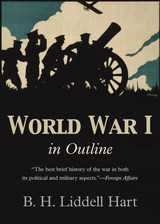 World War 1 in Outline
B. H. Liddell Hart
Westholme Publishing, 1936 A Concise Account of All the Major Battles, Innovations, and Political Events of the First World War by an Important Military Analyst
An abridgement of the author’s History of the World War, 1914–1918, and first published in 1936, World War I in Outline is a compact but comprehensive history of the “war to end all wars.” Divided into five parts representing each year of the war, Liddell Hart discusses the war on land, at sea, and in the air while skillfully incorporating the political events occurring at the same time. From his own experiences in the war and through studying the conflict in detail, the author developed and expressed his most important observation about military principles: direct attacks against an enemy firmly in position should not be attempted. He also put forth the notion that battles are more often decided by the commander’s actions and not the armies themselves. A lively and engrossing read, World War I in Outline is an ideal overview in time for the centennial of one of the major wars in history.
 World War and World Peace in the Age of Digital Capitalism
By Christian Fuchs
University of Westminster Press, 2025 World politics has become highly polarised, and a new world war has become more likely. The United Nations’ 2024 Pact for the Future expressed concerns about ‘the growing risks of a nuclear war which could pose an existential threat to humanity’. Will humanity descend into barbarism, or will we realise the dangers of our global problems, weapons of mass destruction, and climate catastrophe to avoid annihilation and create perpetual world peace? In World War and World Peace in the Age of Digital Capitalism, Christian Fuchs asks: how do violence and war manifest themselves in global digital capitalism? How do digital capitalism and digital technologies manifest themselves in violence and warfare? What are the prospects for world peace today? To prevent world war and advance world peace we need a better understanding of war and violence and their contexts and causes. We need to ask what war is, what violence is, what war and peace look like today and how they have changed in the 21st century. This book addresses these urgent questions and provides possible answers.
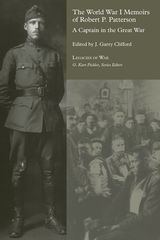 The World War I Memoirs of Robert P. Patterson: A Captain in the Great War
Gary J. Clifford
University of Tennessee Press, 2012
“This memoir illuminates key aspects of the war experience: the enthusiasm for fighting, tensions with officers, tedium with regard to noncombatant work, the variety of trench experiences, the sharp learning curve that the army underwent on the ground, and the confusing nature of combat for ground troops. As the centennial of the war approaches this well-annotated memoir that connects Patterson’s individual experiences to the larger U.S. experience of the war will appeal to general readers and specialists alike.” —Jennifer D. Keene, author of World War I: The American Soldier Experience
A journalist once called Under Secretary of War Robert P. Patterson “the toughest man in Washington” for his fervid efforts in managing U.S. mobilization in World War II. The World War I Memoirs of Robert P. Patterson: A Captain in the Great War recounts Patterson’s own formative military experiences in the First World War.
Written in the years following the conflict, this is a remarkable rendering of what it was like to be an infantry line officer during the so-called Great War. Patterson started his military career as a twenty-seven-year-old, barely-trained captain in the American Expeditionary Forces (A.E.F.). He was part of the 306th Infantry Regiment of New York’s famous 77th “Statue of Liberty” Division from July to November 1918. In this detailed account, Patterson describes in understated yet vivid prose just how raw and unprepared American soldiers were for the titanic battles on the Western Front. Patterson downplays his near-death experience in a fierce firefight that earned him and several of his men from Company F the Distinguished Service Cross. His depiction of the brutal Meuse-Argonne battle is haunting—the drenching cold rains, the omnipresent barbed wire, deep fog-filled ravines, the sweet stench of mustard gas, chattering German machine-guns, crashing artillery shells, and even a rare hot meal to be savored.
Dealing with more than just combat, Patterson writes of the friendships and camaraderie among the officers and soldiers of different ethnic and class backgrounds who made up the “melting pot division” of the 77th. He betrays little of the postwar disillusionment that afflicted some members of the “Lost Generation.”Editor J. Garry Clifford’s introduction places Patterson and his actions in historical context and illuminates how Patterson applied lessons learned from the GreatWar to his later service as assistant secretary, under secretary, and secretary of war from 1940 to 1947.
J. Garry Clifford, a professor of political science at the University of Connecticut, is the coauthor of America Ascendant: American Foreign Relations since 1939 and The First Peacetime Draft, as well as the coeditor of Presidents, Diplomats, and Other Mortals.
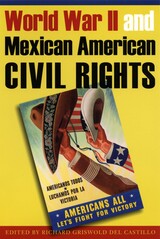 World War II and Mexican American Civil Rights
Edited by Richard Griswold del Castillo
University of Texas Press, 2008 World War II marked a turning point for Mexican Americans that fundamentally changed their expectations about how they should be treated by the greater U.S. society. The experiences of fighting alongside white Americans in the military, as well as of working in factory jobs for wages equal to those of Anglo workers, made Mexican Americans less willing to tolerate the second-class citizenship that had been their lot before the war. Having proven their loyalty and "Americanness" during World War II, Mexican Americans in the postwar years wanted to have the civil rights they knew they had earned. In this book, Richard Griswold del Castillo and Richard Steele investigate how the World War II experiences of Mexican Americans galvanized their struggle for civil rights and how the U.S. government responded to the needs and aspirations of Mexican Americans. The authors demonstrate, for example, that the U.S. government "discovered" Mexican Americans during World War II and set about addressing some of their problems as a way of forestalling a sense of grievance and disaffection that might have made the Mexican American community unwilling to support the war effort. The authors also show that, as much or more than governmental programs, the personal wartime experiences of Mexican Americans formed their civil rights consciousness. The book concludes with a selection of key essays and historical documents from the World War II period that collectively gives a first-person understanding of the civil rights struggles of Mexican Americans.
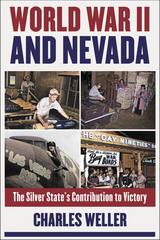 World War II and Nevada: The Silver State's Contribution to Victory
Charles Weller
University of Nevada Press, 2024 World War II and Nevada is an in-depth examination of the state’s role in the war. Nevada’s geographic location, land, sky, mineral resources, and the sacrifices of its people were crucial to victory—and transformed the state. The war brought the first significant development of the gaming industry; the introduction of a huge, permanent military presence; the diversification of its population; and a shift in political and economic power within the region.
Nevada’s previously unexamined role in the internment of Japanese Americans is explored, and so too is the role of women and minority groups in support of the war. The book concludes with a comprehensive list of those killed, wounded, or made prisoners of war during the conflict.
Weller provides the most thorough analysis of Nevada’s war effort to date and historians will find the book a valuable addition to their World War II history collections.
World War II and the Cold War: The Rhetoric of Hearts and Minds, Volume VIII
Martin J. Medhurst
Michigan State University Press, 2018 This volume examines crucial moments in the rhetoric of the Cold War, beginning with an exploration of American neutrality and the debate over entering World War II. Other topics include the long-distance debate carried on over international radio between Hitler and Franklin D. Roosevelt; understanding and interpreting World War II propaganda; domestic radio following the war and the use of Abraham Lincoln narratives as vehicles for American propaganda; the influence of foreign policy agents Dean Acheson, Paul Nitze, and George Kennan; and the rhetoric of former presidents John F. Kennedy and Ronald Reagan. Ultimately, this volume offers a broad-based look at the rhetoric framing the Cold War and in doing so offers insight into the political climate of today.
World War II: From the Battle Front to the Home Front, Thirty-Five Arkansans Tell their Stories
Kay B. Hall
University of Arkansas Press, 1995 In this diverse collection of stories derived from interviews, Arkansans who lived through the greatest global conflict of the century share their memories with unaffected candor. From those who fought in the Battle of the Bulge and the invasion of Tarawa to those who labored on the home front, the larger story of World War II emerges, a story full of heroism and tenacity, horror and triumph. The distinct voice of the person interviewed rises from each story in straightforward language that is frequently modest and humble, at times joyful, and often still dismayed at the scope and fury of the war. Through these voices, one can begin to understand how Americans dealt with the immense changes that occurred as their nation emerged from the Great Depression and joined the other Allied forces to win a war of incomparable scale and consequence.
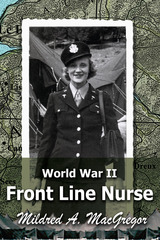 World War II Front Line Nurse
Mildred A. MacGregor
University of Michigan Press, 2008 In late 1942, along with so many others who signed up to support the war effort, thirty-year-old Mildred Radawiec left a comfortable position as a nurse at the University of Michigan Hospital and postponed her marriage to a soon-to-be doctor to volunteer as a surgical nurse in the major battle theaters of the war. Radawiec was one of thirty volunteers from the hospital surgical staff that comprised the University of Michigan Unit, the 298th General Hospital, as the University of Michigan Hospital was called. Radawiec's first-person history recounts her wartime experience with sharp detail and grace and sets the stage for a you-are-there experience---from the thrill of signing up and shipping out; to the harrowing ocean crossing and the arduous trip through the Sahara; to dangerous air raids and moving at a moment's notice, often at night with the lights off to avoid attacks. Radawiec was near Omaha Beach in France soon after D-Day, June 6, 1944, and details stories of marathon stints assisting the injured on the front lines as they poured in by the hundreds. Radawiec also traveled to Belgium and Germany and set up in the area near Aachen in the fall of 1944. In Germany she experienced Buzz Bombs---pilotless flying bombs---and even witnessed the death of a fellow nurse in a bombing attack in which medics brought in wounded soldiers by the truckload. Radawiec also leavens her story with uplifting tales of heroism and courage and intersperses the narrative with poignant letters from her family and fiancé. This stirring personal account of war will mesmerize anyone interested in World War II history and women's too-often-overlooked role in it.
 World War Zoos: Humans and Other Animals in the Deadliest Conflict of the Modern Age
John M. Kinder
University of Chicago Press, 2025 A new and heartbreaking history of World War II as told through the shocking experiences of zoos across the globe.
As Europe lurched into war in 1939, zookeepers started killing their animals. On September 1, as German forces invaded Poland, Warsaw began with its reptiles. Two days later, workers at the London Zoo launched a similar spree, dispatching six alligators, seven iguanas, sixteen southern anacondas, six Indian fruit bats, a fishing cat, a binturong, a Siberian tiger, five magpies, an Alexandrine parakeet, two bullfrogs, three lion cubs, a cheetah, four wolves, and a manatee over the next few months. Zoos worldwide did the same. The reasons were many, but the pattern was clear: The war that was about to kill so many people started by killing so many animals. Why? And how did zoos, nevertheless, not just survive the war but play a key role in how people did, too?
A harrowing yet surprisingly uplifting chronicle, Kinder’s World War Zoos traces how zoos survived the deadliest decades of global history, from the Great Depression, through the terrors of World War II, to the dawn of the Cold War. More than anything before or since, World War II represented an existential threat to the world’s zoological institutions. Some zoos were bombed; others bore the indignities of foreign occupation. Even zoos that were spared had to wrestle with questions rarely asked in public: What should they do when supplies ran low? Which animals should be killed to protect the lives of others? And how could zoos justify keeping dangerous animals that might escape and run wild during an aerial attack?
Zoos in wartime reveal the shared vulnerabilities of humans and animals during periods of social unrest and environmental peril. World War II–era zoos offered people ways to think about and grapple with imprisonment, powerlessness, and degradation. Viewed today, the story of zoos during World War II can be read as an allegory of twenty-first-century crises, as the effects of climate change threaten all life across the planet.
A one-of-a-kind history, World War Zoos is the story of how the world’s zoos survived the deadliest conflict of the twentieth century—and what was lost along the way.
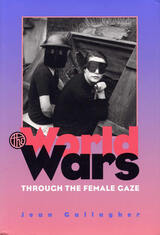 The World Wars Through the Female Gaze
Jean Gallagher
Southern Illinois University Press, 1998
For some women writers and photographers during the two world wars—Edith Wharton, Mildred Aldrich, Martha Gellhorn, Lee Miller, H.D., and Gertrude Stein—the construction of the female subject as an observer of combat became a vital concern. Their explorations of vision took place against the backdrop of a larger shift in Western culture's understanding of what "seeing" meant in common practice and philosophical discourse alike. The role of visuality in their lives was massively transformed not only by the rigid gender roles of war but by the introduction of new combat practices and technologies such as aerial surveillance, trench warfare, and civilian bombardment.
In The World Wars Through the Female Gaze, Jean Gallagher maps one portion of the historicized, gendered territory of what Nancy K. Miller calls the "gaze in representation." Expanding the notion of the gaze in critical discourse, Gallagher situates a number of visual acts within specific historic contexts to reconstruct the wartime female subject. She looks at both the female observer's physical act of seeing—and the refusal to see—for example, a battlefield, a wounded soldier, a torture victim, a national flag, a fashion model, a bombed city, or a wartime hallucination.
The book begins with two instances of wartime propaganda written by American women in France in 1915. Both Edith Wharton's Fighting France and Mildred Aldrich's A Hilltop on the Marne offer a complex and often contradictory sense of a woman writer's struggles with authority, resistance, and killing. In the process, Gallagher teases out the role of specular vision and the impossibility of "directly" seeing the war.
Gallagher then turns to literary and visual texts produced by two female journalists between 1940 and 1945. Martha Gellhorn's 1940 novel A Stricken Field exhibits a range of gendered seeing positions within and in opposition to the visual ideologies of fascism during the Nazi occupation of Czechoslovakia. Lee Miller's war correspondence and photography for Vogue show how Miller constructed herself and her predominantly female American audience as antifascist observers of war by working with and against some of the conventions of surrealist fashion photography.
Gallagher concludes by focusing on the experimental autobiographical prose of H.D. and Gertrude Stein to explore the functions of vision on two World War II "homefronts"—London during the Blitz and Vichy France.
 The World We Created at Hamilton High
Gerald Grant
Harvard University Press, 1988 In this wonderfully evocative picture of an urban American high school and its successes and setbacks over the past thirty-five years, Gerald Grant works out a unique perspective on what makes a good school: one that asserts moral and intellectual authority without becoming rigidly doctrinaire or losing the precious gains in equality of opportunity that have been won at great cost.
Grant describes what happened inside Hamilton High (a real school, although its identity is disguised), and how different worlds evolved as the school’s authority system was transformed. After the opening of Hamilton High in the buoyant and self-confident 1950s, the school plunged into a period of violence and radical deconstruction in the late sixties. Grant charts the rise of student power in the seventies, followed by new transformations of the school in the last decade occasioned in part by the mainstreaming of disabled students and the arrival of Asian immigrants. Things got very bad before they got better, but they did get better. The school went from white power to black power to genuine racial equality. Its average test scores declined and then improved. Although test-score means did not return to their former levels, the gap in achievement between the social classes decreased. Violence was replaced by a sense of relative safety and security.
Yet this book is not just a case study. In the second half the author presents a general analysis of American education. He contrasts the world of Hamilton High with other possible worlds, including those at three schools (one public and two private) that exhibit a strong positive ethos. He looks at the way the moral and intellectual worlds have been sundered in many contemporary public schools and asks whether they can be put back together again.
The book is grounded in a creative methodology that includes research by students at Hamilton High, whom Grant trained to analyze life in their school. Later he shared this research with teachers as a means of opening a dialogue about what changes they wanted to make. Grant’s analysis leads to recommendations for two essential reforms, and in an epilogue the teachers who read this hook also tell us what they make of it and offer their own conclusions. Their challenging final words will spur the thinking of educators, policymakers, scholars, parents, and all those who are concerned about our schools today.
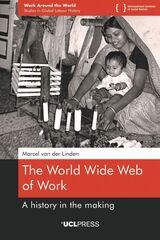 The World Wide Web of Work: A History in the Making
Marcel van der Linden
University College London, 2023 A groundbreaking exploration of the core ideas and concepts of global labor history.
Global labor history is one of the fastest-growing fields of study worldwide today. This volume assembles a group of contributors from around the world to discuss the core concepts “capitalism” and “workers,” and to refine notions such as “coerced labor,” “household strategies,” and “labor markets.” It explores in new ways the connections between laborers in different parts of the world, arguing that both globalization and modern labor management originated in agriculture in the Global South and were only later introduced in Northern industrial settings. It reveals that nineteenth-century chattel slavery was frequently replaced by other forms of coerced labor, and it reconstructs the twentieth-century attempts of the International Labor Organisation to regulate work standards internationally. The book also pays attention to the relational inequality through which workers in wealthy countries benefit from the exploitation of those in poor countries. The final part addresses workers’ resistance and acquiescence: why collective actions often have unanticipated consequences, why and how workers sometimes organize massive flights from exploitation and oppression, and why proletarian revolutions took place in pre-industrial or industrializing countries but never in fully developed capitalist societies.
The World within War: America's Combat Experience in World War II
Gerald F. Linderman
Harvard University Press Gerald Linderman has created a seamless and highly original social history, authoritatively recapturing the full experience of combat in World War II. Drawing on letters and diaries, memoirs and surveys, Linderman explores how ordinary frontline American soldiers prepared for battle, related to one another, conceived of the enemy, thought of home, and reacted to battle itself. He argues that the grim logic of protracted combat threatened soldiers not only with the loss of limbs and lives but with growing isolation from country and commanders and, ultimately, with psychological disintegration.
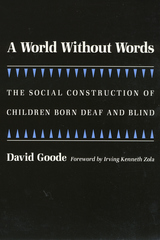 A World without Words: The Social Construction of Children Born Deaf and Blind
David Goode, foreword by Irving Kenneth Zola
Temple University Press, 1994 During the Rubella Syndrome epidemic of the 1960s, many children were born deaf, blind, and mentally disabled. David Goode has devoted his life and career to understanding such people's world, a world without words, but not, the author confirms, one without communication. This book is the result of his studies of two children with congenital deaf-blindness and mental retardation. Goode spent countless hours observing, teaching, and playing with Christina, who had been institutionalized since age six, and Bianca, who remained in the care of her parents. He also observed the girls' parents, school, and medical environments, exploring the unique communication practices—sometimes so subtle they are imperceptible to outsiders—that family and health care workers create to facilitate innumerable every day situations. A World Without Words presents moving and convincing evidence that human beings both with and without formal language can understand and communicate with each other in many ways. Through various experiments in such unconventional forms of communication as playing guitar, mimicking, and body movements like jumping, swinging, and rocking, Goode established an understanding of these children on their own terms. He discovered a spectrum of non-formal language through which these children create their own set of symbols within their own reality, and accommodate and maximize the sensory resources they do have. Ultimately, he suggests, it is impractical to attempt to interpret these children's behaviors using ideas about normal behavior of the hearing and seeing world.
A World You Do Not Know: Settler Societies, Indigenous Peoples and the Attack on Cultural Diversity
Colin Samson
University of London Press, 2014 Lists over 3,500 theses in progress on 1 January 2017 in both history and other departments, classified according to period and area Gives full details of title, supervisor and university Helps postgraduate students to select a topic and a supervisor, to publicise their topic and to discover others working in related fields Provides an overview of the amount and variety of current historical research for higher degrees
Worlding the Western: Contemporary US Western Fiction and the Global Community
Neil Campbell
University of Nevada Press, 2022 Worlding the Western views the fiction of the Western United States as a focal point for a reexamination of the consequences of the exceptionalism and closed borders of the Trump Era. At a time of bounded individualism, new nativism, climate emergency, and migration crises, author Neil Campbell argues that fiction offers opportunities to challenge the dark side of globalization. He proposes worlding as a different and more open form of politics.
Diversity, disparity, and opposition are central to the dynamic frictional fiction considered in this book. The American West provides a powerful test case in which these features are present and yet, historically, have often been masked or denied in the rush toward unanimity and nation building. Worlding is, therefore, a positive, critical concept through which to view the notion of a single world under pressure.
Worlding the Western: Contemporary US Western Fiction and the Global Community
Neil Campbell
University of Nevada Press, 2022 Worlding the Western views the fiction of the Western United States as a focal point for a reexamination of the consequences of the exceptionalism and closed borders of the Trump Era. At a time of bounded individualism, new nativism, climate emergency, and migration crises, author Neil Campbell argues that fiction offers opportunities to challenge the dark side of globalization. He proposes worlding as a different and more open form of politics.
Diversity, disparity, and opposition are central to the dynamic frictional fiction considered in this book. The American West provides a powerful test case in which these features are present and yet, historically, have often been masked or denied in the rush toward unanimity and nation building. Worlding is, therefore, a positive, critical concept through which to view the notion of a single world under pressure.
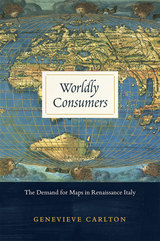 Worldly Consumers: The Demand for Maps in Renaissance Italy
Genevieve Carlton
University of Chicago Press, 2015 Though the practical value of maps during the sixteenth century is well documented, their personal and cultural importance has been relatively underexamined. In Worldly Consumers, Genevieve Carlton explores the growing availability of maps to private consumers during the Italian Renaissance and shows how map acquisition and display became central tools for constructing personal identity and impressing one’s peers.
Drawing on a variety of sixteenth-century sources, including household inventories, epigrams, dedications, catalogs, travel books, and advice manuals, Worldly Consumers studies how individuals displayed different maps in their homes as deliberate acts of self-fashioning. One citizen decorated with maps of Bruges, Holland, Flanders, and Amsterdam to remind visitors of his military prowess, for example, while another hung maps of cities where his ancestors fought or governed, in homage to his auspicious family history. Renaissance Italians turned domestic spaces into a microcosm of larger geographical places to craft cosmopolitan, erudite identities for themselves, creating a new class of consumers who drew cultural capital from maps of the time.
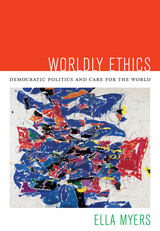 Worldly Ethics: Democratic Politics and Care for the World
Ella Myers
Duke University Press, 2013 What is the spirit that animates collective action? What is the ethos of democracy? Worldly Ethics offers a powerful and original response to these questions, arguing that associative democratic politics, in which citizens join together and struggle to shape shared conditions, requires a world-centered ethos. This distinctive ethos, Ella Myers shows, involves care for "worldly things," which are the common and contentious objects of concern around which democratic actors mobilize. In articulating the meaning of worldly ethics, she reveals the limits of previous modes of ethics, including Michel Foucault's therapeutic model, based on a "care of the self," and Emmanuel Levinas's charitable model, based on care for the Other. Myers contends that these approaches occlude the worldly character of political life and are therefore unlikely to inspire and support collective democratic activity. The alternative ethics she proposes is informed by Hannah Arendt's notion of amor mundi, or love of the world, and it focuses on the ways democratic actors align around issues, goals, or things in the world, practicing collaborative care for them. Myers sees worldly ethics as a resource that can inspire and motivate ordinary citizens to participate in democratic politics, and the book highlights civic organizations that already embody its principles.
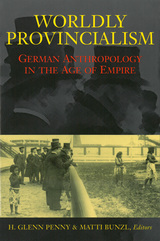 Worldly Provincialism: German Anthropology in the Age of Empire
H. Glenn Penny and Matti Bunzl, Editors
University of Michigan Press, 2003 Worldly Provincialism introduces readers to the intellectual history that drove the emergence of German anthropology. Drawing on the most recent work on the history of the discipline, the contributors rethink the historical and cultural connections between German anthropology, colonialism, and race. By showing that German intellectual traditions differed markedly from those of Western Europe, they challenge the prevalent assumption that Europeans abroad shared a common cultural code and behaved similarly toward non-Europeans. The eloquent and well-informed essays in this volume demonstrate that early German anthropology was fueled by more than a simple colonialist drive. Rather, a wide range of intellectual history shaped the Germans' rich and multifarious interest in the cultures, religions, physiognomy, physiology, and history of non-Europeans, and gave rise to their desire to connect with the wider world.
Furthermore, this volume calls for a more nuanced understanding of Germany's standing in postcolonial studies. In contrast to the prevailing view of German imperialism as a direct precursor to Nazi atrocities, this volume proposes a key insight that goes to the heart of German historiography: There is no clear trajectory to be drawn from the complex ideologies of imperial anthropology to the race science embraced by the Nazis. Instead of relying on a nineteenth-century explanation for twentieth-century crimes, this volume ultimately illuminates German ethnology and anthropology as local phenomena, best approached in terms of their own worldly provincialism.
H. Glenn Penny is Assistant Professor of History at the University of Missouri, Kansas City.
Matti Bunzl Assistant Professor of Anthropology and History at the University of Illinois at Urbana-Champaign.
 Worldly Stage: Theatricality in Seventeenth-Century China
Sophie Volpp
Harvard University Press, 2011 In seventeenth-century China, as formerly disparate social spheres grew closer, the theater began to occupy an important ideological niche among traditional cultural elites, and notions of performance and spectatorship came to animate diverse aspects of literati cultural production. In this study of late-imperial Chinese theater, Sophie Volpp offers fresh readings of major texts such as Tang Xianzu’s Peony Pavilion (Mudan ting) and Kong Shangren’s Peach Blossom Fan (Taohua shan), and unveils lesser-known materials such as Wang Jide’s play The Male Queen (Nan wanghou). In doing so, Volpp sheds new light on the capacity of seventeenth-century drama to comment on the cultural politics of the age.
Worldly Stage arrives at a conception of theatricality particular to the classical Chinese theater and informed by historical stage practices. The transience of worldly phenomena and the vanity of reputation had long informed the Chinese conception of theatricality. But in the seventeenth century, these notions acquired a new verbalization, as theatrical models of spectatorship were now applied to the contemporary urban social spectacle in which the theater itself was deeply implicated.
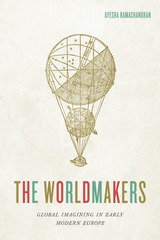 The Worldmakers: Global Imagining in Early Modern Europe
Ayesha Ramachandran
University of Chicago Press, 2015 In this beautifully conceived book, Ayesha Ramachandran reconstructs the imaginative struggles of early modern artists, philosophers, and writers to make sense of something that we take for granted: the world, imagined as a whole. Once a new, exciting, and frightening concept, “the world” was transformed in the sixteenth and seventeenth centuries. But how could one envision something that no one had ever seen in its totality?
The Worldmakers moves beyond histories of globalization to explore how “the world” itself—variously understood as an object of inquiry, a comprehensive category, and a system of order—was self-consciously shaped by human agents. Gathering an international cast of characters, from Dutch cartographers and French philosophers to Portuguese and English poets, Ramachandran describes a history of firsts: the first world atlas, the first global epic, the first modern attempt to develop a systematic natural philosophy—all part of an effort by early modern thinkers to capture “the world” on the page.
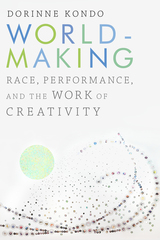 Worldmaking: Race, Performance, and the Work of Creativity
Dorinne Kondo
Duke University Press, 2018 In this bold, innovative work, Dorinne Kondo theorizes the racialized structures of inequality that pervade theater and the arts. Grounded in twenty years of fieldwork as dramaturg and playwright, Kondo mobilizes critical race studies, affect theory, psychoanalysis, and dramatic writing to trenchantly analyze theater's work of creativity as theory: acting, writing, dramaturgy. Race-making occurs backstage in the creative process and through economic forces, institutional hierarchies, hiring practices, ideologies of artistic transcendence, and aesthetic form. For audiences, the arts produce racial affect--structurally over-determined ways affect can enhance or diminish life. Upending genre through scholarly interpretation, vivid vignettes, and Kondo's original play, Worldmaking journeys from an initial romance with theater that is shattered by encounters with racism, toward what Kondo calls reparative creativity in the work of minoritarian artists Anna Deavere Smith, David Henry Hwang, and the author herself. Worldmaking performs the potential for the arts to remake worlds, from theater worlds to psychic worlds to worldmaking visions for social transformation.
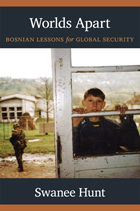 Worlds Apart: Bosnian Lessons for Global Security
Swanee Hunt
Duke University Press, 2011 Worlds Apart tells of a well-meaning foreign policy establishment often deaf to the voices of everyday people. Its focus is the Bosnian War, but its implications extend to any situation that prompts the consideration of military intervention on humanitarian grounds. Ambassador Swanee Hunt served in Vienna during the Bosnian War and was intimately involved in American policy toward the Balkans. During her tenure as ambassador and after, she made scores of trips throughout Bosnia and the rest of the former Yugoslavia, attempting to understand the costly delays in foreign military intervention. To that end, she had hundreds of conversations with a wide range of politicians, refugees, journalists, farmers, clergy, aid workers, diplomats, soldiers, and others. In Worlds Apart, Hunt’s eighty vignettes alternate between the people living out the war and “the internationals” deciding whether or how to intervene. From these stories, most of which she witnessed firsthand, she draws six lessons applicable to current conflicts throughout the world. These lessons cannot be learned from afar, Hunt says, with insiders and outsiders working apart. Only by bridging those worlds can we build a stronger paradigm of inclusive international security.
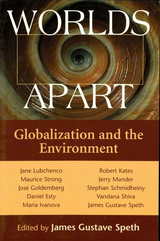 Worlds Apart: Globalization And The Environment
Edited by James Gustave Speth
Island Press, 2003 Worlds Apart presents a cohesive set of essays by leading thinkers on the subject of globalization, offering a thoughtful overview of the major environmental issues related to globalization in a clear, reasoned style. Framed by Gus Speth’s introduction and conclusion, essays range from Jane Lubchenco’s discussion of the scientific indicators of global environmental change to Robert Kates’ examination of the prospect that our growing global interconnectedness could lead a transition to a more sustainable world to Vandana Shiva’s impassioned plea for a new “living democracy” that counters the degrading, dehumanizing tendencies of the global economy. Other contributors include Maurice Strong on the Rio Earth Summit and the future course of environmentalism, José Goldemberg on energy, Jerry Mander on the inherent destructiveness of the global economic system, Stephan Schmidheiny on the forestry industry, and Daniel Esty and Maria Ivanova on global environmental governance. Edited by one of the world’s leading experts on international environmental issues, the book brings together the most respected thinkers and actors on the world stage to offer a compelling set of perspectives and a solid introduction to the social and environmental dimensions of globalization.
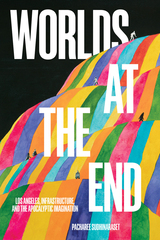 Worlds at the End: Los Angeles, Infrastructure, and the Apocalyptic Imagination
Pacharee Sudhinaraset
Temple University Press, 2024 Worlds at the End attends to a body of literature that renders Los Angeles’s infrastructure, or its material foundations, as central to the rise and consolidation of colonial life. Pacharee Sudhinaraset employs a women-of-color feminist methodology to examine Indigenous, Black, Asian American, and Latinx literary works about apocalypse and the end times.
Worlds at the End analyzes destruction, rupture, and continuance through texts ranging from Karen Tei Yamashita’s Tropic of Orange, which considers racial colonial infrastructure, to the work of Diné poet Esther Belin, which illuminates how the separation between the Indian reservation and LA is part of a broader infrastructural network of termination. And she unpacks Octavia Butler’s post-apocalyptic novel, Parable of the Sower, where LA’s freeways and roadways are routes of forced migration, colonization, and flight.
Tearing down existing institutions that marginalize people of color and moving past them, Worlds at the End highlights the imaginaries of those subjugated, racialized, and made other, for whom modernity, freedom, and progress meant violence, brutality, and relegation to the status of devalued surplus populations. As Sudhinaraset deftly shows, the apocalypse marks moments of historical and spatial transition, offering stories of doomsdays that will give rise to resurgence and regeneration.
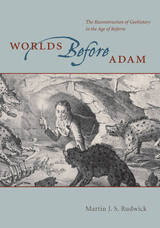 Worlds Before Adam: The Reconstruction of Geohistory in the Age of Reform
Martin J. S. Rudwick
University of Chicago Press, 2008 In the late eighteenth and early nineteenth centuries, scientists reconstructed the immensely long history of the earth—and the relatively recent arrival of human life. The geologists of the period, many of whom were devout believers, agreed about this vast timescale. But despite this apparent harmony between geology and Genesis, these scientists still debated a great many questions: Had the earth cooled from its origin as a fiery ball in space, or had it always been the same kind of place as it is now? Was prehuman life marked by mass extinctions, or had fauna and flora changed slowly over time?
The first detailed account of the reconstruction of prehuman geohistory, Martin J. S. Rudwick’s Worlds Before Adam picks up where his celebrated Bursting the Limits of Time leaves off. Here, Rudwick takes readers from the post-Napoleonic Restoration in Europe to the early years of Britain’s Victorian age, chronicling the staggering discoveries geologists made during the period: the unearthing of the first dinosaur fossils, the glacial theory of the last ice age, and the meaning of igneous rocks, among others. Ultimately, Rudwick reveals geology to be the first of the sciences to investigate the historical dimension of nature, a model that Charles Darwin used in developing his evolutionary theory.
Featuring an international cast of colorful characters, with Georges Cuvier and Charles Lyell playing major roles and Darwin appearing as a young geologist, Worlds Before Adam is a worthy successor to Rudwick’s magisterial first volume. Completing the highly readable narrative of one of the most momentous changes in human understanding of our place in the natural world, Worlds Before Adam is a capstone to the career of one of the world’s leading historians of science.
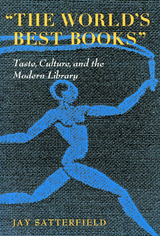 "The World's Best Books": Taste, Culture, and the Modern Library
Jay Satterfield
University of Massachusetts Press, 2002 In October 1930, Macy's department store in New York City used the inexpensive book series "The Modern Library of the World's Best Books" as a loss-leader to draw customers into the store. Selling for only nine cents a copy, the small-format, modern classics attracted crowds of buyers. Businessmen, housewives, students, bohemian intellectuals, and others waited in long lines to purchase affordable hard-bound copies of works by the likes of Tolstoy, Wilde, Joyce, and Woolf. It was a significant moment in American cultural history, demonstrating that a series of books respected and praised by the nation's self-appointed arbiters of taste could attract a throng of middle-class consumers without damaging its reputation as a vehicle of "serious culture."
The Modern Library's reputation stands in sharp contrast to that of similar publishing ventures dismissed by critics as agents of "middlebrow culture," such as the Book of-the-Month Club. Writers for the New Republic, the Nation, and the Bookman expressed their fears that mass-production and new distribution schemes would commodify literature and deny the promise of American culture. Yet although the Modern Library offered the public a uniformly packaged, preselected set of "the World's Best Books," it earned the praise of these self-consciously intellectual critics.
Focusing on the Modern Library's marketing strategies, editorial decisions, and close attention to book design, Jay Satterfield explores the interwar cultural dynamics that allowed the publisher of the series to exploit the forces of mass production and treat books as commodities while still positioning the series as a revered cultural entity. So successful was this approach that the modern publishing colossus Random House was built on the reputation, methods, and profits of the Modern Library.
The Worlds between Two Rivers: Perspectives on American Indians in Iowa
Gretchen M. Bataille
University of Iowa Press, 2000 Originally published in 1978, The Worlds between Two Rivers intentionally reflected a wide spectrum of views on Native Americans in Iowa: those of Native Americans themselves and of Euro-Americans, those of laypeople, and those of professional educators, social scientists, and humanists. Now, more than twenty years later, this expanded edition reflects the far-reaching and complicated changes for American Indians in this region.
Two new essays--one discussing the issues surrounding the reburial of disinterred American Indian skeletal remains and the repatriation of bones and cultural objects, the other dealing with the native people from whom the state of Iowa took its name--not only express the continuing American Indian presence in Iowa but also extend the bridge for non-Indian people to better understand those Iowans who represent the state's first nations.
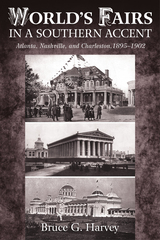 World’s Fairs in a Southern Accent: Atlanta, Nashville, and Charleston, 1895–1902
Bruce G. Harvey
University of Tennessee Press, 2014 The South was no stranger to world’s fairs prior to the end of the nineteenth century. Atlanta first hosted a fair in the 1880s, as did New Orleans and Louisville, but after the 1893 World’s Columbian Exposition in Chicago drew comparisons to the great exhibitions of Victorian-era England, Atlanta’s leaders planned to host another grand exposition that would not only confirm Atlanta as an economic hub the equal of Chicago and New York, but usher the South into the nation’s industrial and political mainstream. Nashville and Charleston quickly followed suit with their own exhibitions.
In the 1890s, the perception of the South was inextricably tied to race, and more specifically racial strife. Leaders in Atlanta, Nashville, and Charleston all sought ways to distance themselves from traditional impressions about their respective cities, which more often than not conjured images of poverty and treason in Americans barely a generation removed from the Civil War. Local business leaders used large-scale expositions to lessen this stigma while simultaneously promoting culture, industry, and economic advancement. Atlanta’s Cotton States and International Exposition presented the city as a burgeoning economic center and used a keynote speech by Booker T. Washington to gain control of the national debate on race relations. Nashville’s Tennessee Centennial and International Exposition chose to promote culture over mainstream success and marketed Nashville as a “Centennial City” replete with neoclassical architecture, drawing on its reputation as “the Athens of the south.” Charleston’s South Carolina Inter-State and West Indian Exposition followed in the footsteps of Atlanta’s exposition. Its new class of progressive leaders saw the need to reestablish the city as a major port of commerce and designed the fair around a Caribbean theme that emphasized trade and the corresponding economics that would raise Charleston from a cotton exporter to an international port of interest.
Bruce G. Harvey studies each exposition beginning at the local and individual level of organization and moving upward to explore a broader regional context. He argues that southern urban leaders not only sought to revive their cities but also to reinvigorate the South in response to northern prosperity. Local businessmen struggled to manage all the elements that came with hosting a world’s fair, including raising funds, designing the fairs’ architectural elements, drafting overall plans, soliciting exhibits, and gaining the backing of political leaders. However, these businessmen had defined expectations for their expositions not only in terms of economic and local growth but also considering what an international exposition had come to represent to the community and the region in which they were hosted. Harvey juxtaposes local and regional aspects of world’s fair in the South and shows that nineteenth-century expositions had grown into American institutions in their own right.
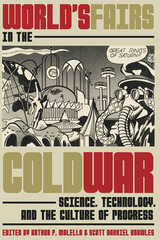 World's Fairs in the Cold War: Science, Technology, and the Culture of Progress
Arthur P. Molella
University of Pittsburgh Press, 2019
The post–World War II science-based technological revolution inevitably found its way into almost all international expositions with displays on atomic energy, space exploration, transportation, communications, and computers. Major advancements in Cold War science and technology helped to shape new visions of utopian futures, the stock-in-trade of world’s fairs. From the 1940s to the 1980s, expositions in the United States and around the world, from Brussels to Osaka to Brisbane, mirrored Cold War culture in a variety of ways, and also played an active role in shaping it. This volume illustrates the cultural change and strain spurred by the Cold War, a disruptive period of scientific and technological progress that ignited growing concern over the impact of such progress on the environment and humanistic and spiritual values. Through the lens of world’s fairs, contributors across disciplines offer an integrated exploration of the US–USSR rivalry from a global perspective and in the context of broader social and cultural phenomena—faith and religion, gender and family relations, urbanization and urban planning, fashion, modernization, and national identity—all of which were fundamentally reshaped by tensions and anxieties of the Atomic Age.
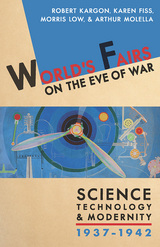 World's Fairs on the Eve of War: Science, Technology, and Modernity, 1937–1942
Robert H. Kargon
University of Pittsburgh Press, 2015 Since the first world’s fair in London in 1851, at the dawn of the era of industrialization, international expositions served as ideal platforms for rival nations to showcase their advancements in design, architecture, science and technology, industry, and politics. Before the outbreak of World War II, countries competing for leadership on the world stage waged a different kind of war—with cultural achievements and propaganda—appealing to their own national strengths and versions of modernity in the struggle for power. World’s Fairs on the Eve of War examines five fairs and expositions from across the globe—including three that were staged (Paris, 1937; Dusseldorf, 1937; and New York, 1939–40), and two that were in development before the war began but never executed (Tokyo, 1940; and Rome, 1942). This coauthored work considers representations of science and technology at world’s fairs as influential cultural forces and at a critical moment in history, when tensions and ideological divisions between political regimes would soon lead to war.
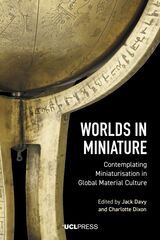 Worlds in Miniature: Contemplating Miniaturisation in Global Material Culture
Edited by Jack Davy and Charlotte Dixon
University College London, 2019 Miniaturization is the creation of small objects that resemble larger ones, usually but not always for purposes different to those of the larger original object. Worlds in Miniature brings together researchers working across various regions, time periods and disciplines to explore the subject of miniaturization as a material culture technique. It offers original contributions to the field of miniaturization through its broad geographical scope, interdisciplinary approach, and deep understanding of miniatures and their diverse contexts.
Beginning with an introduction by the editors, which offers a guide to studying and comparing miniatures, the following chapters include studies of miniature Neolithic stone circles on Exmoor, Ancient Egyptian miniature assemblages, miniaturization under colonialism as practiced by the Makah People of Washington State, miniature watercraft from India, miniaturized contemporary tourist art of the Warao people of Venezuela, and dioramas on display in the Science Museum. Interspersing the chapters are interviews with miniature-makers, including two miniature boat builders at the National Maritime Museum, Cornwall and a freelance architectural model maker. The interdisciplinary nature of the volume makes it suitable reading for anthropologists, historians, archaeologists, artists, and researchers in related fields across the social sciences.
Worlds in the Sky: Planetary Discovery from Earliest Times Through Voyager and Magellan
William Sheehan
University of Arizona Press, 1992 Ever since early stargazers discovered that some heavenly bodies wandered among the others, people have been fascinated by the planets. Kepler calculated their orbits from naked-eye observations; Galileo’s telescope made it possible to discern their markings; now observations from spacecraft provide electronically enhanced images that bring these distant worlds even closer.
In Worlds in the Sky, William Sheehan gives us a history of this long fascination, weaving together scientific history, anecdotes surrounding planetary discoveries, and the personal reflections of an incurable amateur astronomer. He describes how we arrived at our current understanding of the Moon and the planets and shows how certain individuals in history shaped the world’s knowledge about the Solar System.
 Worlds Made by Words: Scholarship and Community in the Modern West
Anthony Grafton
Harvard University Press, 2009 In this book Anthony Grafton lets us in on one of the great secrets of scholars and intellectuals: although scholars lead solitary lives in order to win independence of mind, they also enjoy the conviviality of sharing a project sustained by common ideals, practices, and institutions. It’s like Masonry, but without the secret handshakes.Grafton reveals the microdynamics of the scholarly life through a series of essays on institutions and on scholars ranging from early modern polymaths to modern intellectual historians to American thinkers and writers. He takes as his starting point the republic of letters—that loose society of intellectuals that first took shape in the sixteenth century and continued into the eighteenth. Its inhabitants were highly original, individual thinkers and writers. Yet as Grafton shows, they were all formed, in some way, by the very groups and disciplines that they set out to build.In our noisy, caffeinated world it has never been more challenging to be a scholar. When many of our fellow citizens seem to have forgotten why we collect books in the buildings we call libraries, Grafton’s engaging, erudite essays could be a rallying cry for the revival of the liberal arts.
 Worlds of Dissent: Charter 77, The Plastic People of the Universe, and Czech Culture under Communism
Jonathan Bolton
Harvard University Press, 2012 Worlds of Dissent analyzes the myths of Central European resistance popularized by Western journalists and historians, and replaces them with a picture of the struggle against state repression as the dissidents themselves understood, debated, and lived it. In the late 1970s, when Czech intellectuals, writers, and artists drafted Charter 77 and called on their government to respect human rights, they hesitated to name themselves “dissidents.” Their personal and political experiences—diverse, uncertain, nameless—have been obscured by victory narratives that portray them as larger-than-life heroes who defeated Communism in Czechoslovakia.
Jonathan Bolton draws on diaries, letters, personal essays, and other first-person texts to analyze Czech dissent less as a political philosophy than as an everyday experience. Bolton considers not only Václav Havel but also a range of men and women writers who have received less attention in the West—including Ludvík Vaculík, whose 1980 diary The Czech Dream Book is a compelling portrait of dissident life.
Bolton recovers the stories that dissidents told about themselves, and brings their dilemmas and decisions to life for contemporary readers. Dissidents often debated, and even doubted, their own influence as they confronted incommensurable choices and the messiness of real life. Portraying dissent as a human, imperfect phenomenon, Bolton frees the dissidents from the suffocating confines of moral absolutes. Worlds of Dissent offers a rare opportunity to understand the texture of dissent in a closed society.
 The Worlds of Herman Kahn: The Intuitive Science of Thermonuclear War
Sharon Ghamari-Tabrizi
Harvard University Press, 2005 Herman Kahn was the only nuclear strategist in America who might have made a living as a standup comedian. Indeed, galumphing around stages across the country, joking his way through one grotesque thermonuclear scenario after another, he came frighteningly close. In telling the story of Herman Kahn, whose 1960 book On Thermonuclear War catapulted him into celebrity, Sharon Ghamari-Tabrizi captures an era that is still very much with us--a time whose innocence, gruesome nuclear humor, and outrageous but deadly serious visions of annihilation have their echoes in the "known unknowns and unknown unknowns" that guide policymakers in our own embattled world.
Portraying a life that combined aspects of Lenny Bruce, Hitchcock, and Kubrick, Ghamari-Tabrizi presents not one Herman Kahn, but many--one who spoke the suffocatingly dry argot of the nuclear experts, another whose buffoonery conveyed the ingenious absurdity of it all, and countless others who capered before the public, ambiguous, baffling, always open to interpretation. This, then, is a story of one thoroughly strange and captivating man as well as a cultural history of our moment. In Herman Kahn's world is a critical lesson about how Cold War analysts learned to fill in the ciphers of strategic uncertainty, and thus how we as a nation learned to live with the peculiarly inventive quality of strategy, in which uncertainty generates extravagant threat scenarios.
Revealing the metaphysical behind the dryly deliberate, apparently practical discussion of nuclear strategy, this book depicts the creation of a world where clever men fashion Something out of Nothing--and establishes Herman Kahn as our first virtuoso of the unknown unknowns.
 Worlds of Knowledge in Women’s Travel Writing
James Uden
Harvard University Press Worlds of Knowledge in Women’s Travel Writing rediscovers the works of a wide range of authors from the eighteenth to the twentieth century. A stowaway on a voyage circumnavigating the globe; a nineteenth-century visitor to schools in Japan; an Indian activist undertaking a pilgrimage to Iraq—these are some of the women whose experiences come to life in this volume. Worlds of Knowledge explores travel writing as a genre for communicating information about other cultures and for testing assumptions about the nature and extent of women’s expertise. The book challenges the frequent focus in travel studies on English-language texts by exploring works in French and Urdu as well as English and focusing on journeys to France, Spain, Turkey, Iran, Iraq, India, Ethiopia, Japan, Australia, and the Falkland Islands. Written by experts in a wide range of fields, this interdisciplinary volume sheds new light on the range, innovation, and erudition of travel narratives by women.
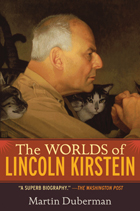 The Worlds of Lincoln Kirstein
Martin Duberman
Northwestern University Press, 2008 Finalist, 2008 Pulitzer Prize
Lincoln Kirstein was a tireless champion of the arts in America. Working behind the scenes to provide artists with money, space, audiences, and, at times, emotional support, he helped found such landmark cultural institutions as the New York City Ballet, the School of American Ballet, New York’s Lincoln Center and Stratford's American Shakespeare Festival. Duberman's biography sheds light on this lamentably neglected cultural figure. Though best known as a benefactor of the arts, Kirstein was also an adept critic, poet and novelist who published some fifteen books in his lifetime. From his undergraduate years at Harvard, where he established the influential literary magazine Hound and Horn, as well as the Harvard Society for Contemporary Art (precursor to the Modern Museum of Art), to his complex and historically significant relationship with George Balanchine, Kirstein's contributions were indespensible to the development of the arts in America. Authoritative and elegant, Duberman's biography utilizes previously unavailable documents, including Kirstein's diaries, to reveal the keen eye, incessant self-doubt, and enormous ambition that drove Kirstein's relentless advocacy. The Worlds of Lincoln Kirstein brings attention to an important, but until-now unappreciated figure whose individual contribution to the arts was one of the greatest of the twentieth century.
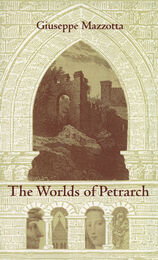 The Worlds of Petrarch
Giuseppe Mazzotta
Duke University Press, 1993 At the center of Petrarch's vision, announcing a new way of seeing the world, was the individual, a sense of the self that would one day become the center of modernity as well. This self, however, seemed to be fragmented in Petrarch's work, divided among the worlds of philosophy, faith, and love of the classics, politics, art, and religion, of Italy, France, Greece, and Rome. In recent decades scholars have explored each of these worlds in depth. In this work, Giuseppe Mazzotta shows for the first time how all these fragmentary explorations relate to each other, how these separate worlds are part of a common vision.
Written in a clear and passionate style, The Worlds of Petrarch takes us into the politics of culture, the poetic imagination, into history and ethics, art and music, rhetoric and theology. With this encyclopedic strategy, Mazzotta is able to demonstrate that the self for Petrarch is not a unified whole but a unity of parts, and, at the same time, that culture emerges not from a consensus but from a conflict of ideas produced by opposition and dark passion. These conflicts, intrinsic to Petrarch's style of thought, lead Mazzotta to a powerful rethinking of the concepts of "fragments" and "unity" and, finally, to a new understanding of the relationship between them.
 Worlds of Production: The Action Frameworks of the Economy
Michael Storper and Robert Salais
Harvard University Press, 1997 This intellectually bold but accessible book seeks to go beyond limitations of the reigning neoclassical and institutional paradigms in explaining the organization of economic activity. It does this by construing “non-economic” factors such as institutions, cultures, and social practices as conventions, which coordinate economic actors by defining specific “frameworks of economic action.” In these conventional frameworks, the standard distinction between economic and non-economic no longer exists. The authors explore in detail four basic frameworks—or “possible worlds of production”—which underpin the mobilization of economic resources, the organization of production systems and factor markets, patterns of economic decision making, and forms of profitability. The case studies examine how these possible worlds act to support innovative production complexes in a variety of sectors in several countries.
Michael Storper and Robert Salais show that economic actors coordinate actions with one another and interpret what others are doing in ways that are constructed by convention. The principal challenge to economic policy today, they argue, is to reconcile internally coherent conventions with the external tests of product and financial markets, which tend increasingly to escape jurisdictional borders. There is no single model of growth and efficiency that brings these two sides together around the world today, even in narrowly defined product markets. If policies are to deal effectively with an increasingly unified global system of flows of commodities, money, and people, they must be aware of the diverse, economically viable action frameworks found in different industries, regions, and nations.
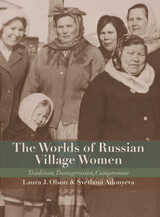 The Worlds of Russian Village Women: Tradition, Transgression, Compromise
Laura J. Olson and Svetlana Adonyeva
University of Wisconsin Press, 2012 Russian rural women have been depicted as victims of oppressive patriarchy, celebrated as symbols of inherent female strength, and extolled as the original source of a great world culture. Throughout the years of collectivization, industrialization, and World War II, women played major roles in the evolution of the Russian village. But how do they see themselves? What do their stories, songs, and customs reveal about their values, desires, and motivations?
Based upon nearly three decades of fieldwork, from 1983 to 2010, The Worlds of Russian Rural Women follows three generations of Russian women and shows how they alternately preserve, discard, and rework the cultural traditions of their forebears to suit changing needs and self-conceptions. In a major contribution to the study of folklore, Laura J. Olson and Svetlana Adonyeva document the ways that women’s tales of traditional practices associated with marriage, childbirth, and death reflect both upholding and transgression of social norms. Their romance songs, satirical ditties, and healing and harmful magic reveal the complexity of power relations in the Russian villages.
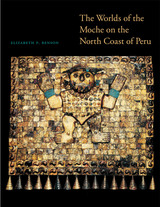 The Worlds of the Moche on the North Coast of Peru
By Elizabeth P. Benson
University of Texas Press, 2012 The Moche, or Mochica, created an extraordinary civilization on the north coast of Peru for most of the first millennium AD. Although they had no written language with which to record their history and beliefs, the Moche built enormous ceremonial edifices and embellished them with mural paintings depicting supernatural figures and rituals. Highly skilled Moche artisans crafted remarkable ceramic vessels, which they painted with figures and scenes or modeled like sculpture, and mastered metallurgy in gold, silver, and copper to make impressive symbolic ornaments. They also wove textiles that were complex in execution and design. A senior scholar renowned for her discoveries about the Moche, Elizabeth P. Benson published the first English-language monograph on the subject in 1972. Now in this volume, she draws on decades of knowledge, as well as the findings of other researchers, to offer a grand overview of all that is currently known about the Moche. Touching on all significant aspects of Moche culture, she covers such topics as their worldview and ritual life, ceremonial architecture and murals, art and craft, supernatural beings, government and warfare, and burial and the afterlife. She demonstrates that the Moche expressed, with symbolic language in metal and clay, what cultures in other parts of the world presented in writing. Indeed, Benson asserts that the accomplishments of the Moche are comparable to those of their Mesoamerica contemporaries, the Maya, which makes them one of the most advanced civilizations of pre-Columbian America.
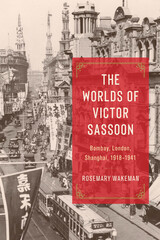 The Worlds of Victor Sassoon: Bombay, London, Shanghai, 1918–1941
Rosemary Wakeman
University of Chicago Press, 2024 An interpretative history of global urbanity in the 1920s and 1930s, from the vantage point of Bombay, London, and Shanghai, that follows the life of business tycoon Victor Sassoon.
In this book, historian Rosemary Wakeman brings to life the frenzied, crowded streets, markets, ports, and banks of Bombay, London, and Shanghai. In the early twentieth century, these cities were at the forefront of the sweeping changes taking the world by storm as it entered an era of globalized commerce and the unprecedented circulation of goods, people, and ideas. Wakeman explores these cities and the world they helped transform through the life of Victor Sassoon, who in 1924 gained control of his powerful family’s trading and banking empire. She tracks his movements between these three cities as he grows his family’s fortune and transforms its holdings into a global juggernaut. Using his life as its point of entry, The Worlds of Victor Sassoon paints a broad portrait not just of wealth, cosmopolitanism, and leisure but also of the discrimination, exploitation, and violence wreaked by a world increasingly driven by the demands of capital.
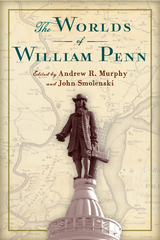 The Worlds of William Penn
Murphy, Andrew R
Rutgers University Press, 2019 William Penn was an instrumental and controversial figure in the early modern transatlantic world, known both as a leader in the movement for religious toleration in England and as a founder of two American colonies, Pennsylvania and New Jersey. As such, his career was marked by controversy and contention in both England and America. This volume looks at William Penn with fresh eyes, bringing together scholars from a range of disciplines to assess his multifaceted life and career. Contributors analyze the worlds that shaped Penn and the worlds that he shaped: Irish, English, American, Quaker, and imperial. The eighteen chapters in The Worlds of William Penn shed critical new light on Penn’s life and legacy, examining his early and often-overlooked time in Ireland; the literary, political, and theological legacies of his public career during the Restoration and after the 1688 Revolution; his role as proprietor of Pennsylvania; his religious leadership in the Quaker movement, and as a loyal lieutenant to George Fox, and his important role in the broader British imperial project. Coinciding with the 300th anniversary of Penn’s death the time is right for this examination of Penn’s importance both in his own time and to the ongoing campaign for political and religious liberty
Worlds of Wonder, Days of Judgment: Popular Religious Belief in Early New England
David D. Hall
Harvard University Press, 1990 This book tells an extraordinary story of the people of early New England and their spiritual lives. It is about ordinary people—farmers, housewives, artisans, merchants, sailors, aspiring scholars—struggling to make sense of their time and place on earth. David Hall describes a world of religious consensus and resistance: a variety of conflicting beliefs and believers ranging from the committed core to outright dissenters. He reveals for the first time the many-layered complexity of colonial religious life, and the importance within it of traditions derived from those of the Old World. We see a religion of the laity that was to merge with the tide of democratic nationalism in the nineteenth century, and that remains with us today as the essence of Protestant America.
The World's Room
Joshua Weiner
University of Chicago Press, 2001 The World's Room is a dynamic first collection in which the literary and the personal, the elevated and the slangy, the sacred and the profane are beautifully intertwined. From nursery rhymes to riddles to prose poems, Joshua Weiner's work displays boundless imaginative and linguistic possibilities.
 The World's Water 1998-1999: The Biennial Report On Freshwater Resources
Peter H. Gleick
Island Press, 1998 The quality and availability of fresh water is of critical importance to human and ecosystem health. The World's Water 1998-1999 is a comprehensive reference on worldwide freshwater resources and the political, economic, scientific, and technological issues associated with them. It provides both detailed analysis of the most significant trends and events and the most up-to-date data available on water resources and their use. Chapters examine:
access to basic water requirements for drinking and sanitation
hydropower and dam construction
water law
water and conflict
water and global climate change
international water institutions and activities.
The book features more than fifty charts, tables, and maps that present the most current data on a range of factors including: the availability and use of water; numbers of threatened and endangered aquatic species, dam and desalination capacity worldwide; trends in several devastating water-borne diseases; changes by region in global precipitation patterns since 1900; and much more.
To be published on a biennial basis, The World's Water will be an essential reference for water resources specialists with both government agencies and nongovernmental organizations, resource economists, planners, public policy and public administration experts, environmental lawyers, students and anyone concerned with water issues.
 The World's Water 2000-2001: The Biennial Report On Freshwater Resources
Peter H. Gleick
Island Press, 2000 The quality and availability of fresh water are of critical importance to human and ecosystem health. Given its central role in the functioning of all living systems, water is arguably the most important of all natural resources. Produced biennially, The World's Water provides a comprehensive examination of issues surrounding freshwater resources and their use. It offers analysis of the most significant trends worldwide along with the most current data available on a variety of water-related topics. This 2000-2001 edition features overview chapters on: - water as a human right
- water and food
- desalination
- stocks and flows of fresh water
- international watersheds and water-related conflicts
- water reclamation/recycling
- the removal of dams
It also includes brief reports on issues such as arsenic in ground water in Bangladesh, the collection of fog as a source of water in remote regions, the role of nongovernmental organizations in meeting basic water needs, and an update on water and the internet. Following the overview chapters are more than thirty charts and tables that offer data on topics including: water use by country, agricultural water use, salinization, endangered aquatic species, major rivers in China, dam capacity, desalination capacity, and more. The World's Water is the most comprehensive and up-to-date source of information and analysis on freshwater resources and the political, economic, scientific, and technological issues associated with them. It is an essential reference for water resource professionals in government agencies and nongovernmental organizations, researchers, students, and anyone concerned with water and its use.
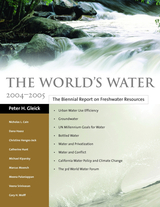 The World's Water 2004-2005: The Biennial Report on Freshwater Resources
Peter H. Gleick
Island Press, 2005 The quality and availability of fresh water are of critical importance to human and ecosystem health. Given its central role in the functioning of all living systems, water is arguably the most important of all natural resources. Produced biennially, The World's Water provides a timely examination of the key issues surrounding freshwater resources and their use. Each new volume identifies and explains the most significant current trends worldwide, and offers the best data available on a variety of water-related topics. This 2004-2005 edition of The World's Water features overview chapters on: conservation and efficiency as key tools for meeting freshwater needs; bottled water quality, costs, and trends; United Nations millennium development goals; groundwater issues; case studies of water privatization; the economic value of water; California water policy and climate change. The World's Water is the most comprehensive and up-to-date source of information and analysis on freshwater resources and the political, economic, scientific, and technological issues associated with them. It is an essential reference for water resource professionals in government agencies and nongovernmental organizations, researchers, students, and anyone concerned with water and its use.
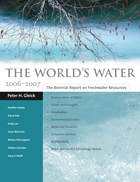 The World's Water 2006-2007: The Biennial Report on Freshwater Resources
Peter H. Gleick, Heather Cooley, David Katz, Emily Lee, Jason Morrison, Meena Palaniappan, Andrea Samulon, and Gary H. Wolff
Island Press, 2006 Produced biennially, The World's Water provides a timely examination of the key issues surrounding freshwater resources and their use. Each new volume identifies and explains the most significant current trends worldwide, and offers the best data available on a variety of water-related topics. The 2006-2007 volume features overview chapters on: - Water and terrorism
- Business risks of water
- Water and ecosystems
- Floods and droughts
- Desalination
- Environmental justice and water
The book contains an updated chronology of global conflicts associated with water as well as an assessment of recent water conferences, including the 4th World Water Forum. It also offers a brief review of issues surrounding the use of bottled water and the possible existence of water on Mars. From one of the world's leading authorities on water issues, The World's Water is the most comprehensive and up-to-date source of information and analysis on freshwater resources and the political, economic, scientific, and technological issues associated with them.
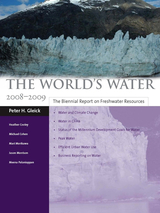 The World's Water 2008-2009: The Biennial Report on Freshwater Resources
Peter H. Gleick with Heather Cooley, Michael J. Cohen, Mari Morikawa, Jason Morrison, and Meena Palaniappan
Island Press, 2009 Produced biennially, The World’s Water provides a timely examination of the key issues surrounding freshwater resources and their use. Each new volume identifies and explains the most significant trends worldwide, and offers the best data available on a variety of topics related to water. The 2008-2009 volume features overview chapters on:
• water and climate change
• water in China
• status of the Millennium Development Goals for water
• peak water
• efficient urban water use
• business reporting on water
This new volume contains an updated chronology of global conflicts associated with water, as well as brief reviews of issues regarding desalination, the Salton Sea, and the Three Gorges Dam.
From the world’s leading authority on water issues, The World’s Water is the most comprehensive and up-to-date source of information and analysis on freshwater resources and the political, economic, scientific, and technological issues associated with them. It is an essential reference for water resource professionals in government agencies and nongovernmental organizations, researchers, students, and anyone concerned with water and its use.
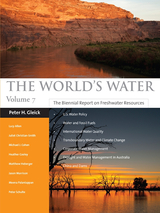 The World's Water Volume 7: The Biennial Report on Freshwater Resources
Peter Gleick, Lucy Allen, Juliet Christian-Smith, Michael J. Cohen, Heather Cooley, Matthew Heberger, Jason Morrison, Meena Palaniappan, Peter Schulte
Island Press, 2011 Produced biennially, The World's Water is the most comprehensive and up-to-to date source of information and analysis on freshwater resources. Each new volume examines critical global trends and offers the best data available on a variety of topics related to water.
Volume 7 features chapters on U.S. water policy, transboundary waters, and the effects of fossil fuel production on water resources, among other timely issues. Water briefs provide concise updates on topics including bottled water, The Great Lakes Water Agreement, and water and security.
The World's Water is coauthored by MacArthur "genius" Peter H. Gleick and his colleagues at the world-renowned Pacific Institute. Since the first volume was published in 1998, the series has become an indispensable resource for professionals in government agencies and nongovernmental organizations, researchers, students, and anyone concerned with water and its use.
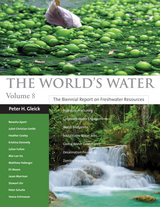 The World's Water Volume 8: The Biennial Report on Freshwater Resources
Peter H. Gleick
Island Press, 2014 Produced biennially, The World's Water is the most comprehensive and up-to-to date source of information and analysis on freshwater resources. Each new volume examines critical global trends and offers the best data available on a variety of topics related to water. Volume 8 features chapters on hydraulic fracturing (fracking), water footprints, sustainable water jobs, and desalination financing, among other timely issues. Water briefs provide concise updates on topics including the Dead-Sea and the role of water in the Syrian conflict. The World's Water is coauthored by MacArthur "genius" Peter H. Gleick and his colleagues at the world-renowned Pacific Institute. Since the first volume was published in 1998, the series has become an indispensable resource for professionals in government agencies and nongovernmental organizations, researchers, students, and anyone concerned with water and its use.
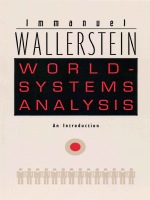 World-Systems Analysis: An Introduction
Immanuel Wallerstein
Duke University Press, 2004 In World-Systems Analysis, Immanuel Wallerstein provides a concise and accessible introduction to the comprehensive approach that he pioneered thirty years ago to understanding the history and development of the modern world. Since Wallerstein first developed world-systems analysis, it has become a widely utilized methodology within the historical social sciences and a common point of reference in discussions of globalization. Now, for the first time in one volume, Wallerstein offers a succinct summary of world-systems analysis and a clear outline of the modern world-system, describing the structures of knowledge upon which it is based, its mechanisms, and its future. Wallerstein explains the defining characteristics of world-systems analysis: its emphasis on world-systems rather than nation-states, on the need to consider historical processes as they unfold over long periods of time, and on combining within a single analytical framework bodies of knowledge usually viewed as distinct from one another—such as history, political science, economics, and sociology. He describes the world-system as a social reality comprised of interconnected nations, firms, households, classes, and identity groups of all kinds. He identifies and highlights the significance of the key moments in the evolution of the modern world-system: the development of a capitalist world-economy in the sixteenth-century, the beginning of two centuries of liberal centrism in the French Revolution of 1789, and the undermining of that centrism in the global revolts of 1968. Intended for general readers, students, and experienced practitioners alike, this book presents a complete overview of world-systems analysis by its original architect.
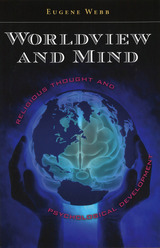 Worldview and Mind: Religious Thought and Psychological Development
Eugene Webb
University of Missouri Press, 2009 When worldviews clash, the world reverberates. Now a distinguished scholar who has written widely on thinkers ranging from Samuel Beckett to Eric Voegelin inquires into the sources of religious conflict—and into ways of being religious that might diminish that conflict. Worldview and Mind covers a wide range of thinkers and movements to explore the relation between religion and modernity in all its complexity. Eugene Webb invokes a number of topical issues, including religious terrorism, as he unfolds the phenomenon of religion in all its complications, from the difference between faith and belief to the diversities among—and within—religions. Building on Karl Jaspers’s psychology of worldviews and Jean Piaget’s developmental psychology, Webb looks at a broad spectrum of religions—especially the history of Christianity, Judaism, and Islam in their various forms—to explore the subjective factors that sometimes render religions conflictual and aggressive and to consider conditions that might foster more helpful and reconciling forms of religiousness. He explores what psychological analysis reveals about the relationship between stages of psychological development and ways of being religious—ways that range from closed-minded literalism to open-minded tolerance. He also identifies unconscious and developmental obstacles to religious maturity and depicts the mature person as one who participates in the mystery of self-transcending love. Webb argues that authentic religion need not succumb to dogmatism, or support fanaticism, or be consigned to the stages of immature culture. Responding to critics of religion, from Sigmund Freud to Daniel Dennett, he demonstrates that religious traditions have more spiritual depth than these critics have granted and a greater potential for development than they believe, along lines they might even favor. His insightful book proposes that, if religious people can step back from their traditions and consider them as partial ways of relating to transcendent ultimacy, the world’s religions might manage to develop a way of living together with mutual appreciation and respect.
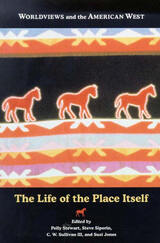 Worldviews And The American West: The Life of the Place Itself
Polly Stewart, Steve Siporin, C. W. Sullivan III, and Suzi Jones
Utah State University Press, 2003 A diverse group of writers and scholars follow the lead of noted folklorist Barre Toelken and consider, from the inside, the ways in which varied cultures in the American West understand and express their relations to the world around them. As Barre Toelken puts it in The Dynamics of Folklore, "'Worldview' refers to the manner in which a culture sees and expresses its relation to the world around it." In Worldviews and the American West, seventeen notable authors and scholars, employing diverse approaches and styles, apply Toelken's ideas about worldview to the American West. While the contributors represent a range of voices, methods, and visions, they are integrated through their focus on the theme of worldview in one region. Worldviews and the American West includes essays by Margaret K. Brady, Hal Cannon, Nora Marks Dauenhauer and Richard Dauenhauer, James S. Griffith, Barry Lopez, Robert McCarl, Elliott Oring, Twilo Scofield, Steve Siporin, Kim Stafford, C. W. Sullivan III, Jeannie B. Thomas, George Venn, George B. Wasson, and William A. Wilson. Each of the authors in this collection attempts to get inside one or more of the worldviews of the many cultures that have come to share and interpret the American West. The result is a lively mix of styles and voices as the authors' own worldviews interact with the multiple perspectives of the diverse peoples (and, in Barry Lopez's "The Language of Animals," other species) of the West. This diversity matches the geography of the region they all call home and gives varied life and meaning to its physical and cultural landscape.
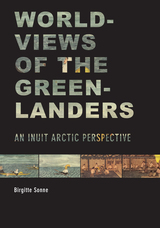 Worldviews of the Greenlanders: An Inuit Arctic Perspective
Birgitte Sonne
University of Alaska Press, 2017 Ninety years ago, Knud Rasmussen’s popular account of his scientific expeditions through Greenland and North America introduced readers to the culture and history of arctic Natives. In the intervening century, a robust field of ethnographic research has grown around the Inuit and Yupiit of North America—but, until now, English-language readers have had little access to the broad corpus of work on Greenlandic natives.
Worldviews of the Greenlanders draws upon extensive Danish and Greenlandic research on Inuit arctic peoples—as well as Birgitte Sonne’s own decades of scholarship and fieldwork—to present in rich detail the key symbols and traditional beliefs of Greenlandic Natives, as well as the changes brought about by contact with colonial traders and Christian missionaries. It includes critical updates to our knowledge of the Greenlanders’ pre-colonial world and their ideas on space, time, and other worldly beings. This expansive work will be a touchstone of Arctic Native studies for academics who wish to expand their knowledge past the boundaries of North America.
Worldwide Laws Of Life: 200 Eternal Spiritual Principles
John Marks Templeton
Templeton Press, 1998 Worldwide Laws of Life is full of wisdom drawn from the major sacred Scriptures of the world and various schools of philosophical thought, as well as from scientists, artists, historians, and others. Its aim is to assist people of all ages to learn more about the universal truths of life that transcend modern times or particular cultures. This treasury of practical morality, personal inspiration, and daily guidance is perfect for people of all persuasions. The organization facilitates group or personal study and spiritual development.
Worldwide Worship: Prayers Song & Poetry
John Marks Templeton
Templeton Press, 2000 Drawn from classical and religious texts, as well as the work of poets and other artists, Worldwide Worship is a unique celebration of worship found in many religious traditions. These selections have been chosen singularly and as a group by John Marks Templeton, not only for their individual aesthetic beauty, but also to assist us in learning various lessons of life. From this rich mixture of prayer, song, and poetry comes a confirmation of the life-affirming universality of the human spirit. Together these works celebrate the universal principles found in the human mind, and attempt to bridge the gaps between religions, cultures, and peoples of the world.
 World-Wide-Walks: Peter d'Agostino: Crossing Natural-Cultural-Virtual Frontiers
Edited by Peter d'Agostino and David Tafler
Intellect Books, 2018 This book presents Peter d'Agostino's World-Wide-Walks project, providing a unique perspective on walking practices across time and place considered through the framework of evolving technologies and changes in climate. Performed on six continents during the past five decades, d’Agostino’s work lays a groundwork for considering walks as portals for crossing natural, cultural, and virtual frontiers. Broad in scope, it addresses topics ranging from historical concerns including traditional Australian Aboriginal rites of passage and the exploits of explorers such as John Ledyard, to artists’ walks and related themes covered in the mass media in recent years. D’Agostino’s work shows that the act of walking places the individual within a world of empirical awareness, statistical knowledge, expectation, and surprise through phenomena like anticipating unknown encounters around the bend. In mediating the frontiers of human knowledge, walking and other forms of exploration remain a critical means of engaging global challenges, especially notable now as environmental boundaries are undergoing radical and potential cataclysmic change.
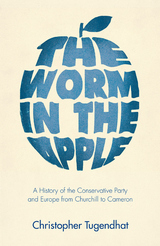 The Worm in the Apple: A History of the Conservative Party and Europe from Churchill to Cameron
Christopher Tugendhat
Haus Publishing, 2022 The first extensive history of the relationship between the UK Conservative Party and the European Union.
The Conservative Party has been in power for 47 of the 65 years since the end of World War II. During that time the division within the party over Europe has been the enduring drama of British politics—from Churchill’s decision not to join the original European Coal and Steel Community in 1951 to Cameron’s decision to hold the Brexit referendum in 2016. Other leaders came and went, but the issue was always there—sometimes center-stage, at others behind the scenes—destabilizing foreign policy, corroding the body politic, and destroying several of the party’s leaders. These questions, and how they panned out, created a deep, grumbling discontent—the worm in the apple—that, over time, turned the Conservative Party and, by extension, a significant section of the electorate, against British membership of the EU. By telling the story of the arguments and divisions within the Conservative Party, The Worm in the Apple helps to explain why Britain voted to leave the European Union in 2016.
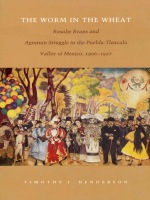 The Worm in the Wheat: Rosalie Evans and Agrarian Struggle in the Puebla-Tlaxcala Valley of Mexico, 1906-1927
Timothy J. Henderson
Duke University Press, 1998 The Worm in the Wheat is a compelling tale of political intrigue, violence, shifting allegiances, extreme poverty, and the recalcitrance of one woman. Above all, it is a multileveled interpretation of the Mexican revolution and the ultimate failure of agrarian reform. Timothy J. Henderson recounts the story of Rosalie Evans, a woman who lost her life defending her Mexican hacienda in defiance of confiscation decrees. This dramatic narrative is populated with many diverse actors: Mexican, British, and American officials, soldiers, rebel leaders, bureaucrats, peasants, vigilantes, and the unforgettable figure of Evans herself. In a world where power and wealth are distributed unevenly and where revolutionary ideas aiming to right the balance continue to proliferate, it is essential, Henderson claims, to understand the revolutionary process not as a philosophical abstraction but as intimate human drama. This book, by providing a detailed study of a single case, sheds invaluable light on this process and on the making of modern Mexico. Incorporating extensive primary research, Henderson describes the complexity of international, national, state, and local politics and the corresponding diverse responses to this historic attempt at agrarian reform. The Worm in the Wheat will be informative reading for those interested in the modern history of Mexico, students of social movements and revolution, Latin Americanists, and scholars of agrarian history.
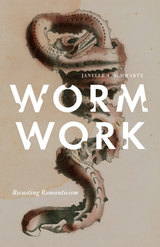 Worm Work: Recasting Romanticism
Janelle A. Schwartz
University of Minnesota Press, 2012 Worms. Natural history is riddled with them. Literature is crawling with them. From antiquity to today, the ubiquitous and multiform worm provokes an immediate discomfort and unconscious distancing: it remains us against them in anthropocentric anxiety. So there is always something muddled, or dirty, or even offensive when talking about worms. Rehabilitating the lowly worm into a powerful aesthetic trope, Janelle A. Schwartz proposes a new framework for understanding such a strangely animate nature. Worms, she declares, are the very matter with which the Romantics rethought the relationship between a material world in constant flux and the human mind working to understand it. Worm Work studies the lesser-known natural historical records of Abraham Trembley and his contemporaries and the familiar works of Erasmus Darwin, Charles Darwin, William Blake, Mary Shelley, and John Keats, to expose the worm as an organism that is not only reviled as a taxonomic terror but revered as a sign of great order in nature as well as narrative. This book traces a pattern of cultural production, a vermiculture that is as transformative of matter as it is of mind. It distinguishes decay or division as positive processes in Romantic era writings, compounded by generation or renewal and used to represent the biocentric, complex structuring of organicism. Offering the worm as an archetypal figure through which to recast the evolution of a literary order alongside questions of taxonomy from 1740 to 1820 and on, Schwartz unearths Romanticism as a rich humus of natural historical investigation and literary creation.
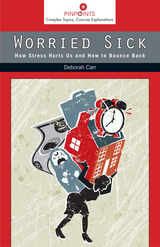 Worried Sick: How Stress Hurts Us and How to Bounce Back
Carr, Deborah
Rutgers University Press, 2014 Comments like “I’m worried sick” convey the conventional wisdom that being “stressed out” will harm our health. Thousands of academic studies reveal that stressful life events (like a job loss), ongoing strains (like burdensome caregiving duties), and even daily hassles (like traffic jams on the commute to work) affect every aspect of our physical and emotional well-being. Cutting through a sea of scientific research and theories, Worried Sick answers many questions about how stress gets under our skin, makes us sick, and how and why people cope with stress differently. Included are several standard stress and coping checklists, allowing readers to gauge their own stress levels. We have all experienced stressful times—maybe a major work deadline or relocating cross-country for a new job—when we came out unscathed, feeling not only emotionally and physically healthy, but better than we did prior to the crisis. Why do some people withstand adversity without a scratch, while others fall ill or become emotionally despondent when faced with even a seemingly minor hassle? Without oversimplifying the discussion, Deborah Carr succinctly provides readers with key themes and contemporary research on the concept of stress. Understanding individuals’ own sources of strength and vulnerability is an important step toward developing personal strategies to minimize stress and its unhealthy consequences. Yet Carr also challenges the notion that merely reducing stress in our lives will help us to stay healthy. Many of the stressors that we face in everyday life are not our problems alone; rather, they are symptoms of much larger, sweeping problems in contemporary U.S. society. To readers interested in the broad range of chronic, acute, and daily life stressors facing Americans in the twenty-first century, as well as those with interest in the many ways that our physical and emotional health is shaped by our experiences, this brief book will be an immediate and quick look at these significant issues. View a three minute video of Deborah Carr speaking about Worried Sick.
The Worrier: poems
Nancy Takacs
University of Massachusetts Press, 2017 EXCERPT
What do you know?
How I hide my flaws.
What do you know?
How butterflies
sweeten themselves
opening and closing their wings together
in a little hill
on the beach.
—"The Worrier bed"
The Worrier poems, like a string of worry beads, are dialogues between two interior voices exploring topics as varied as fur coats, marriage, scars, vanishing bees, a silent film star, toads, and volunteers. Strongly imagistic, and often placed in wild landscapes of Utah and Wisconsin, these poems strangely soothe with their surprising offbeat answers to Takacs's worries about intimacy, loss, and turmoil in midlife and beyond; about disappearing wilderness, and compassion, in the world at large. Despite worrying, the poems seem fearless in what they tackle, and in their language and form, creating lightness, promise.
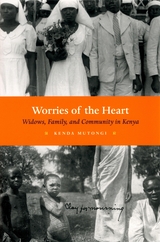 Worries of the Heart: Widows, Family, and Community in Kenya
Kenda Mutongi
University of Chicago Press, 2007 Growing up in the Maragoli community in Kenya, Kenda Mutongi encountered a perplexing contradiction. While the young teachers at her village school railed against colonialism, many of her elders, including her widowed mother, praised their former British masters. In this moving book, Mutongi explores how both the challenges and contradictions of colonial rule and the frustrations and failures of independence shaped the lives of Maragoli widows and their complex relations with each other, their families, and the larger community.
Throughout the twentieth century and into the twenty-first, rates of widowhood have been remarkably high in Kenya. Yet despite their numbers, widows and their families exist at the margins of society, and their lives act as a barometer for the harsh realities of rural Kenya. Mutongi here argues that widows survive by publicly airing their social, economic, and political problems, their “worries of the heart.” Initially aimed at the men in their community, and then their colonial rulers, this strategy changed after independence as widows increasingly invoked the language of citizenship to demand their rights from the new leaders of Kenya—leaders whose failure to meet the needs of ordinary citizens has led to deep disenchantment and altered Kenyans’ view of their colonial past. An innovative blend of ethnography and historical research, Worries of the Heart is a poignant narrative rich with insights into postcolonial Africa.
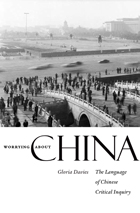 Worrying about China: The Language of Chinese Critical Inquiry
Gloria Davies
Harvard University Press, 2009 What can we do about China? This question, couched in pessimism, is often raised in the West but it is nothing new to the Chinese, who have long worried about themselves. In the last two decades since the “opening” of China, Chinese intellectuals have been carrying on in their own ancient tradition of “patriotic worrying.”As an intellectual mandate, “worrying about China” carries with it the moral obligation of identifying and solving perceived “Chinese problems”—social, political, cultural, historical, or economic—in order to achieve national perfection. In Worrying about China, Gloria Davies pursues this inquiry through a wide range of contemporary topics, including the changing fortunes of radicalism, the peculiarities of Chinese postmodernism, shifts within official discourse, attempts to revive Confucianism for present-day China, and the historically problematic engagement of Chinese intellectuals with Western ideas.Davies explores the way perfectionism permeates and ultimately propels Chinese intellectual talk to the point that the drive for perfection has created a moralism that condemns those who do not contribute to improving China. Inside the heart of the New China persists ancient moralistic attitudes that remain decidedly nonmodern. And inside the postmodernism of thousands of Chinese scholars and intellectuals dwells a decidedly anti-postmodern quest for absolute certainty.
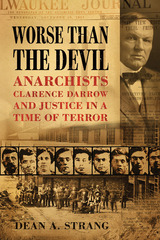 Worse than the Devil: Anarchists, Clarence Darrow, and Justice in a Time of Terror
Dean A. Strang
University of Wisconsin Press, 2013 In 1917 a bomb exploded in a Milwaukee police station, killing nine officers and a civilian. Those responsible never were apprehended, but police, press, and public all assumed that the perpetrators were Italian. Days later, eleven alleged Italian anarchists went to trial on unrelated charges involving a fracas that had occurred two months before. Against the backdrop of World War I, and amidst a prevailing hatred and fear of radical immigrants, the Italians had an unfair trial. The specter of the larger, uncharged crime of the bombing haunted the proceedings and assured convictions of all eleven. Although Clarence Darrow led an appeal that gained freedom for most of the convicted, the celebrated lawyer's methods themselves were deeply suspect. The entire case left a dark, if hidden, stain on American justice.
Largely overlooked for almost a century, the compelling story of this case emerges vividly in this meticulously researched book by Dean A. Strang. In its focus on a moment when patriotism, nativism, and terror swept the nation, Worse than the Devil exposes broad concerns that persist even today as the United States continues to struggle with administering criminal justice to newcomers and outsiders.
Worse than the Devil: Anarchists, Clarence Darrow, and Justice in a Time of Terror
Dean A. Strang
University of Wisconsin Press, 2016 In 1917 a bomb exploded in a Milwaukee police station, killing nine officers and a civilian. Days later, a trial began for eleven Italian immigrants who had already been in jail for months for an unrelated riot. The specter of the bombing, for which no one had been arrested, haunted the proceedings. Against the backdrop of World War I and amid a prevailing hatred and fear of radical immigrants and anarchists, the Italians had an unfair trial. Famed attorney Clarence Darrow led an appeal that gained freedom for most of the convicted, but his own methods were deeply suspect. The entire case left a dark, though largely forgotten, stain on American justice.
The Worship and Love of God
Emanuel Swedenborg
Swedenborg Foundation Publishers, 2020 This allegorical retelling of the biblical creation story blends science, poetic understanding, and the spiritual revelations of Swedish visionary Emanuel Swedenborg (1688–1772). Starting with the creation of the earth from the substance of the universe, Swedenborg takes the reader through the formation of plants, animals, and finally human beings. He puts particular emphasis on the spiritual nature of Adam and Adam’s marriage to Eve. Although not considered one of Swedenborg’s theological works, this book was written just prior to his visionary period and contains the seeds of many of his later ideas, particularly the biblical commentary in Secrets of Heaven. This edition is a reprint of a 1914 English translation by Alfred H. Stroh and Frank Sewall.
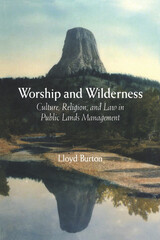 Worship and Wilderness: Culture, Religion, and Law in Public Lands Management
Lloyd Burton
University of Wisconsin Press, 2002 Questions about land use, conservation, and preservation—already so perplexing and contentious—take on a new complexity and greater urgency when the land in question is understood as sacred. This is a view increasingly held, as adherents of mainstream religions come to recognize what indigenous peoples knew centuries ago—that the sacred inheres in nature itself. What such a trend means and how it involves the forces of culture, religion, and constitutional law (especially First Amendment clauses concerning the free exercise of religion) are considered with a remarkable breadth and depth of understanding in this important new work.
Drawing on case studies of national parks and monuments, national forests, and other public lands and resources, Lloyd Burton gives a clear and comprehensive account of how the intertwining influences of culture, religion, and law have affected the management of public lands and resources in the recent past and how they may do so in the future. In a unique and unprecedented way, his book weaves together teachings on nature and the sacred among indigenous and immigrant culture groups in the United States; the relevant constitutional history of religion and government action; and analysis of contemporary conflicts over culture, religion, and public lands management. As such, Worship and Wilderness is essential reading not only for public land managers and environmental policy makers but also for anyone interested in the growing significance of religious interests in the use of resources that constitute our national commons and our common natural heritage.
Worship in Medieval England
Matthew Cheung Salisbury
Arc Humanities Press, 2018 <div>The study of medieval liturgy can tell us a great deal not only about the worship of the church, but also about the people who practised it. However, existing scholarship can be problematic and difficult to use.</div><div>This short book aims to unsettle the notion that liturgiology is a mysterious, abstruse, and monolithic discipline. It challenges some scholarly orthodoxies, hints at the complexity of the liturgy and shows that it needs to be examined in new and different ways.</div>
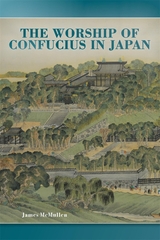 The Worship of Confucius in Japan
James McMullen
Harvard University Press, 2019 How has Confucius, quintessentially and symbolically Chinese, been received throughout Japanese history? The Worship of Confucius in Japan provides the first overview of the richly documented and colorful Japanese version of the East Asian ritual to venerate Confucius, known in Japan as the sekiten. The original Chinese political liturgy embodied assumptions about sociopolitical order different from those of Japan. Over more than thirteen centuries, Japanese in power expressed a persistently ambivalent response to the ritual’s challenges and often tended to interpret the ceremony in cultural rather than political terms.
Like many rituals, the sekiten self-referentially reinterpreted earlier versions of itself. James McMullen adopts a diachronic and comparative perspective. Focusing on the relationship of the ritual to political authority in the premodern period, McMullen sheds fresh light on Sino-Japanese cultural relations and on the distinctive political, cultural, and social history of Confucianism in Japan. Successive sections of The Worship of Confucius in Japan trace the vicissitudes of the ceremony through two major cycles of adoption, modification, and decline, first in ancient and medieval Japan, then in the late feudal period culminating in its rejection at the Meiji Restoration. An epilogue sketches the history of the ceremony in the altered conditions of post-Restoration Japan and up to the present.
Worship, Women and War: Essays in Honor of Susan Niditch
John J. Collins
SBL Press, 2015 Celebrate the career of an inspirational scholar and teacher concerned with revealing voices from the margins
This volume of essays honors Susan Niditch, author of War in the Hebrew Bible: A Study in the Ethics of Violence (1993), “My Brother Esau Is a Hairy Man”: Hair and Identity in Ancient Israel (2008), and most recently, The Responsive Self: Personal Religion in Biblical Literature of the Neo-Babylonian and Persian Periods (forthcoming), among other influential publications. Essays touch on topics such as folklore, mythology, and oral history, Israelite religion, ancient Judaism, warfare, violence, and gender.
Features:
- Essays from nineteen scholars, all experts in their fields
- Exploration of texts from Mesopotamia, the Hebrew Bible, and the New Testament
- Bibliography of Niditch's scholarly contributions
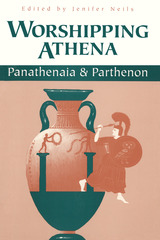 Worshipping Athena: Panathenaia And Parthenon
Edited by Jenifer Neils
University of Wisconsin Press, 1996 The foremost religious festival of ancient Athens—the city dedicated to Athena, goddess of war, fertility, arts, and wisdom—was the Panathenaia. Challenging old assumptions and refuting new theories, Worshipping Athena addresses the many problems of interpretation and understanding that have swirled for years around the Panathenaia. Among the issues discussed is the recent sensational controversy over the Parthenon frieze, perhaps the best known but least understood work of Greek art. For centuries the frieze has been thought to represent the Panathenaia procession, but recently the argument has been advanced that it depicts the sacrifice of the daughters of the Athenian king Erechtheus. Worshipping Athena offers compelling evidence that the frieze does indeed depict the festal procession and also demonstrates that scenes of contemporary ritual were not unique to the Parthenon.
Editor Jenifer Neils and the contributors—eminent classicists, archaeologists, and art historians—explore the role of the Panathenaia in Athenian life and compare it with similar festivals held throughout the ancient Greek world. They discuss such topics as the Panathenaia’s mythical origins, the phenomenon of the festival’s valuable prizes (oil-filled amphoras, rather than the customary laurel wreath), and the architecture, sculpture, and painting related to the festival.
Worshipping Athena will provide valuable insights to scholars and students concerned with ancient religion, mythology, art, literature, and gender issues, as well as anyone with a keen interest in the ritual topography of the Athenian Acropolis and the iconography of the Parthenon frieze.
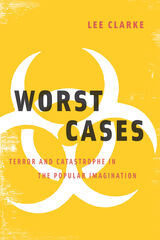 Worst Cases: Terror and Catastrophe in the Popular Imagination
Lee Clarke
University of Chicago Press, 2005 Al Qaeda detonates a nuclear weapon in Times Square during rush hour, wiping out half of Manhattan and killing 500,000 people. A virulent strain of bird flu jumps to humans in Thailand, sweeps across Asia, and claims more than fifty million lives. A single freight car of chlorine derails on the outskirts of Los Angeles, spilling its contents and killing seven million. An asteroid ten kilometers wide slams into the Atlantic Ocean, unleashing a tsunami that renders life on the planet as we know it extinct.
We consider the few who live in fear of such scenarios to be alarmist or even paranoid. But Worst Cases shows that such individuals—like Cassandra foreseeing the fall of Troy—are more reasonable and prescient than you might think. In this book, Lee Clarke surveys the full range of possible catastrophes that animate and dominate the popular imagination, from toxic spills and terrorism to plane crashes and pandemics. Along the way, he explores how the ubiquity of worst cases in everyday life has rendered them ordinary and mundane. Fear and dread, Clarke argues, have actually become too rare: only when the public has more substantial information and more credible warnings will it take worst cases as seriously as it should.
A timely and necessary look into how we think about the unthinkable, Worst Cases will be must reading for anyone attuned to our current climate of threat and fear.
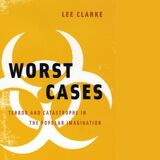 Worst Cases: Terror and Catastrophe in the Popular Imagination
Lee Clarke
University of Chicago Press, 2005 This is an auto-narrated audiobook edition of this book.
Al Qaeda detonates a nuclear weapon in Times Square during rush hour, wiping out half of Manhattan and killing 500,000 people. A virulent strain of bird flu jumps to humans in Thailand, sweeps across Asia, and claims more than fifty million lives. A single freight car of chlorine derails on the outskirts of Los Angeles, spilling its contents and killing seven million. An asteroid ten kilometers wide slams into the Atlantic Ocean, unleashing a tsunami that renders life on the planet as we know it extinct.
We consider the few who live in fear of such scenarios to be alarmist or even paranoid. But Worst Cases shows that such individuals—like Cassandra foreseeing the fall of Troy—are more reasonable and prescient than you might think. In this book, Lee Clarke surveys the full range of possible catastrophes that animate and dominate the popular imagination, from toxic spills and terrorism to plane crashes and pandemics. Along the way, he explores how the ubiquity of worst cases in everyday life has rendered them ordinary and mundane. Fear and dread, Clarke argues, have actually become too rare: only when the public has more substantial information and more credible warnings will it take worst cases as seriously as it should.
A timely and necessary look into how we think about the unthinkable, Worst Cases will be must reading for anyone attuned to our current climate of threat and fear.
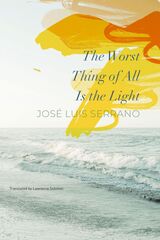 The Worst Thing of All Is the Light
José Luis Serrano
Seagull Books, 2023 A metafictional novel about two intertwined stories of love that seek to perpetuate themselves in history.
The Worst Thing of All Is the Light tells two stories. First, that of the friendship of two heterosexual men, Koldo and Edorta, through the decades of the late twentieth century in Spain’s Basque Country. In the book Edorta writes in order to try and save from oblivion his relationship with Koldo—a bond for which the word “friendship” falls short yet for which he is too afraid to use the word “love.” It is the story of two men who are in love and don’t know it, or don’t want to know it. The second story is that of its author, José Luis Serrano, in the present day as he enjoys his summer holiday in the same Basque Country and talks with his husband at length about many different things, but mostly about how to narrate the relationship of Koldo and Edorta, two men who did not allow themselves to construct the domestic life that their counterparts enjoy today. Together these stories show a love that the lovers hope will outlive them, a love that is the same even if we give it different labels.
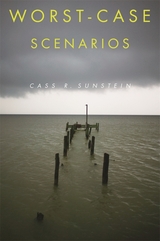 Worst-Case Scenarios
Cass R. Sunstein
Harvard University Press, 2009 Nuclear bombs in suitcases, anthrax bacilli in ventilators, tsunamis and meteors, avian flu, scorchingly hot temperatures: nightmares that were once the plot of Hollywood movies are now frighteningly real possibilities. How can we steer a path between willful inaction and reckless overreaction?
Cass Sunstein explores these and other worst-case scenarios and how we might best prevent them in this vivid, illuminating, and highly original analysis. Singling out the problems of terrorism and climate change, Sunstein explores our susceptibility to two opposite and unhelpful reactions: panic and utter neglect. He shows how private individuals and public officials might best respond to low-probability risks of disaster—emphasizing the need to know what we will lose from precautions as well as from inaction. Finally, he offers an understanding of the uses and limits of cost–benefit analysis, especially when current generations are imposing risks on future generations.
Throughout, Sunstein uses climate change as a defining case, because it dramatically illustrates the underlying principles. But he also discusses terrorism, depletion of the ozone layer, genetic modification of food, hurricanes, and worst-case scenarios faced in our ordinary lives. Sunstein concludes that if we can avoid the twin dangers of overreaction and apathy, we will be able to ameliorate if not avoid future catastrophes, retaining our sanity as well as scarce resources that can be devoted to more constructive ends.
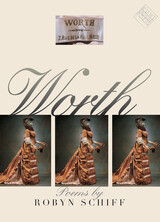 Worth
Robyn Schiff
University of Iowa Press, 2002 These strong, multilayered poems test the transformative powers of dressmakers, jewelers, actors, and Darwin’s darkest finches as they adapt to a changing world where the same train hurtles past them toward marketplace and death camp both. Throughout, many of the poems use inherited forms to tell their stories, but the inheritance here comes down damaged and threadbare—yet full of power.
In Worth Robyn Schiff inquires about making, buying, selling, and stealing in the material world, the natural landscape, and the human soul. Opening with the renowned couture house of Charles Frederick Worth, the father of high fashion— “The dress was so big, / one's hand is useless to take glass from table; / the skirt approaches while the hand is yet distanced” —and ending with the House of De Beers and a diamond thief named Adam Worth— “You'll know me by my approach / I'm coming on foot with a diamond in my mouth” —Schiff moves from Cartier and Tiffany to the Shedd Aquarium, from Marie Antoinette to the Civil War, from Mary Pickford to Marilyn Monroe.
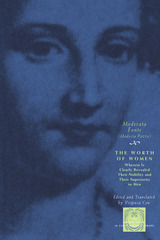 The Worth of Women: Wherein Is Clearly Revealed Their Nobility and Their Superiority to Men
Moderata Fonte
University of Chicago Press, 1997 Gender equality and the responsibility of husbands and fathers: issues that loom large today had currency in Renaissance Venice as well, as evidenced by the publication in 1600 of The Worth of Women by Moderata Fonte.
Moderata Fonte was the pseudonym of Modesta Pozzo (1555–92), a Venetian woman who was something of an anomaly. Neither cloistered in a convent nor as liberated from prevailing codes of decorum as a courtesan might be, Pozzo was a respectable, married mother who produced literature in genres that were commonly considered "masculine"—the chivalric romance and the literary dialogue. This work takes the form of the latter, with Fonte creating a conversation among seven Venetian noblewomen. The dialogue explores nearly every aspect of women's experience in both theoretical and practical terms. These women, who differ in age and experience, take as their broad theme men's curious hostility toward women and possible cures for it.
Through this witty and ambitious work, Fonte seeks to elevate women's status to that of men, arguing that women have the same innate abilities as men and, when similarly educated, prove their equals. Through this dialogue, Fonte provides a picture of the private and public lives of Renaissance women, ruminating on their roles in the home, in society, and in the arts.
A fine example of Renaissance vernacular literature, this book is also a testament to the enduring issues that women face, including the attempt to reconcile femininity with ambition.
Worth Their Salt
Colleen Whitley
Utah State University Press, 1996 This collection of 18 biographies portrays women of diverse cultural and social backgrounds who have made important but often unrecognized contributions to Utah's story, past and present. Included are such diverse figures as Mormon midwife Patty Sessions, African American pioneer Jane Manning James, actress Maude Adams, and prominent author and historian Helen Zeese Papanikolas.
Worth Their Salt Too: More Notable But Often Unnoted Women of Utah
Colleen Whitley
Utah State University Press, 2000 A follow-up to the highly successful Worth Their Salt, published in 1996, Worth Their Salt, Too brings together a new set of biographies of women whose roles in Utah's history have not been fully recognized, despite their significance to the social and cultural matrix, past and present, of the state. These women-community and government leaders, activists, artists, writers, scholars, politicians, and others-made important contributions to the state's history and culture. Some of them had experiences that reveal new aspects of the state's history, while others simply led lives so interesting that their stories beg to be told. This new collection demonstrates, as Worth Their Salt did, the diversity of Utah's society and the many different roles women have played in it.
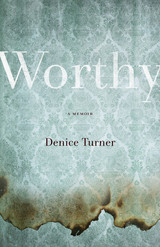 Worthy: A Memoir
Denice Turner
University of Nevada Press, 2015 Worthy is a memoir of loss and the search for acceptance. Raised in a Mormon household, Denice Turner strives to find her place in the Church, longing to be worthy of her mother’s love. When her mother dies in a suspicious house fire, Turner is forced to face the problems with the stories she inherited. Contemplating the price of worthiness, Turner grapples with the mystery of her mother’s death, seeking to understand her mother’s battle with chronic pain.
The story unfolds as Turner confronts a history that includes a Greek grandfather whose up-from-the-bootstraps legacy refuses to die, the ghosts of two suicidal uncles, and a Mormon shrink who claims to see her dead relatives. In the end, this is a memoir not just about loss, but about all of the fragile human bonds that are broken in pursuit of perfection.
Wry and extraordinarily candid, Worthy will appeal to readers interested in the dynamics of family heritage, Mormon doctrine, and the subtle corrosive costs of shame.
 Worthy Lamb: An Exegetical-Spiritual Commentary on John's Apocalypse
Andreas Hoeck
Saint Paul Seminary Press , 2024 This book is a systematic commentary on the Apocalypse of Saint John, examining each chapter and verse based on the original Greek and Latin texts. The underlying hermeneutic is an idealist or allegorical point of view that does not attempt to identify apocalyptic imagery with concrete historical events. Rather, symbols and metaphors are interpreted, with attention to their intertextuality, as paradigmatic of the epic battle between the forces of light and darkness, good and evil, the dragon and the Lamb, playing out not only in the vicissitudes of the world today, but also and especially in one’s personal life. Rather than focusing on sterile symbolisms, the book attempts to inspire a more radical discipleship of Jesus by applying the eschatological imagery to the realm of spiritual discernment. John’s Apocalypse is certainly considered the grand New Testament Theology of History, but here its ethical dualism is mainly taken as a challenge for the interior life, to enter into the worship before the throne of Christ the Lamb, and to realize that where evil makes war against the principles of good, God will remain in control at all times.
The author has drawn on two commentators whose work has not been translated and made widely accessible until now, Rupert of Deutz and Adrienne von Speyr. The book aims to relay Revelation’s message of Christ-centered faithfulness and perseverance, of virtue and holiness, once addressed to the seven churches in Asia, to a contemporary readership.
 Worthy Monuments: Art Museums and the Politics of Culture in Nineteenth-Century France
Daniel J. Sherman
Harvard University Press, 1989 Attracting controversy as readily as they do crowds, art museums--the Grand Louvre project and the new Orsay in Paris, or the proposed Whitney and Guggenheim additions in New York, for example--occupy a curious but central position in world culture. Choosing the art museums of provincial France in the previous century as a paradigm, Daniel Sherman reaches toward an understanding of the museum's place in modern society by exploring its past. He uses an array of previously unstudied archival sources as evidence that the museum's emergence as an institution involved not only the intricacies of national policy but also the political dynamics and social fabric of the nineteenth-century city.
The author ascertains that while the French state played an important role in the creation of provincial museums during the Revolutionary era, for much of the next century it was content simply to send works of art to the provinces. When in the 1880s the new Republican regime began to devote more attention to the real purposes and functions of provincial museums, officials were surprised to learn that the initiative had already passed into the hands of local elites who had nurtured their own museums from their inception.
Sherman devotes particular attention to the museums of Bordeaux, Dijon, Marseilles, and Rouen. From their origins as repositories for objects confiscated during the Revolution, they began to attract the attention of local governments, which started to add objects purchased at regional art exhibitions. In the period 1860-1890, monumental buildings were constructed, and these museums became identified with the cities' bourgeois leaders. This central connection with local elites has continued to our own day, and leads into the author's stimulating reflections on the art museum's past, present, and future.
This original and highly readable account should attract those with an interest in cultural institutions and art history in general as well as those who study the history and sociology of modern France.
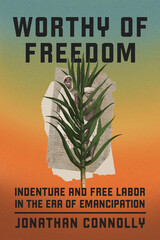 Worthy of Freedom: Indenture and Free Labor in the Era of Emancipation
Jonathan Connolly
University of Chicago Press, 2024 A study of Indian indentured labor in Mauritius, British Guiana, and Trinidad that explores the history of indenture’s normalization.
In this book, historian Jonathan Connolly traces the normalization of indenture from its controversial beginnings to its widespread adoption across the British Empire during the nineteenth century. Initially viewed as a covert revival of slavery, indenture caused a scandal in Britain and India. But over time, economic conflict in the colonies altered public perceptions of indenture, now increasingly viewed as a legitimate form of free labor and a means of preserving the promise of abolition. Connolly explains how the large-scale, state-sponsored migration of Indian subjects to work on sugar plantations across Mauritius, British Guiana, and Trinidad transformed both the notion of post-slavery free labor and the political economy of emancipation.
Excavating legal and public debates and tracing practical applications of the law, Connolly carefully reconstructs how the categories of free and unfree labor were made and remade to suit the interests of capital and empire, showing that emancipation was not simply a triumphal event but, rather, a deeply contested process. In so doing, he advances an original interpretation of how indenture changed the meaning of “freedom” in a post-abolition world.
 Worthy of Freedom: Indenture and Free Labor in the Era of Emancipation
Jonathan Connolly
University of Chicago Press, 2024 This is an auto-narrated audiobook version of this book.
A study of Indian indentured labor in Mauritius, British Guiana, and Trinidad that explores the history of indenture’s normalization.
In this book, historian Jonathan Connolly traces the normalization of indenture from its controversial beginnings to its widespread adoption across the British Empire during the nineteenth century. Initially viewed as a covert revival of slavery, indenture caused a scandal in Britain and India. But over time, economic conflict in the colonies altered public perceptions of indenture, now increasingly viewed as a legitimate form of free labor and a means of preserving the promise of abolition. Connolly explains how the large-scale, state-sponsored migration of Indian subjects to work on sugar plantations across Mauritius, British Guiana, and Trinidad transformed both the notion of post-slavery free labor and the political economy of emancipation.
Excavating legal and public debates and tracing practical applications of the law, Connolly carefully reconstructs how the categories of free and unfree labor were made and remade to suit the interests of capital and empire, showing that emancipation was not simply a triumphal event but, rather, a deeply contested process. In so doing, he advances an original interpretation of how indenture changed the meaning of “freedom” in a post-abolition world.
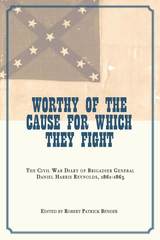 Worthy of the Cause for Which They Fight: The Civil War Diary of Brigadier General Harris Reynolds, 1861-1865
Robert Patrick Bender
University of Arkansas Press, 2011 Worthy of the Cause for Which They Fight chronicles the experiences of a well-educated and articulate Confederate officer from Arkansas who witnessed the full evolution of the Civil War in the Trans-Mississippi Department and western theater. Daniel Harris Reynolds, a community leader with a thriving law practice in Chicot County, entered service in 1861 as a captain in command of Company A of the First Arkansas Mounted Rifles. Reynolds saw action at Wilson's Creek and Pea Ridge before the regiment was dismounted and transferred to the Army of Tennessee, the primary Confederate force in the western theater. As Reynolds fought through the battles of Chickamauga, Atlanta, Nashville, and Bentonville, he consistently kept a diary in which he described the harsh realities of battle, the shifting fortunes of war, and the personal and political conflicts that characterized and sometimes divided the soldiers. The result is a significant testimonial offering valuable insights into the nature of command from the company to brigade levels, expressed by a committed Southerner coming to grips with the realities of defeat and the ultimate demoralization of surrender.
Would I Have Sexted Back in the 80s?: A Modern Guide to Parenting Digital Teens, Derived from Lessons of the Past
Allison Ochs
Amsterdam University Press, 2019 Since smartphones have made their debut, a clear sense of frustration can be felt by parents around the globe. Be it social media, bullying, porn, gaming, tv-series or sexting; parents are overwhelmed or insecure as they struggle to keep up with the yet newest app. Drawing on stories from her past, Allison Ochs reminds us of what it was like to be a teen. She makes you smile while making fun of her teen self. Her answers to today's problems are realistic ways to approach your teens who are dealing with the same emotions we had, however, now with their ever-present digital devices in hand. The simplicity of what she suggests will enlighten you as she gently nudges you to think about how you're dealing with the your teens online world.
Would We Still Be
James Henry Knippen
New Issues Poetry and Prose, 2021 Poems that acknowledge the existential anxieties of our age while continuing to celebrate the beauty and musicality of language.
In Would We Still Be, James Henry Knippen crafts the anxieties that emanate from human existence—grief, fear, hopelessness, uncertainty—into poetic reflections that express a deep reverence for the musicality and incantational capacity of language. Like a moon or a wren, two of the book’s obsessions, these haunting poems call us to consider beauty’s connection to the transitory. Among the ghosts that wander these pages—those of loved ones, those we are, and those we will become—Knippen asks if image is enough, if sound is enough, if faith is enough. In doing so, these poems seek out the soul’s communion with voice, encouraging us to sing our fate.
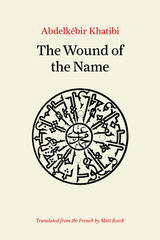 The Wound of the Name
Abdelkébir Khatibi and Matt Reeck
Northwestern University Press, 2025 Winner of the Global Humanities Translation Prize Abdelkébir Khatibi’s The Wound of the Name (1974) is a classic work of North African critical theory that seeks to decolonize French ways of looking at and writing about Maghreb cultures. Writing at the height of French semiotics’ popularity and prestige, Khatibi proposes intersemiotics as a study of signs that pass through related but different cultural geographies, times, and expressions. Proverbs, tattoos, the rhetoric of lovemaking, calligraphy, and oral storytelling show a circulation of cultural signifiers over, across, and against borders. Signs are not stagnant; meaning is not fixed. Khatibi’s intent is in keeping with his emergent double critique, which aims to redefine not only European understanding of North African culture but also North African self-understanding, by freeing it from the anthropological mandates of the modern colonial era as well as from the retrenched theocratic models that were characteristic of North African postcolonial states.
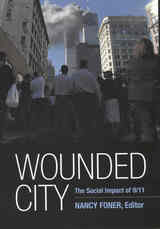 Wounded City: The Social Impact of 9/11 on New York City
Nancy Foner
Russell Sage Foundation, 2005 New York has eight million deeply personal and unique stories of pain and perseverance from September 11, 2001. But the toll of tragedy is greater than the anguish it inflicts on individuals—communities suffer as well. In Wounded City, editor Nancy Foner brings together an accomplished group of scholars to document how a broad range of communities—residential, occupational, ethnic, and civic—were affected and changed by the World Trade Center attacks. Using survey data and in-depth ethnographies, the book offers sophisticated analysis and gives voice to the human experiences behind the summary statistics, revealing how the nature of these communities shaped their response to the disaster. Sociologists Philip Kasinitz, Gregory Smithsimon, and Binh Pok highlight the importance of physical space in the recovery process by comparing life after 9/11 in two neighborhoods close to ground zero—Tribeca, which is nestled close to the city's downtown, and Battery Park City, which is geographically and structurally separated from other sections of the city. Melanie Hildebrandt looks at how social solidarity changed in a predominantly Irish, middle class community that was struck twice with tragedy: the loss of many residents on 9/11 and a deadly plane crash two months later. Jennifer Bryan shows that in the face of hostility and hate crimes, many Arab Muslims in Jersey City stressed their adherence to traditional Islam. Contributor Karen Seeley interviews psychotherapists who faced the challenge of trying to help patients deal with a tragedy that they themselves were profoundly affected by. Economist Daniel Beunza and sociologist David Stark paint a picture of organizational resilience as they detail how securities traders weathered successive crises after evacuating their downtown office and moving temporarily to New Jersey. Francesca Polletta and Lesley Wood look at a hopeful side of a horrible tragedy: civic involvement in town meetings and public deliberations to discuss what should be done to rebuild at ground zero and help New Yorkers create a better future in the footprints of disaster. New Yorkers suffered tremendous losses on September 11, 2001: thousands of lives, billions of dollars, the symbols of their skyline, and their peace of mind. But not lost in the rubble of the World Trade Center were the residential, ethnic, occupational, and organizational communities that make up New York's rich mosaic. Wounded City gives voice to some of those communities, showing how they dealt with unforeseen circumstances that created or deepened divisions, yet at the same brought them together in suffering and hope. It is a unique look at the aftermath of a devastating day and the vitality of a diverse city. A Russell Sage Foundation September 11 Initiative Volume
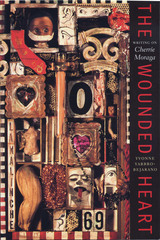 The Wounded Heart: Writing on Cherríe Moraga
By Yvonne Yarbro-Bejarano
University of Texas Press, 2001 In her work as poet, essayist, editor, dramatist, and public intellectual, Chicana lesbian writer Cherríe Moraga has been extremely influential in current debates on culture and identity as an ongoing, open-ended process. Analyzing the "in-between" spaces in Moraga's writing where race, gender, class, and sexuality intermingle, this first book-length study of Moraga's work focuses on her writing of the body and related material practices of sex, desire, and pleasure. Yvonne Yarbro-Bejarano divides the book into three sections, which analyze Moraga's writing of the body, her dramaturgy in the context of both dominant and alternative Western theatrical traditions, and her writing of identities and racialized desire. Through close textual readings of Loving in the War Years, Giving Up the Ghost, Shadow of a Man, Heroes and Saints, The Last Generation, and Waiting in the Wings, Yarbro-Bejarano contributes to the development of a language to talk about sexuality as potentially empowering, the place of desire within politics, and the intricate workings of racialized desire.
 Wounded I Am More Awake: Finding Meaning after Terror
Julia Lieblich
Vanderbilt University Press, 2012 Wounded I Am More Awake follows the story of Esad Boskailo, a doctor who survives six concentration camps in Bosnia and emerges with powerful new lessons for healing in an age of genocide.
This gripping account raises questions for healers, survivors, and readers striving to understand the reality of war and the aftermath of terror. Is it possible to find meaning after enduring crimes against humanity? Can people heal after trauma?
Human rights journalist Julia Lieblich takes the reader through Boskailo's early years under Tito to the wars when friends turned on friends. She documents his harrowing experiences in the camps, where the men he once joined for coffee murder his best friend from childhood.
But the story does not end there. Boskailo moves to the United States and decides to become a psychiatrist so he can guide survivors through the long-term process of restoring hope. Today, inspired by the late psychiatrist and Holocaust survivor Viktor Frankl, Boskailo uses his own experience to help patients mourn their losses and find meaning in the aftermath of terror.
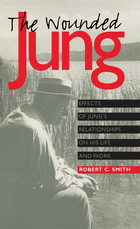 The Wounded Jung: Effects of Jung's Relationships on His Life and Work
Robert C. Smith
Northwestern University Press, 1997 Carl Jung, the founder of analytical psychology, is widely considered an intuitive genius with a profound understanding of the peculiar spiritual dilemmas of modern man. In this book, Robert C. Smith shows how Jung's interest in the healing of the psyche was rooted in the conflicts of his own childhood.
Smith begins by exploring Jung's formative and transformative life experience, including his relationships with a deeply troubled mother and despairing father, with Sigmund Freud, and with the various women in his life. The relationships to his parents, in particular, have been remarkably unexplored by scholars. Smith then shows how these experiences shaped Jung's thoughts and writing -including his reassessment of religion as inner process - as well as his fascination with gnosticism and alchemy; the attention Jung gives to psychology as myth and the realization of selfhood; and his reinterpretation of evil as a process to be integrated into the proper sphere of human existence.
Smith's findings are based on the unprecedented number of primary sources to which he had access, including archival research, his own interviews with many of Jung's intimates, and personal correspondence with Jung himself, as well as on the synthesis of a wide range of recent scholarship on Jung. The culmination of many years of scholarship and reflection, this book should be read by anyone interested in spiritual healing or the connection between psychology and religion.
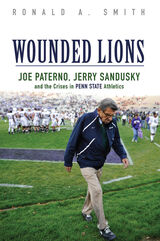 Wounded Lions: Joe Paterno, Jerry Sandusky, and the Crises in Penn State Athletics
Ronald A. Smith
University of Illinois Press, 2016 The Jerry Sandusky child molestation case stunned the nation. As subsequent revelations uncovered an athletic program operating free of oversight, university officials faced criminal charges while unprecedented NCAA sanctions hammered Penn State football and blackened the reputation of coach Joe Paterno. In Wounded Lions, acclaimed sport historian and longtime Penn State professor Ronald A. Smith heavily draws from university archives to answer the How? and Why? at the heart of the scandal. The Sandusky case was far from the first example of illegal behavior related to the football program or the university's attempts to suppress news of it. As Smith shows, decades of infighting among administrators, alumni, trustees, faculty, and coaches established policies intended to protect the university, and the football team considered synonymous with its name, at all costs. If the habits predated Paterno, they also became sanctified during his tenure. Smith names names to show how abuses of power warped the "Penn State Way" even with hires like women's basketball coach Rene Portland, who allegedly practiced sexual bias against players for decades. Smith also details a system that concealed Sandusky's horrific acts just as deftly as it whitewashed years of rules violations, coaching malfeasance, and player crime while Paterno set records and raised hundreds of millions of dollars for the university. A myth-shattering account of misplaced priorities, Wounded Lions charts the intertwined history of an elite university, its storied sports program, and the worst scandal in collegiate athletic history.
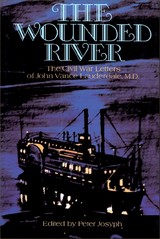 The Wounded River: The Civil War Letters of John Vance Lauderdale, M.D.
Peter Josyph
Michigan State University Press, 1993 The Wounded River takes the reader back more than 130 years to reveal a marvelous, first-hand account of nineteenth-century warfare. In the process, the work cuts the legends and mythology that have come to frame and define accounts of America's bloodiest war. Of equal significance, Peter Josyph's editorial work on this superb collection of letters from the Western Americana Division of Yale University's Beinecke Rare Book and Manuscripts Library enhances and clarifies Lauderdale's experinces as a surgeon aboard the U.S. Army hospital ship D. A. January.
The reader looks on while Lauderdale, a New York civilian contract surgeon, operates on hundreds of Confederate and Union wounded. The young doctor's clear writing style and his great compassion for these unfortunate men whose bodies were ripped apart by bullets, shell fragments, and bayonets permits us to catch a disturbiing glimpse of what modern warfare does to humanity. Finally, we learn of Lauderdale's motives for volunteering, his impressions of the "hospital ship" D. A. January, Confederate morale, the Abolitionist cause, and black slavery. The Wounded River is a must read for anyone interested in the real American Civil War.
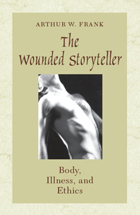 The Wounded Storyteller: Body, Illness, and Ethics
Arthur W. Frank
University of Chicago Press, 1995 In At the Will of the Body, Arthur Frank told the story of his own illnesses, heart attack and cancer. That book ended by describing the existence of a "remission society," whose members all live with some form of illness or disability. The Wounded Storyteller is their collective portrait.
Ill people are more than victims of disease or patients of medicine; they are wounded storytellers. People tell stories to make sense of their suffering; when they turn their diseases into stories, they find healing.
Drawing on the work of authors such as Oliver Sacks, Anatole Broyard, Norman Cousins, and Audre Lorde, as well as from people he met during the years he spent among different illness groups, Frank recounts a stirring collection of illness stories, ranging from the well-known—Gilda Radner's battle with ovarian cancer—to the private testimonials of people with cancer, chronic fatigue syndrome, and disabilties. Their stories are more than accounts of personal suffering: they abound with moral choices and point to a social ethic.
Frank identifies three basic narratives of illness in restitution, chaos, and quest. Restitution narratives anticipate getting well again and give prominence to the technology of cure. In chaos narratives, illness seems to stretch on forever, with no respite or redeeming insights. Quest narratives are about finding that insight as illness is transformed into a means for the ill person to become someone new.
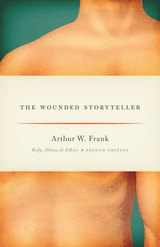 The Wounded Storyteller: Body, Illness, and Ethics, Second Edition
Arthur W. Frank
University of Chicago Press, 1997 Since it was first published in 1995, The Wounded Storyteller has occupied a unique place in the body of work on illness. Both the collective portrait of a so-called “remission society” of those who suffer from some type of illness or disability and a cogent analysis of their stories within a larger framework of narrative theory, Arthur W. Frank’s book has reached a large and diverse readership including the ill, medical professionals, and scholars of literary theory.
Drawing on the work of authors such as Oliver Sacks, Anatole Broyard, Norman Cousins, and Audre Lorde, as well as from people he met during the years he spent among different illness groups, Frank recounts a stirring collection of illness stories, ranging from the well-known—Gilda Radner's battle with ovarian cancer—to the private testimonials of people with cancer, chronic fatigue syndrome, and disabilities. Their stories are more than accounts of personal suffering: they abound with moral choices and point to a social ethic.
In this new edition Frank adds a preface describing the personal and cultural times when the first edition was written. His new afterword extends the book’s argument significantly, writing about storytelling and experience, other modes of illness narration, and a version of hope that is both realistic and aspirational. Reflecting on both his own life during the creation of the first edition and the conclusions of the book itself, Frank reminds us of the power of storytelling as way to understanding our own suffering.
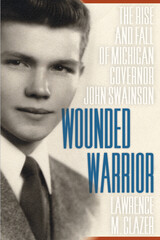 Wounded Warrior: The Rise and Fall of Michigan Governor John Swainson
Lawrence M. Glazer
Michigan State University Press, 2010 Few people today remember John Swainson. As a teenage soldier he lost both legs in a WWII landmine explosion. Back in the United States, following a meteoric political rise in the Michigan State Senate, Swainson was elected as Michigan's youngest governor since Stevens T. Mason.
In 1970 Swainson was elected to the Michigan Supreme Court, becoming one of the few public officials to have served in the legislative, executive, and judicial branches of state government. Then, in 1957, he was indicted on federal charges of bribery and perjury, and convicted of lying to a federal grand jury. Forced to leave the state Supreme Court and disbarred from practicing law, he became a pariah, sinking into depression and alcoholism. He virtually disappeared from public view.
Lawrence M. Glazer re-examines the FBI's investigation of Swainson and delves into his 1975 trial in detail. He reveals new information from eye-witnesses who never testified and, in a poignant coda, relates the little-known story of Swainson's rehabilitation and return to public life as a historian.
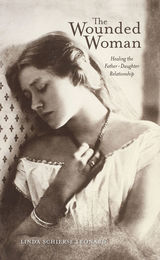 The Wounded Woman: Healing the Father-Daughter Relationship
Linda Schierse Leonard
Ohio University Press, 1982 This book is an invaluable key to self-understanding. Using examples from her own life and the lives of her clients, as well as from dreams, fairy tales, myths, films, and literature, Linda Schierse Leonard, a Jungian analyst, exposes the wound of the spirit that both men and women of our culture bear—a wound that is grounded in a poor relationship between masculine and feminine principles. Leonard speculates that when a father is wounded in his own psychological development, he is not able to give his daughter the care and guidance she needs. Inheriting this wound, she may find that her ability to express herself professionally, intellectually, sexually, and socially is impaired. On a broader scale, Leonard discusses how women compensate for cultural devaluation, resorting to passive submission (“the Eternal Girl”), or a defensive imitation of the masculine (“the Armored Amazon”). The Wounded Woman shows that by understanding the father-daughter wound and working to transform it psychologically, it is possible to achieve a fruitful, caring relationship between men and women, between fathers and daughters, a relationship that honors both the mutuality and the uniqueness of the sexes.
 Wounds of War
Julie M. Lamb, Marcy Levy, and Michael R. Reich
Harvard University Press, 2004 In the last half century, the nature of war has changed dramatically. Wars in the post–Cold War period have occurred mainly within national borders rather than between sovereign states. In these conflicts, civilians are increasingly the deliberate targets of war rather than accidental victims. Women and children in particular have become the intentional targets of murder, rape, and kidnapping.
The book focuses on the impact of war on women and girls, and the potential for women as peacemakers. The text addresses major policy issues facing organizations involved in humanitarian assistance, and highlights actions to address and resolve armed violence and conflict.
Wounds of War presents ten country profiles, along with information on eleven key topics related to the impacts of war, including the economies of war, small arms and light weapons, landmines, violence against women and girls, and missing persons.
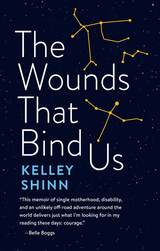 The Wounds That Bind Us
Kelley Shinn
West Virginia University Press, 2023 The improbable and powerful true story of a single mother with prosthetics for both legs who travels the globe with her young daughter in a Land Rover.
“A harrowing memoir. . . . Readers may not want to follow in [Shinn’s] footsteps, but they will never be bored with her as a companion.” —Kirkus Reviews
The Wounds That Bind Us is the improbable true story of Kelley Shinn, an orphan at birth who loses her legs at the age of sixteen to a rare bacterial pathogen. She becomes an avid off-road racer and, as a single mother, attempts to drive around the globe in a Land Rover with her three-year-old daughter in tow to bring light to the plight of land mine survivors. With unflinching honesty, exceptional lyricism, and biting humor, Shinn (“that’s two Ns and no shins”) takes readers on a wild journey—literal and emotional—filled with striking characters and landscapes, heartbreaks, and hard-won insights, ultimately arriving at a place of profound redemption. Told with the energy and intensity of the adventure story it is, this terrifically rich and nuanced examination of a life is also a careful meditation on renewal—a remapping of the world. Guided by the narrator’s keen introspection and her ability to look resolutely at harrowing sorrows and still find hope, joy, and meaning, The Wounds That Bind Us will resonate deeply, long after the last page.
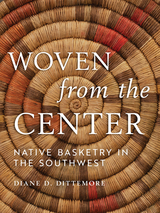 Woven from the Center: Native Basketry in the Southwest
Diane D. Dittemore
University of Arizona Press, 2024 In the beginning was basketry. Around the world, the intertwining of fibers by hand to form a container is a most ancient of crafts. It is older than pottery and metalwork, older than loom weaving.
Woven from the Center presents breathtaking basketry from some of the greatest weavers in the Southwest. Each sandal and mat fragment, each bowl and jar, every water bottle and whimsy is infused with layers of aesthetic, cultural, and historical meanings. This book offers stunning photos and descriptions of woven works from Tohono O’odham, Akimel O’odham, Hopi, Western Apache, Yavapai, Navajo, Pai, Paiute, New Mexico Pueblo, Eastern Apache, Seri, Yaqui, Mayo, and Tarahumara communities.
This richly illustrated volume stands on its own as a definitive look at basketry of the Greater Southwest, including northern Mexico. It also serves as a companion to the peerless collection of U.S. Southwest and Northwest Mexican Native American basketry curated at the Arizona State Museum in Tucson, Arizona. Comprehensive in its coverage, this work is based on decades of research on weavers, collectors, and donors. It includes ample illustrations of basket weavers, past and present, bringing to life the people behind these wonderful woven treasures.
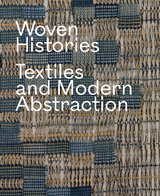 Woven Histories: Textiles and Modern Abstraction
Edited by Lynne Cooke
University of Chicago Press, 2023 Richly illustrated volume exploring the inseparable histories of modernist abstraction and twentieth-century textiles.
Published on the occasion of an exhibition curated by Lynne Cooke, Woven Histories offers a fresh and authoritative look at textiles—particularly weaving—as a major force in the evolution of abstraction. This richly illustrated volume features more than fifty creators whose work crosses divisions and hierarchies formerly segregating the fine arts from the applied arts and handicrafts.
Woven Histories begins in the early twentieth century, rooting the abstract art of Sophie Taeuber-Arp in the applied arts and handicrafts, then features the interdisciplinary practices of Anni Albers, Sonia Delaunay, Liubov Popova, Varvara Stepanova, and others who sought to effect social change through fabrics for furnishings and apparel. Over the century, the intersection of textiles and abstraction engaged artists from Ed Rossbach, Kay Sekimachi, Ruth Asawa, Lenore Tawney, and Sheila Hicks to Rosemarie Trockel, Ellen Lesperance, Jeffrey Gibson, Igshaan Adams, and Liz Collins, whose textile-based works continue to shape this discourse. Including essays by distinguished art historians as well as reflections from contemporary artists, this ambitious project traces the intertwined histories of textiles and abstraction as vehicles through which artists probe urgent issues of our time.
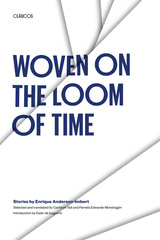 Woven on the Loom of Time: Stories by Enrique Anderson-Imbert
Selected and translated by Carleton Vail and Pamela Edwards-Mondragón
University of Texas Press, 1990 Argentinian scholar and writer Enrique Anderson-Imbert is familiar to many North American students for his La Literatura de América Latina I and II, which are widely used in college Spanish courses. But Anderson-Imbert is also a noted creative writer, whose use of "magical realism" helped pave the way for such writers as Borges, Cortázar, Sábato, and Ocampo. In this anthology, Carleton Vail and Pamela Edwards-Mondragón have chosen stories from the period 1965 to 1985 to introduce English-speaking readers to the creative work of Enrique Anderson-Imbert. Representative stories from the collections The Cheshire Cat, The Swindler Retires, Madness Plays at Chess, Klein's Bottle, Two Women and One Julián, and The Size of the Witches illustrate Anderson-Imbert's unique style and world view. Many are "short short" stories, which Anderson-Imbert calls casos (instances). The range of subjects and points of view varies widely, challenging such "realities" as time and space, right and wrong, science and religion. In a prologue, Anderson-Imbert tells an imaginary reader, "Each one of my stories is a closed entity, brief because it has caught a single spasm of life in a single leap of fantasy. Only a reading of all my stories will reveal my world-view." The reader asks, "And are you sure that it is worth the trouble?" Anderson-Imbert replies, "No." The unexpected, ironic ending is one of the great pleasures of reading Enrique Anderson-Imbert.
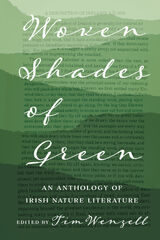 Woven Shades of Green: An Anthology of Irish Nature Literature
Tim Wenzell
Bucknell University Press, 2019 Woven Shades of Green is an annotated selection of literature by authors who focus on the natural world and the beauty of Ireland. It begins with the Irish monks and their largely anonymous nature poetry, written at a time when Ireland was heavily forested. A section follows devoted to the changing Irish landscape, through both deforestation and famine, including the nature poetry of William Allingham, and James Clarence Mangan, essays from Thomas Gainford and William Thackerary, and novel excerpts from William Carleton and Emily Lawless. The anthology then turns to the nature literature of the Irish Literary Revival, including Yeats and Synge, and an excerpt from George Moore’s novel The Lake. Part four shifts to modern Irish nature poetry, beginning with Patrick Kavanaugh, and continuing with the poetry of Seamus Heaney, Eavan Boland, and others. Finally, the anthology concludes with a section on various Irish naturalist writers, and the unique prose and philosophical nature writing of John Moriarty, followed by a comprehensive list of environmental organizations in Ireland, which seek to preserve the natural beauty of this unique country.
Published by Bucknell University Press. Distributed worldwide by Rutgers University Press.
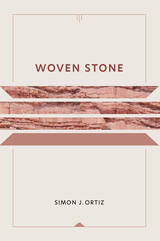 Woven Stone
Simon J. Ortiz
University of Arizona Press, 1992 "What I do as a writer, teacher, and storyteller is to demystify language," says Simon Ortiz. Widely regarded as one of the country's most important Native American poets, Ortiz has led a thirty-year career marked by a fascination with language—and by a love of his people. This omnibus of three previous works offers old and new readers an appreciation of the fruits of his dedication.
Going for the Rain (1976) expresses closeness to a specific Native American way of life and its philosophy and is structured in the narrative form of a journey on the road of life. A Good Journey (1977), an evocation of Ortiz's constant awareness of his heritage, draws on the oral tradition of his Pueblo culture. Fight Back: For the Sake of the People, For the Sake of the Land (1980)—revised for this volume—has its origins in his work as a laborer in the uranium industry and is intended as a political observation and statement about that industry's effects on Native American lands and lives.
In an introduction written for this volume, Ortiz tells of his boyhood in Acoma Pueblo, his early love for language, his education, and his exposure to the wider world. He traces his development as a writer, recalling his attraction to the Beats and his growing political awareness, especially a consciousness of his and other people's social struggle.
"Native American writers must have an individual and communally unified commitment to their art and its relationship to their indigenous culture and people," writes Ortiz. "Through our poetry, prose, and other written works that evoke love, respect, and responsibility, Native Americans may be able to help the United States of America to go beyond survival."
WP vol 46 num 4
The University of Chicago Press
University of Chicago Press Journals, 2012
|
|
